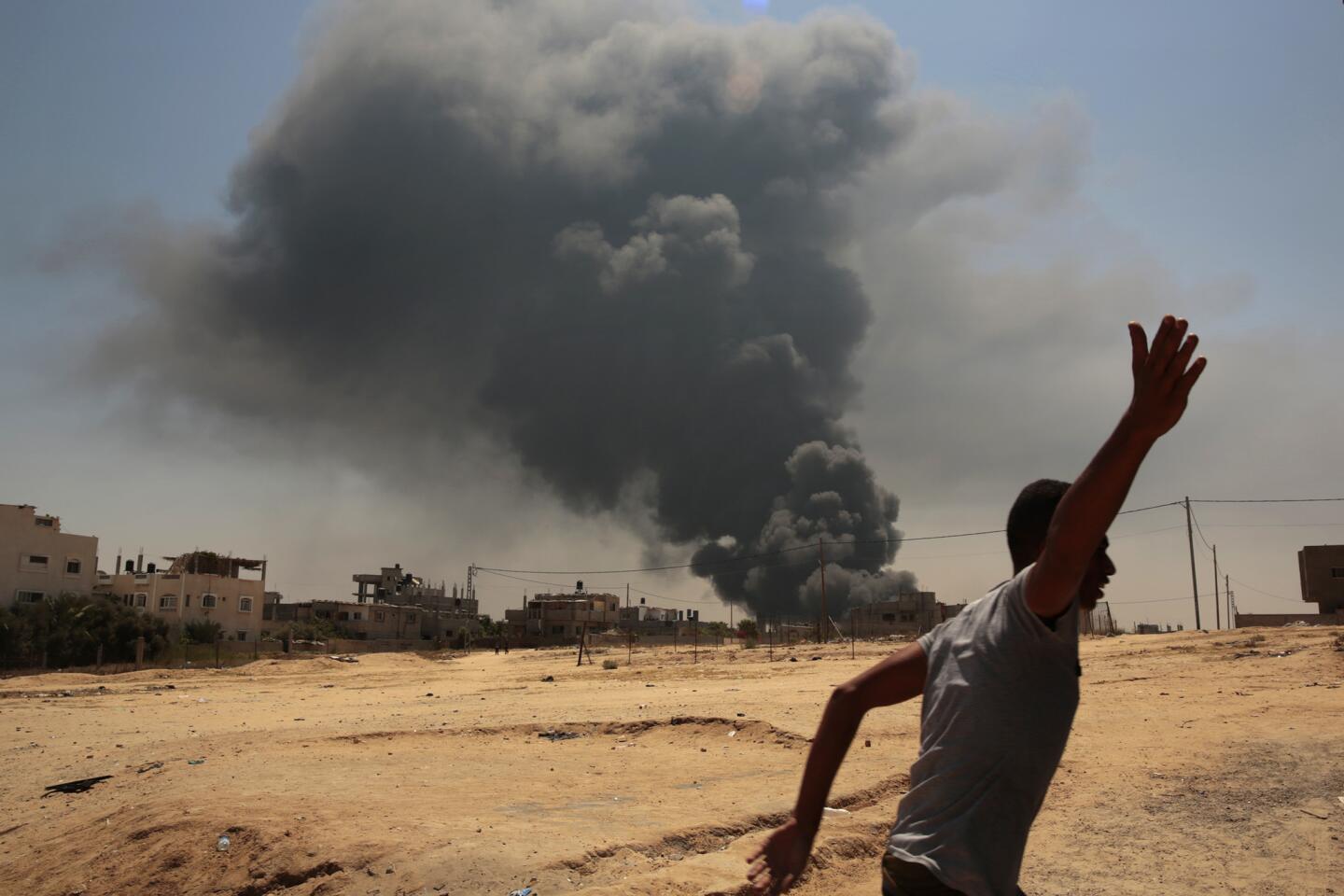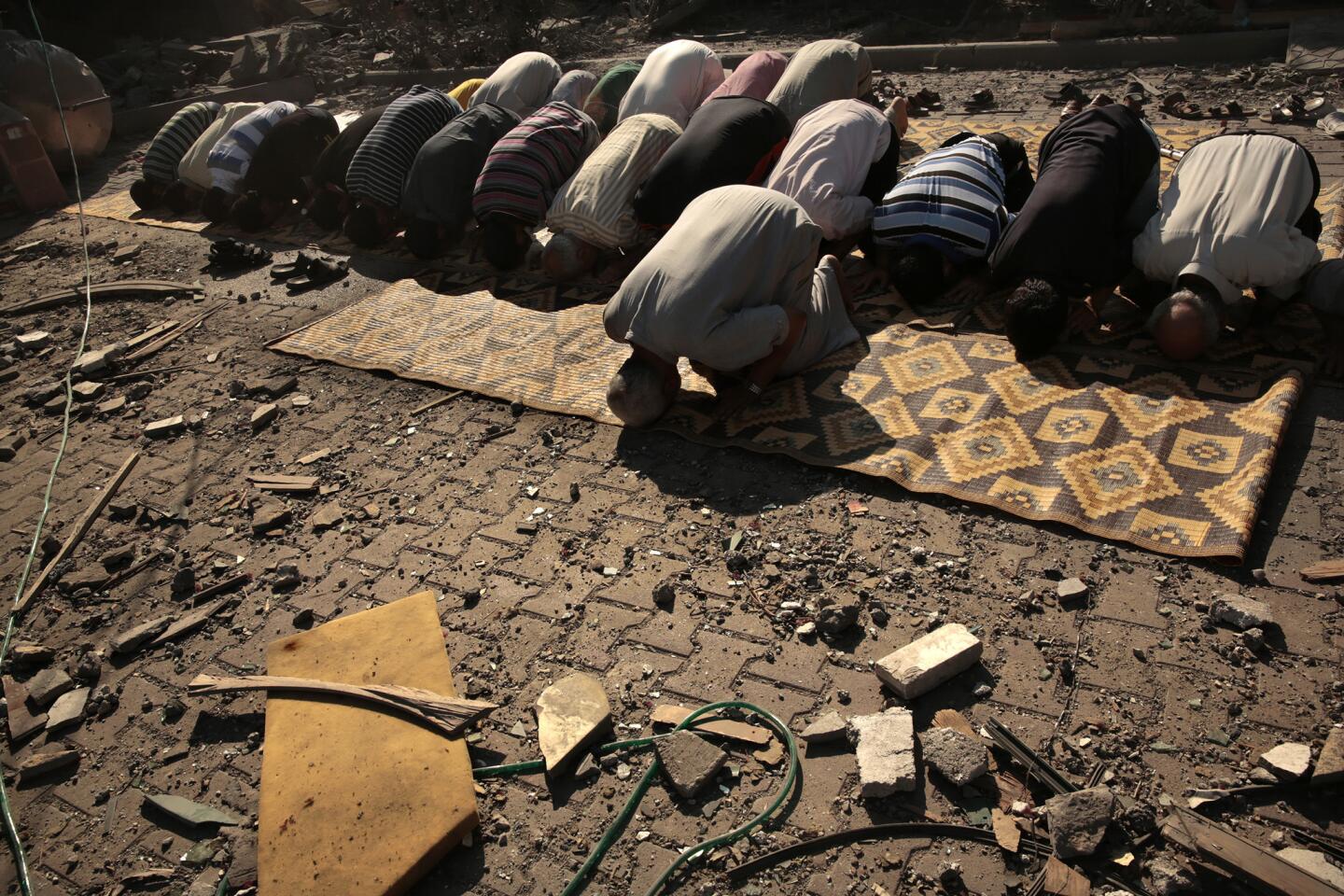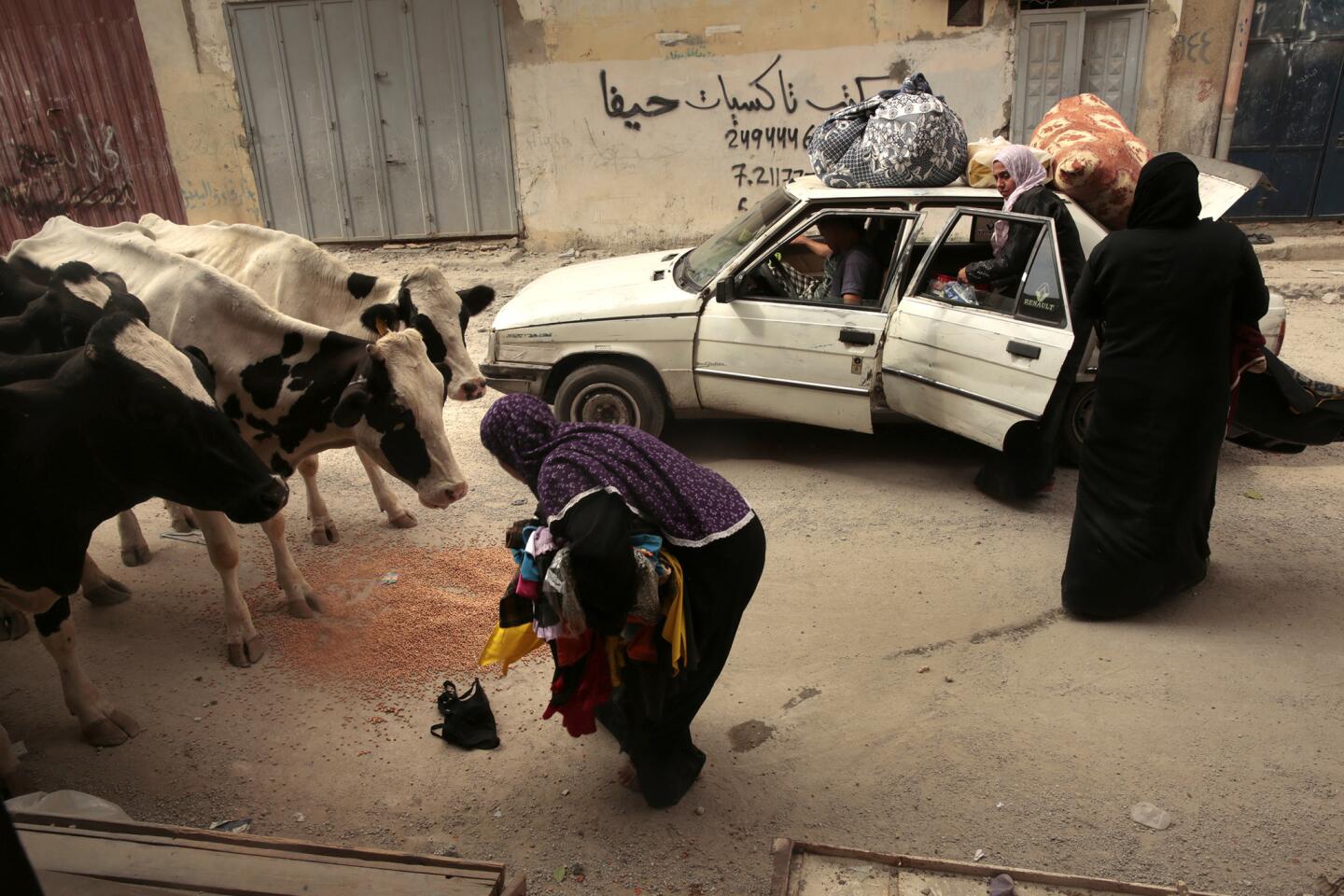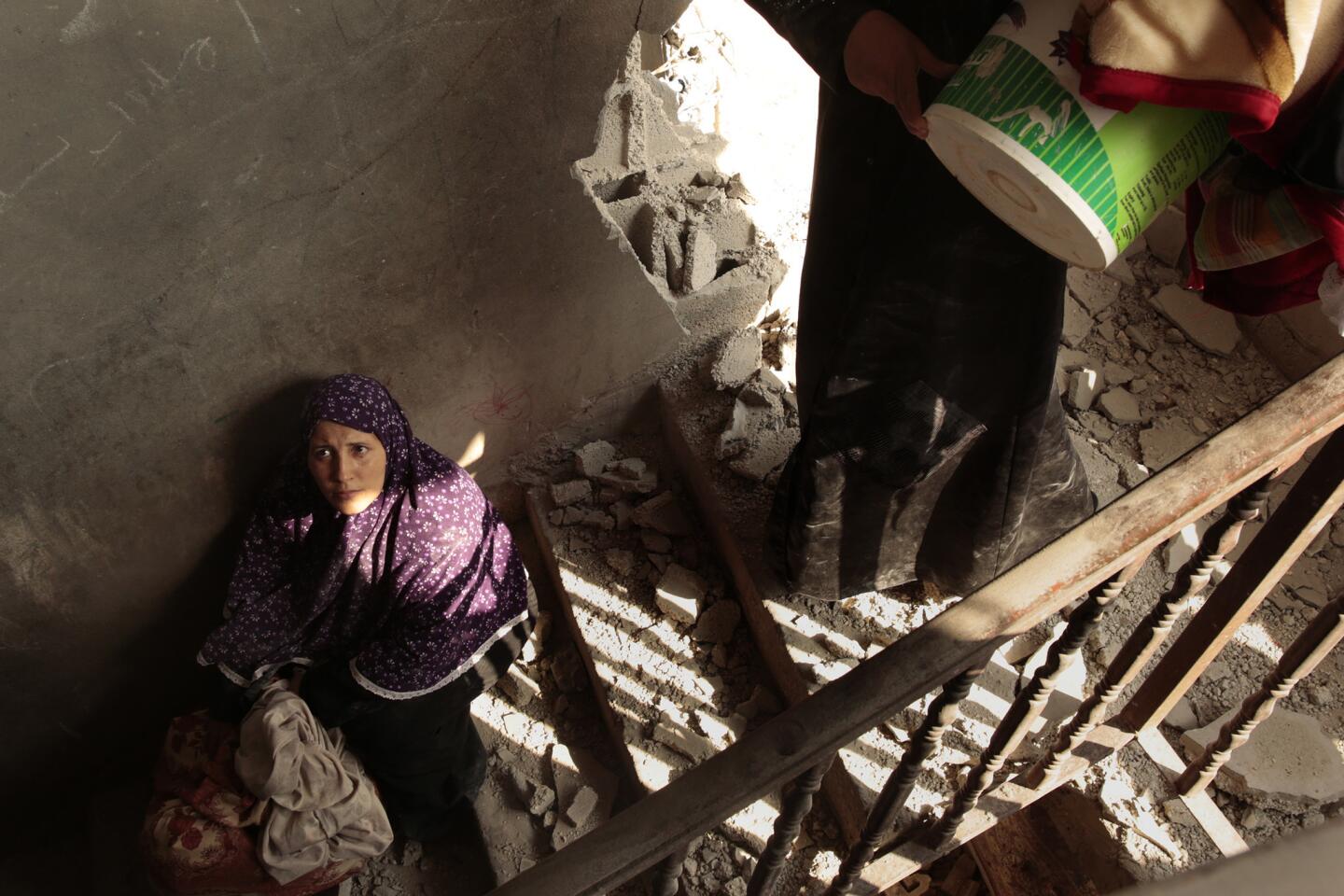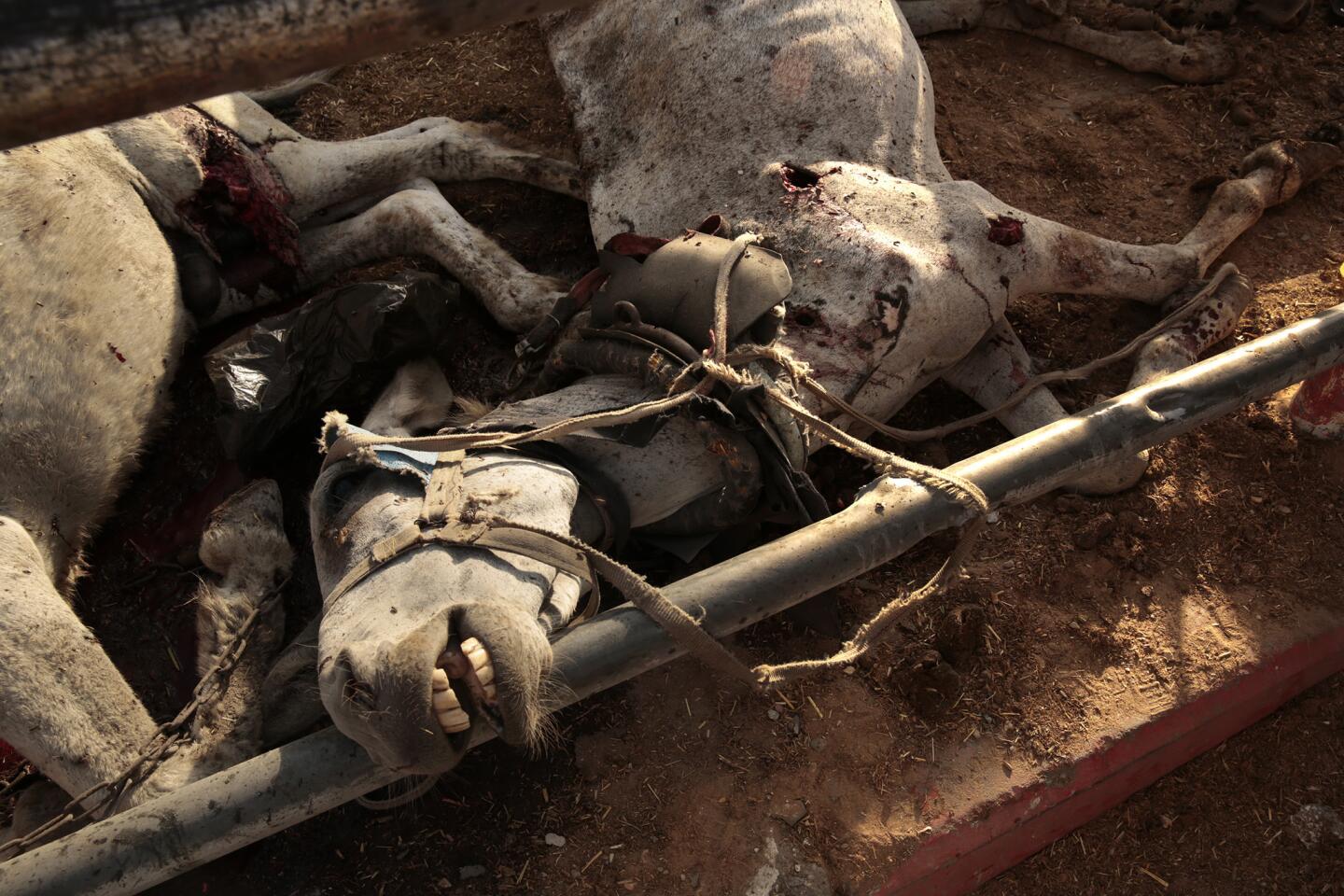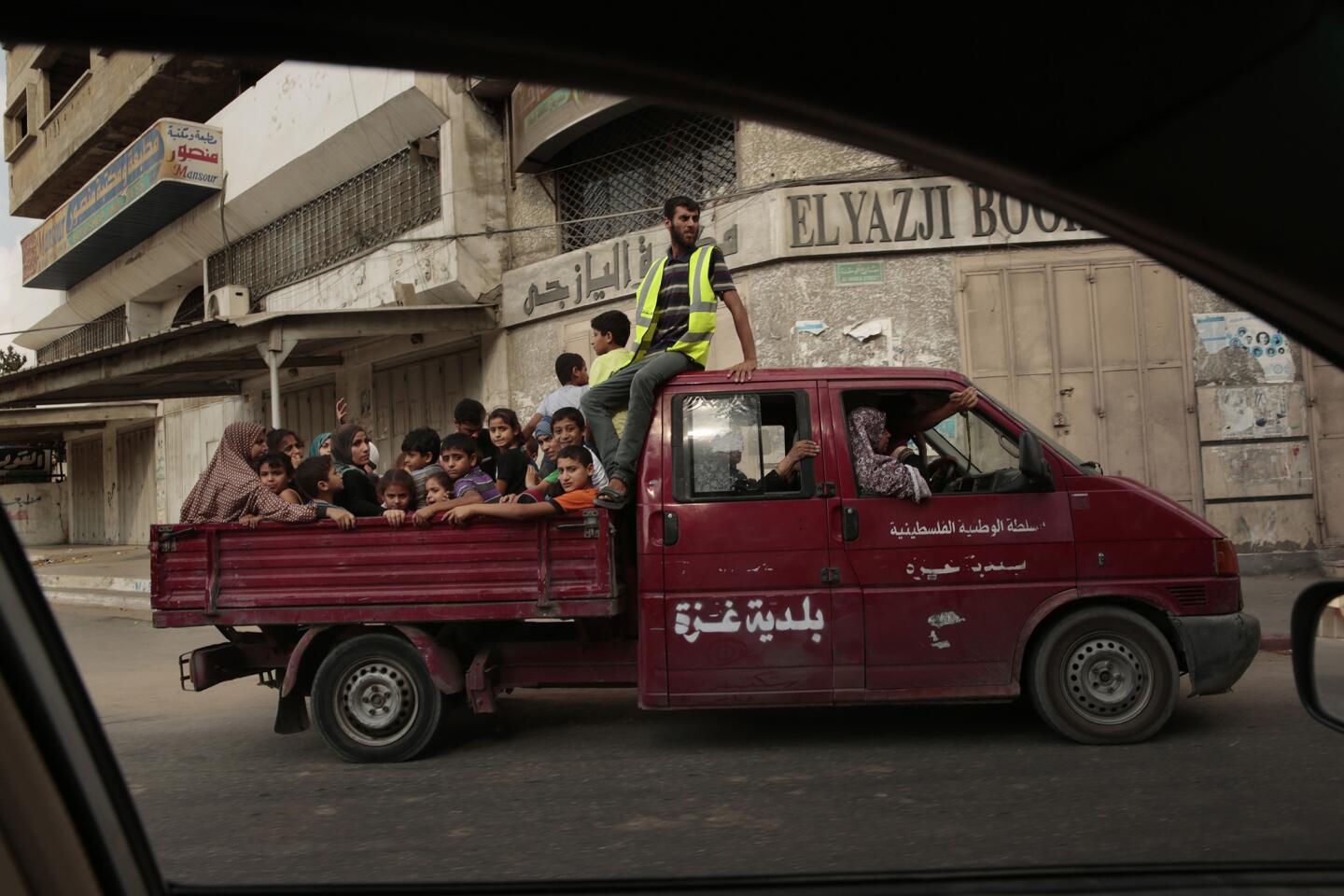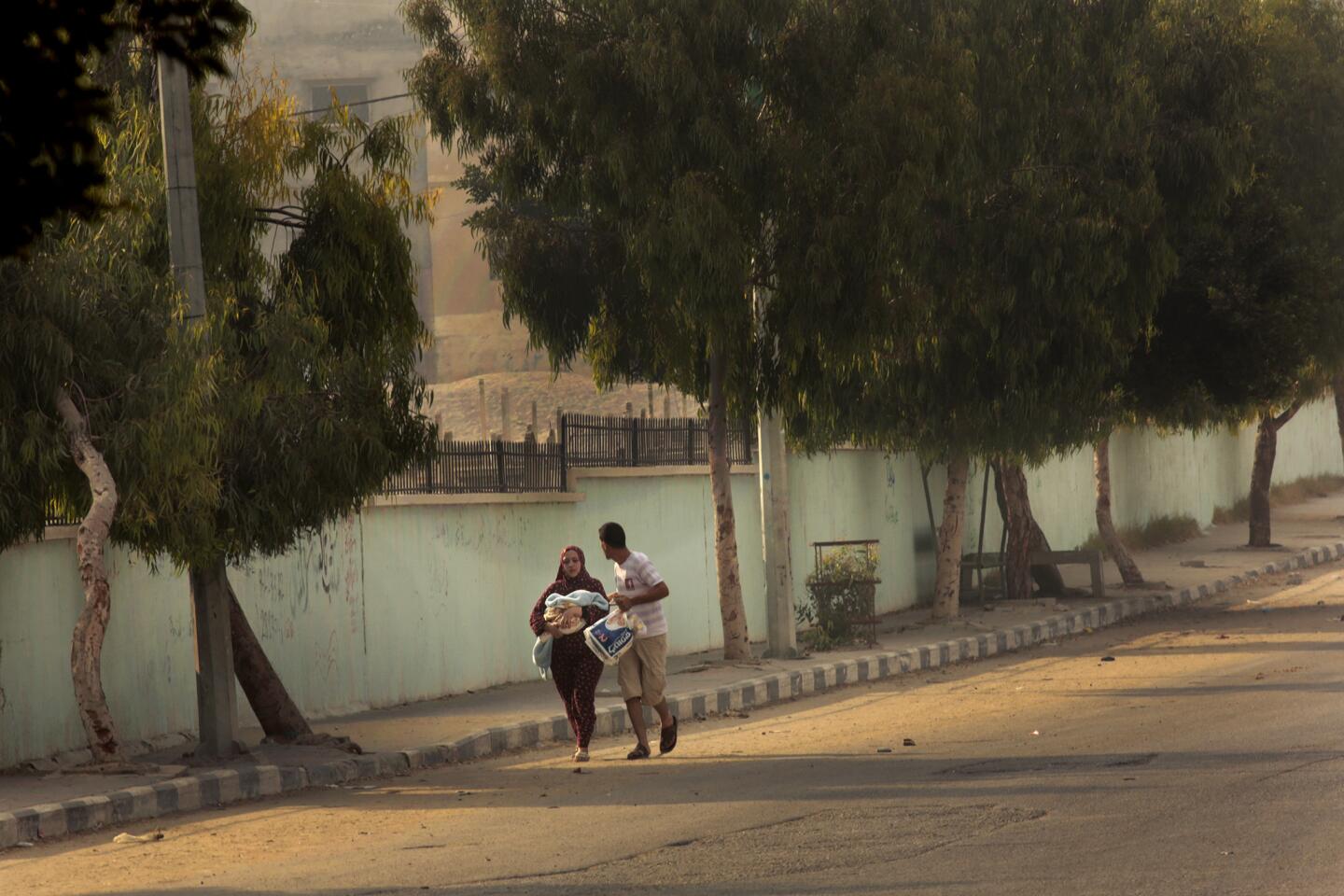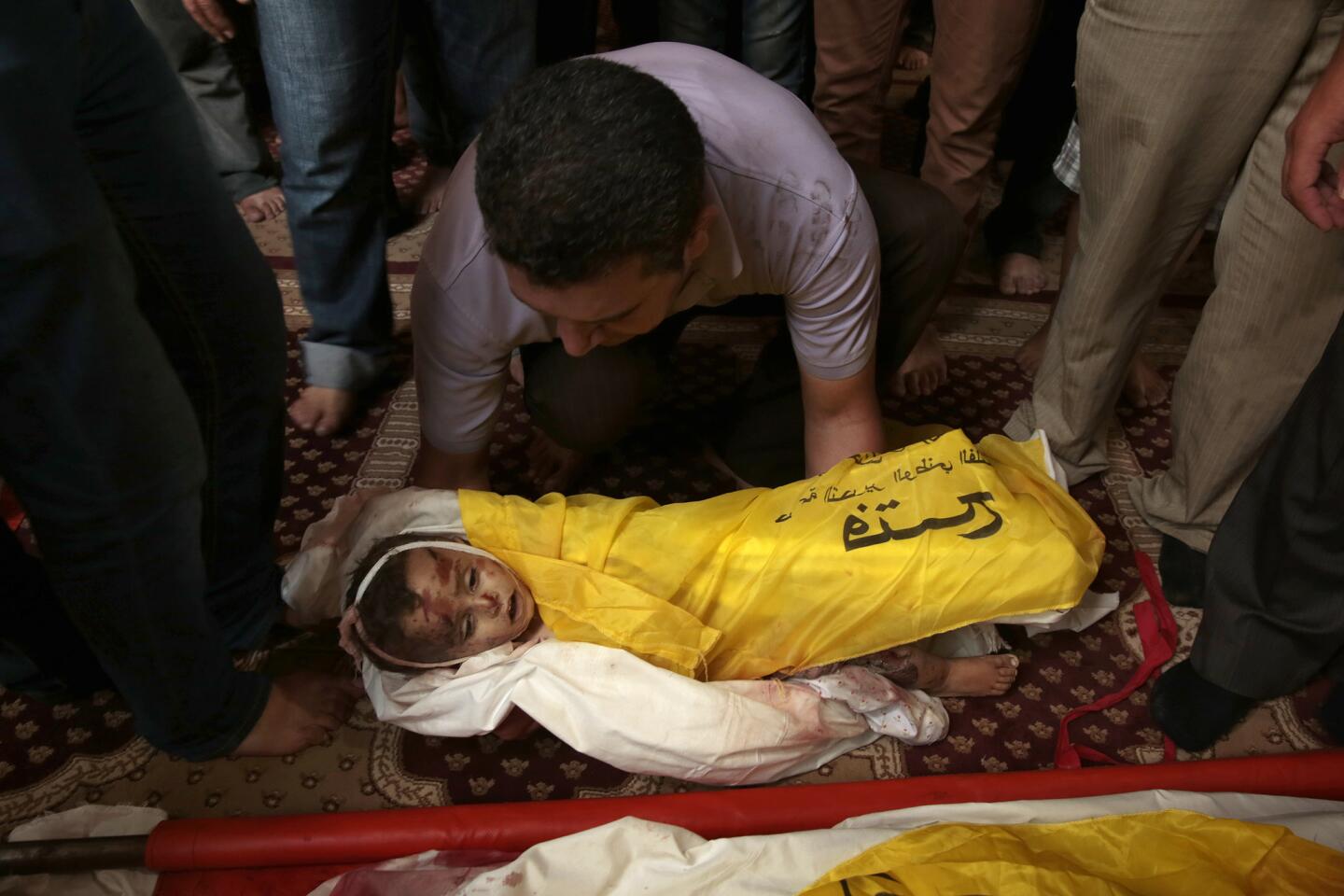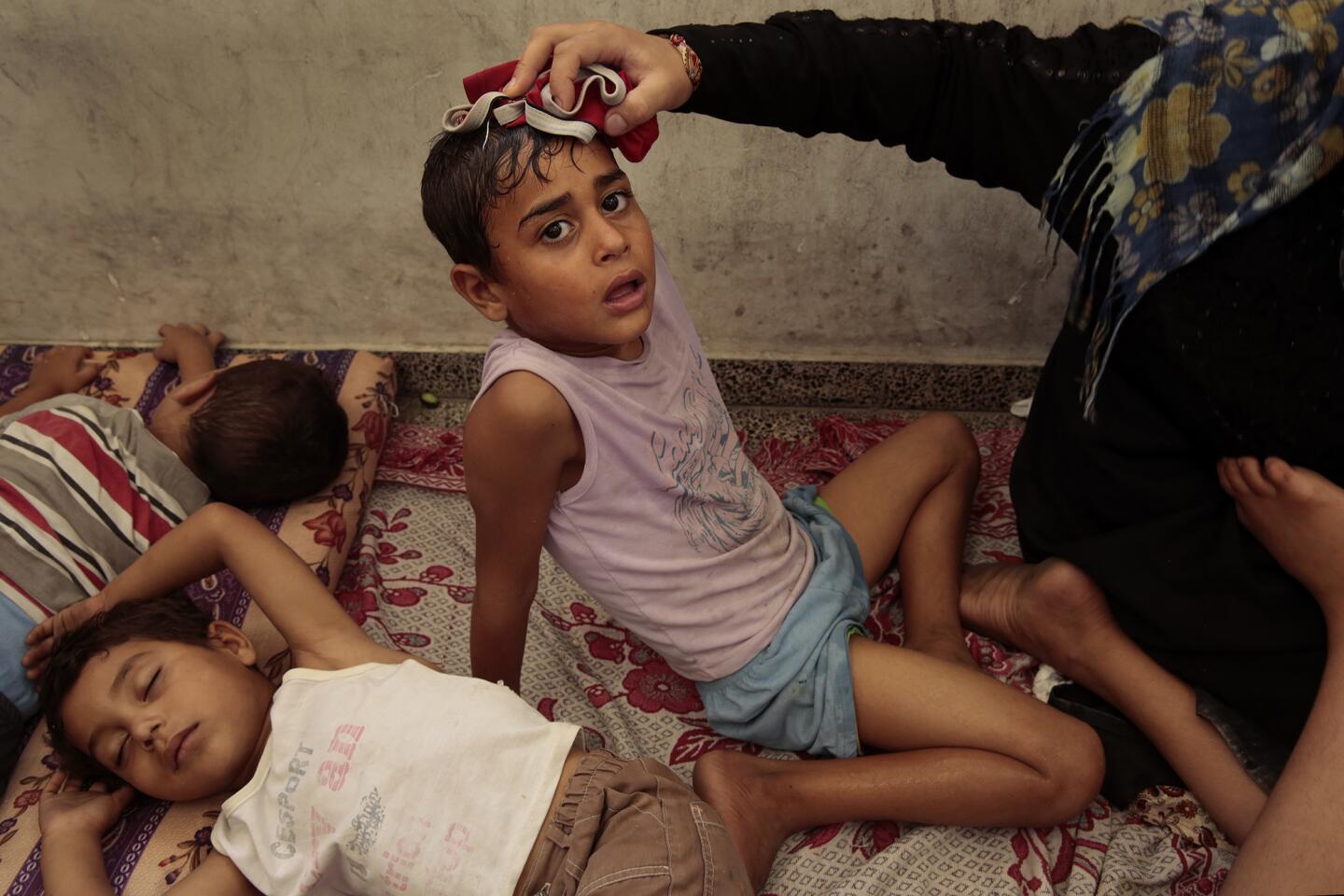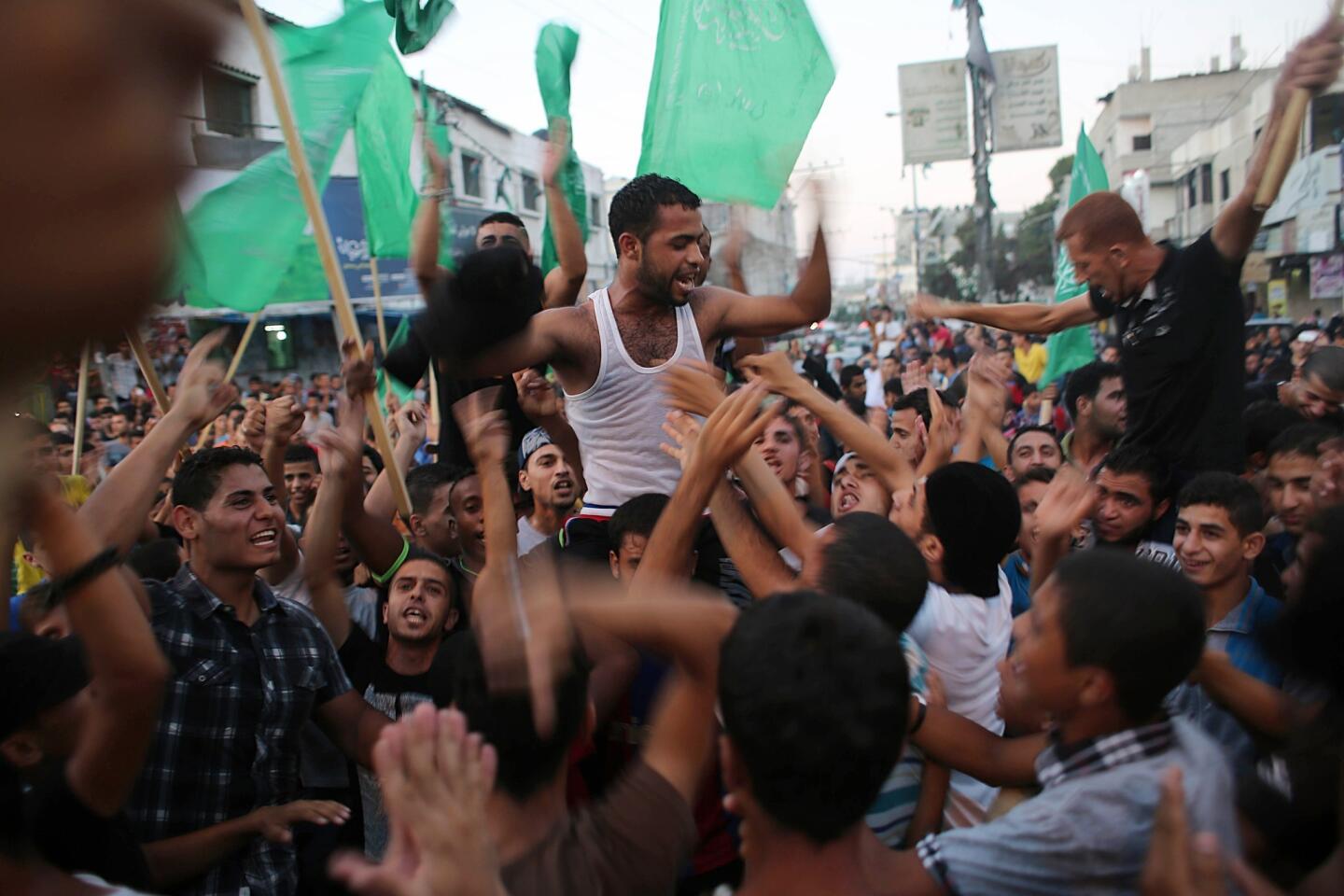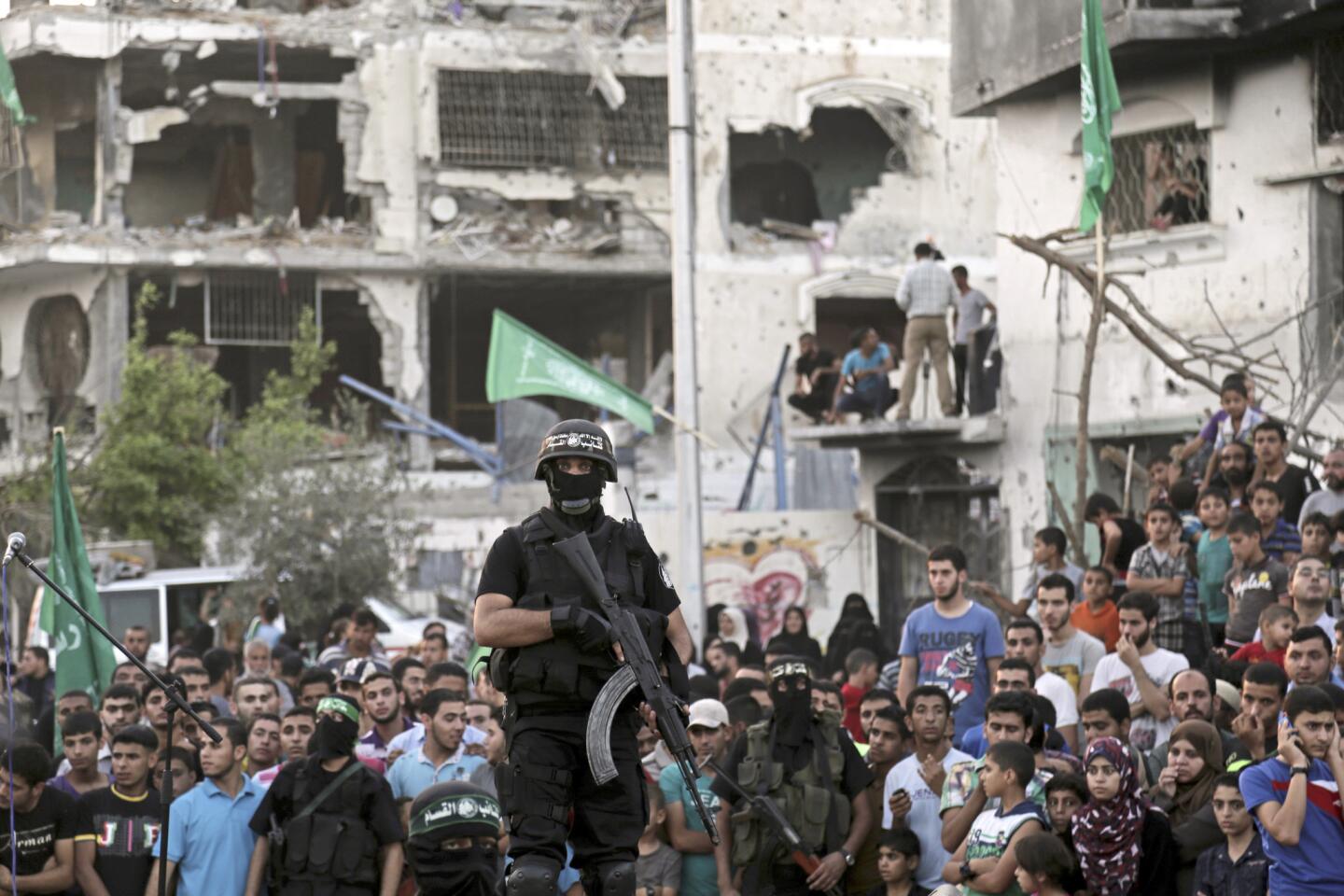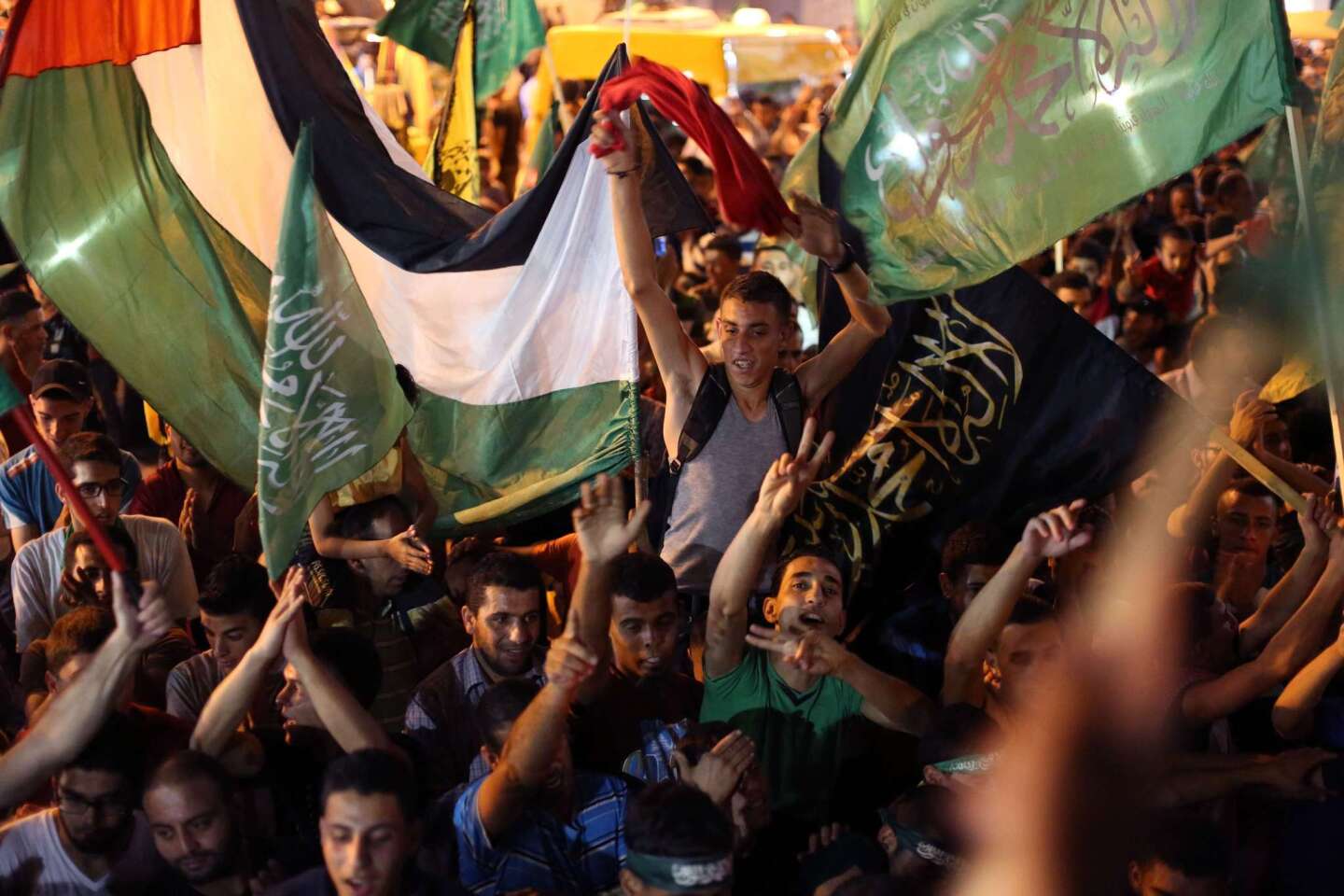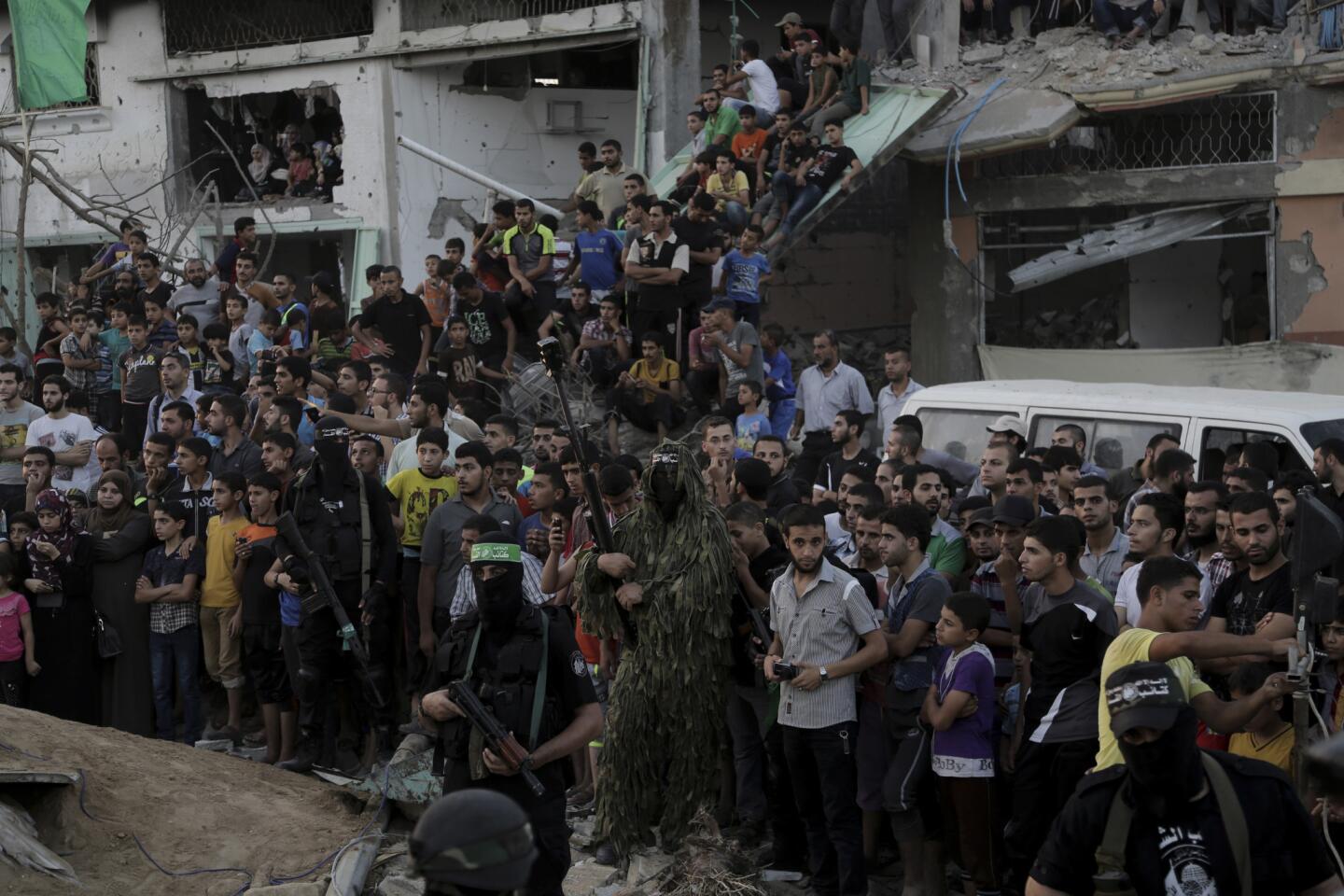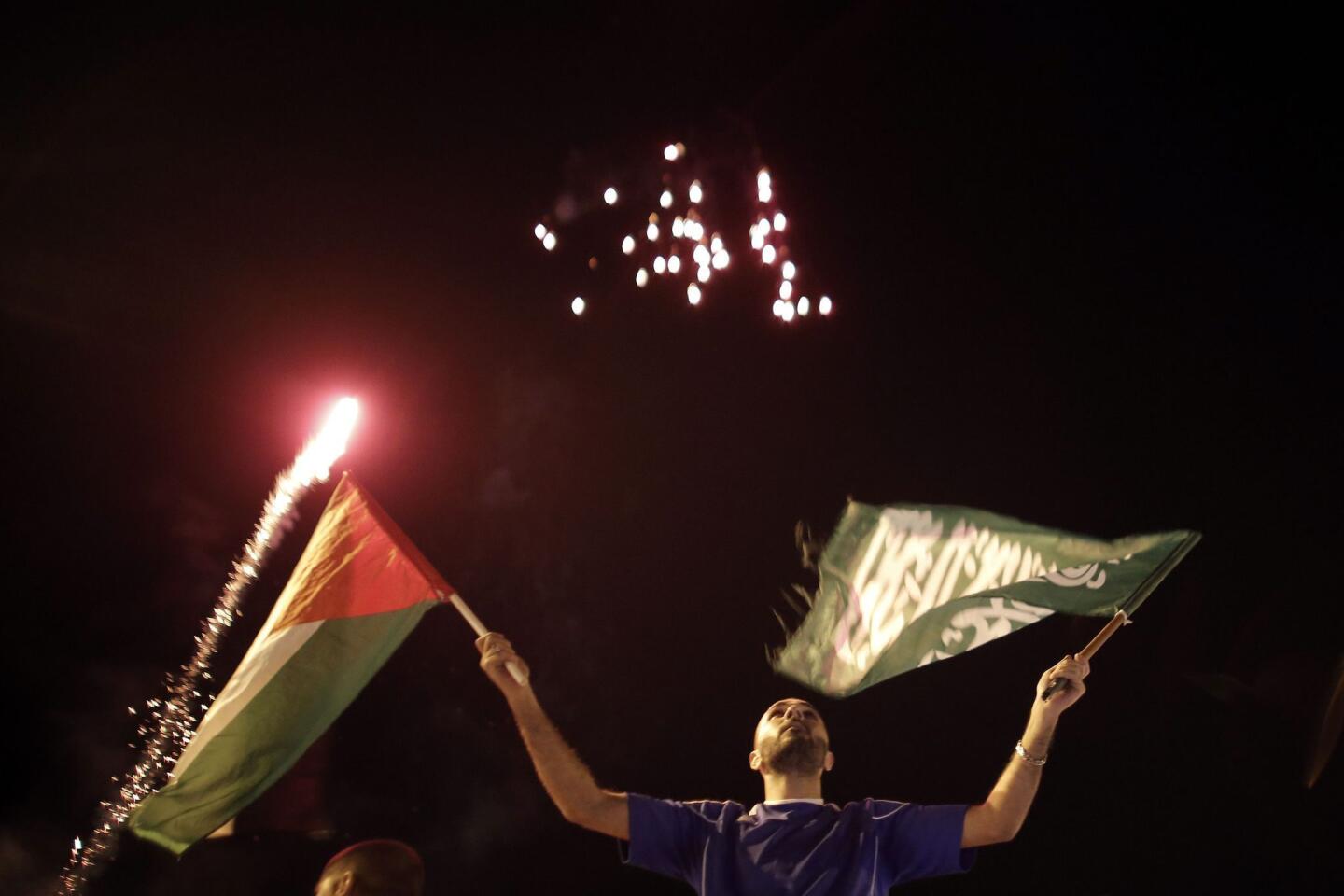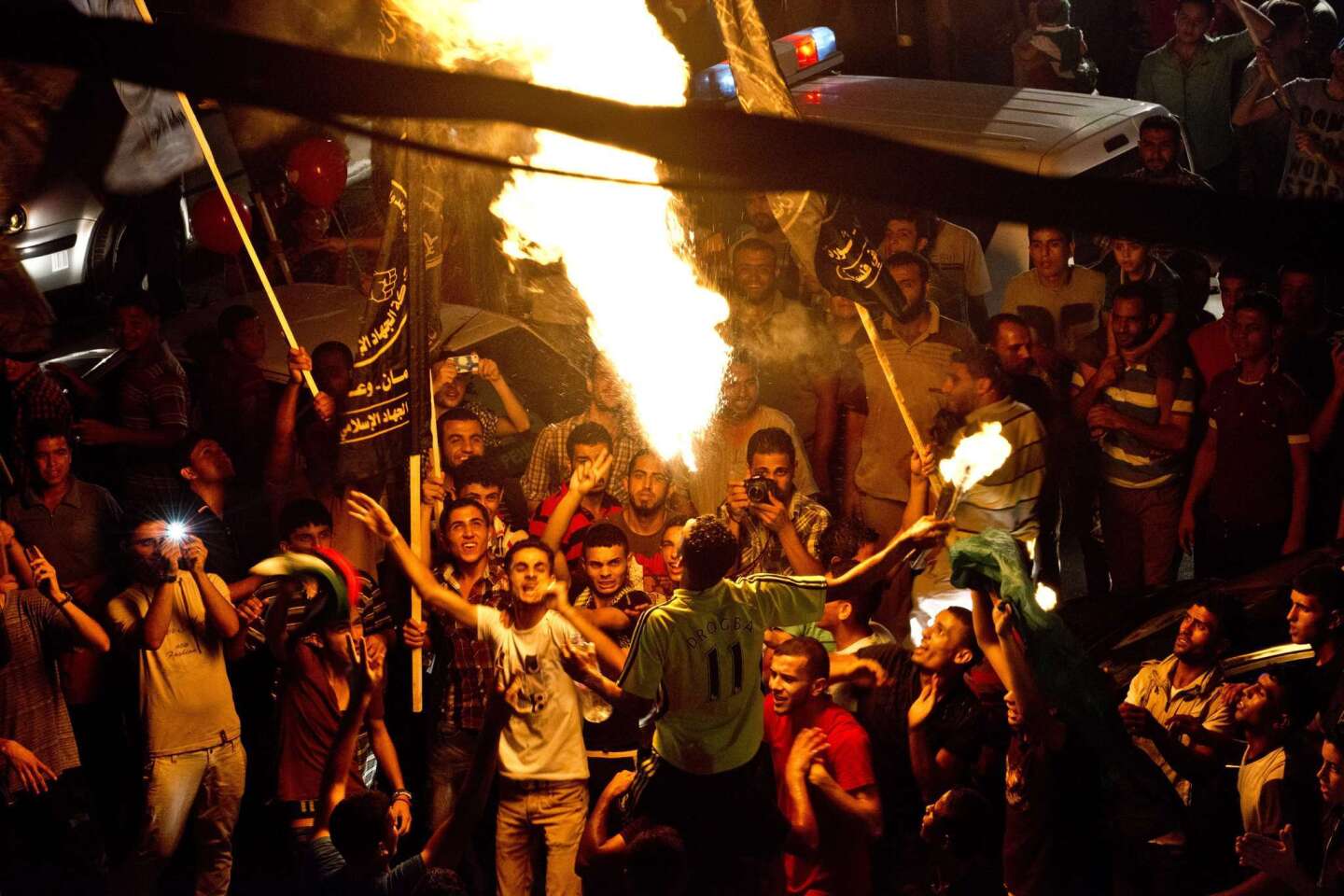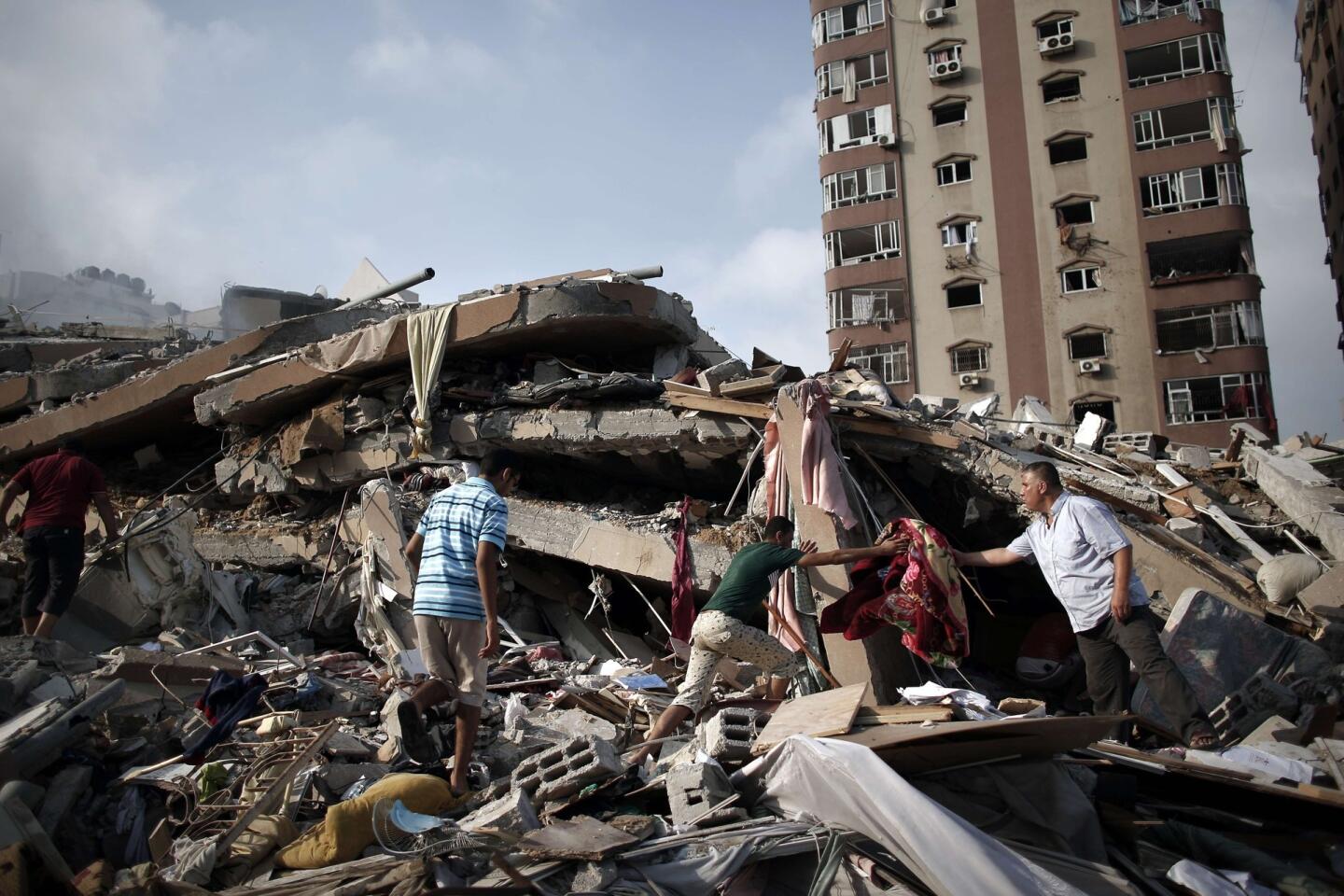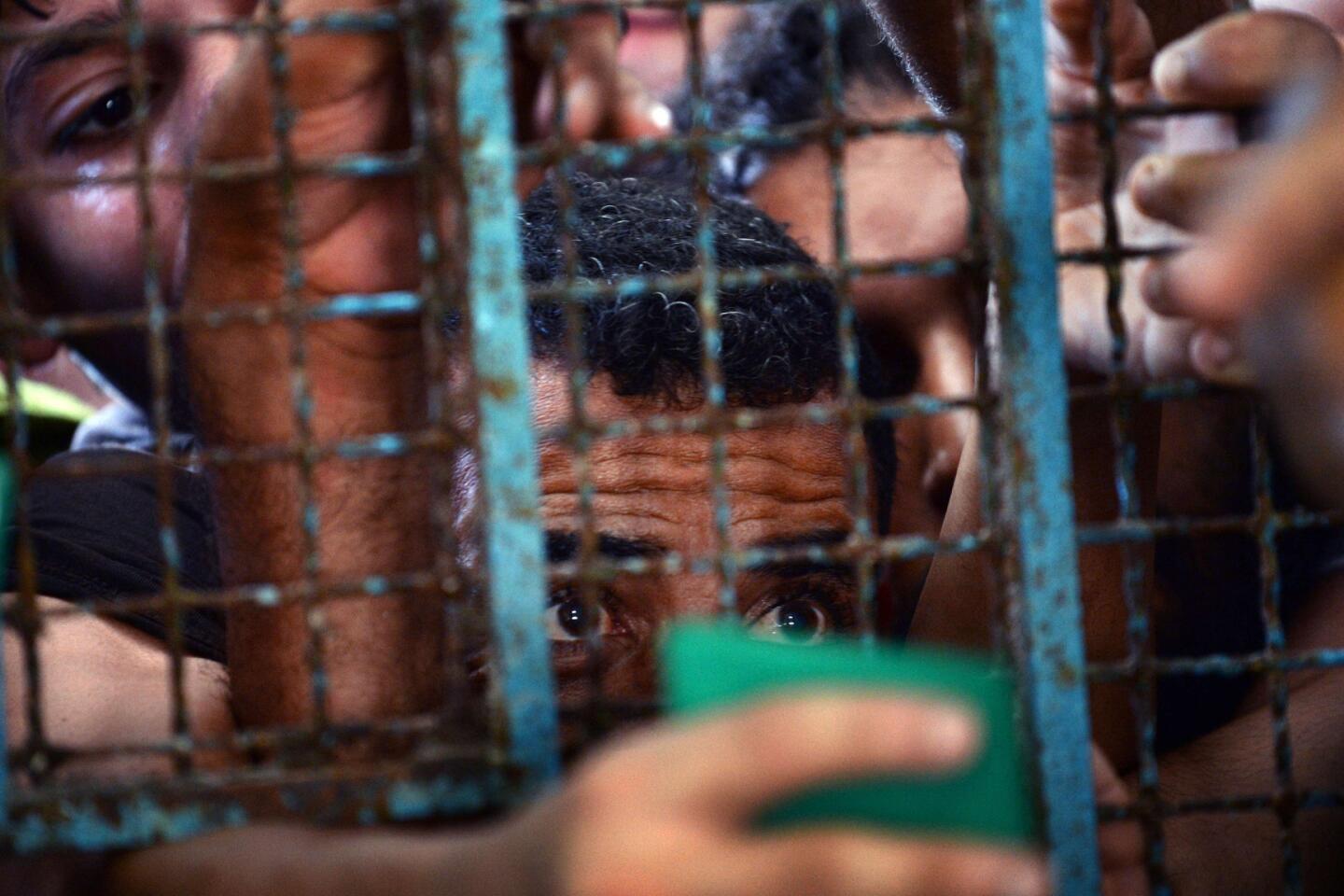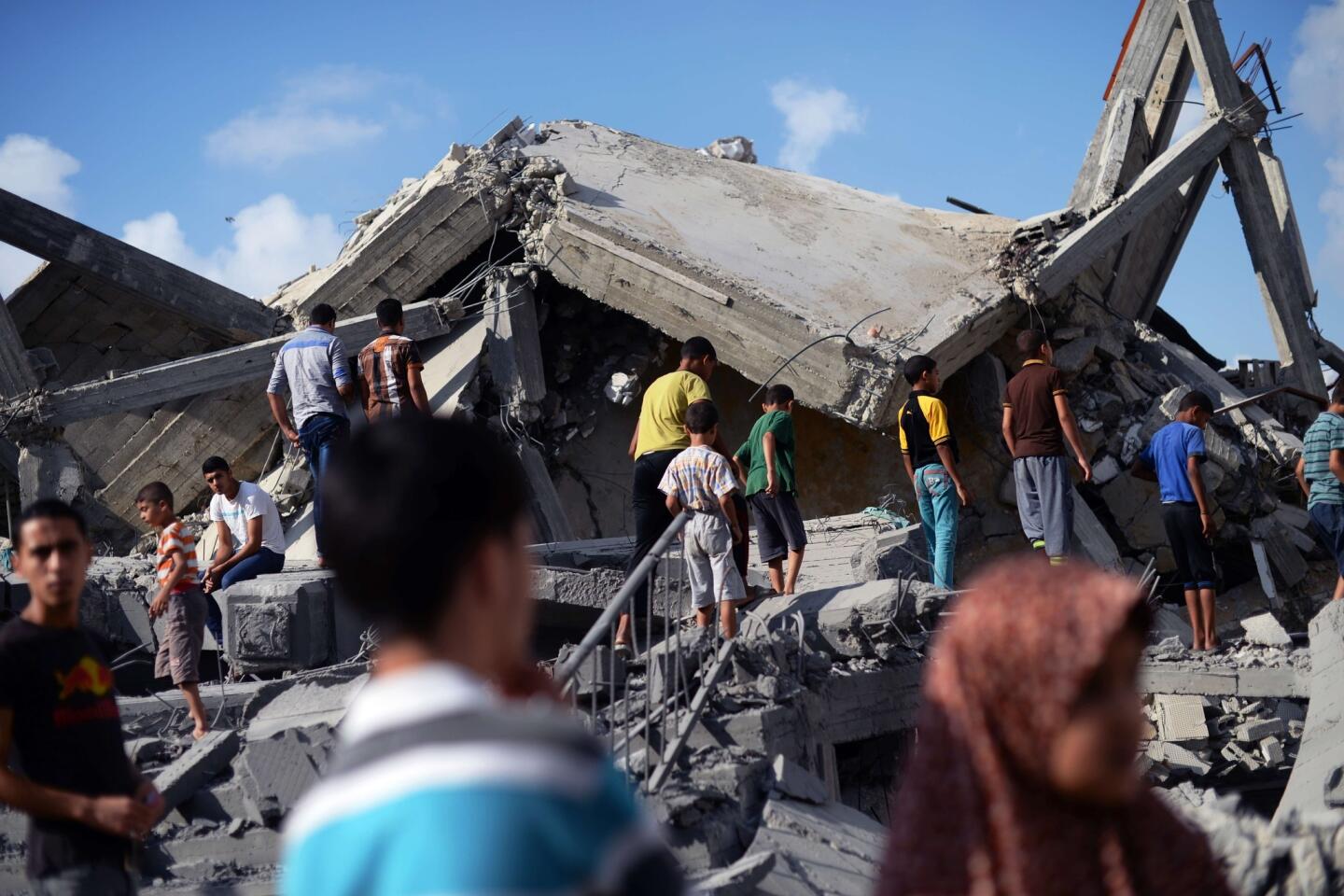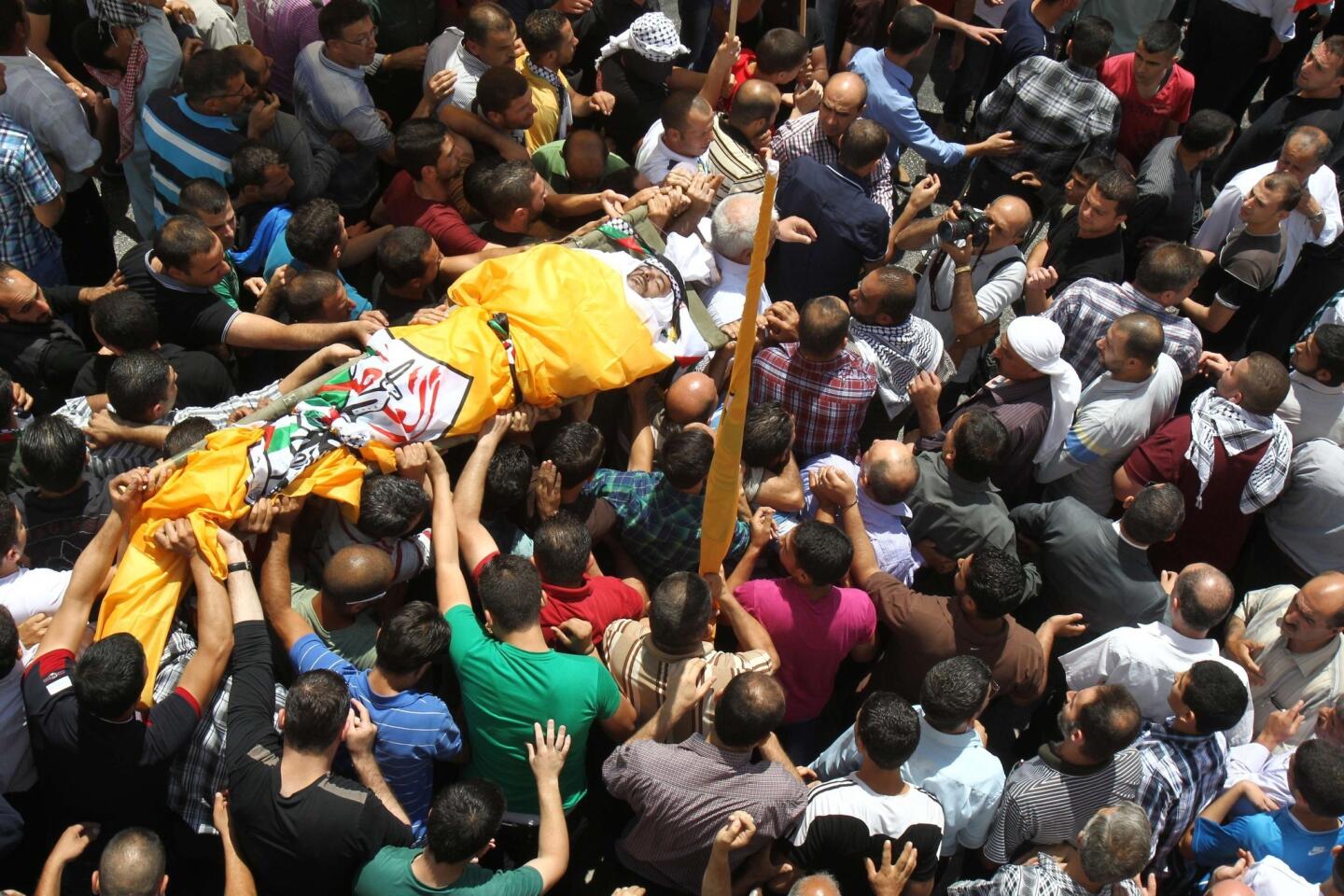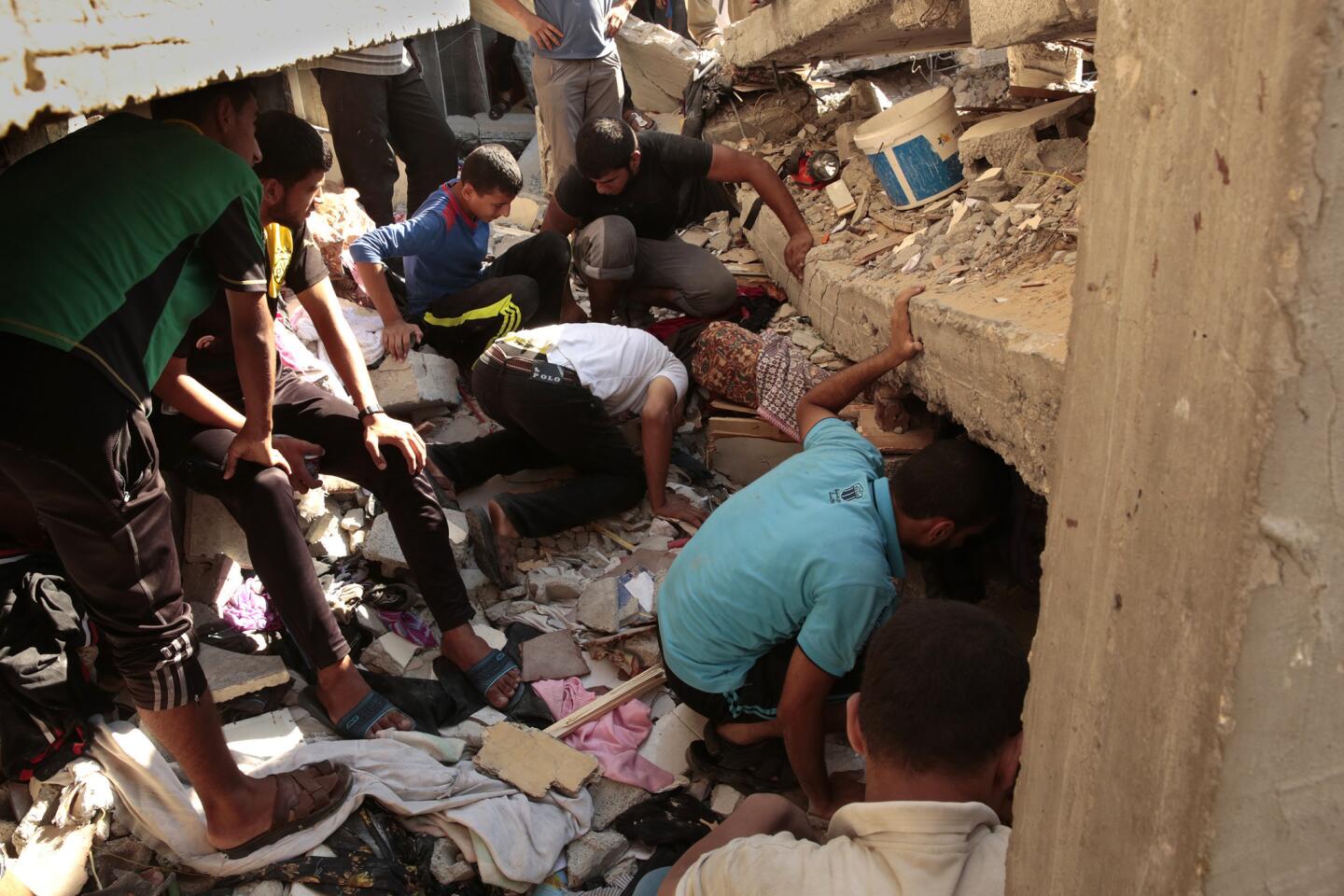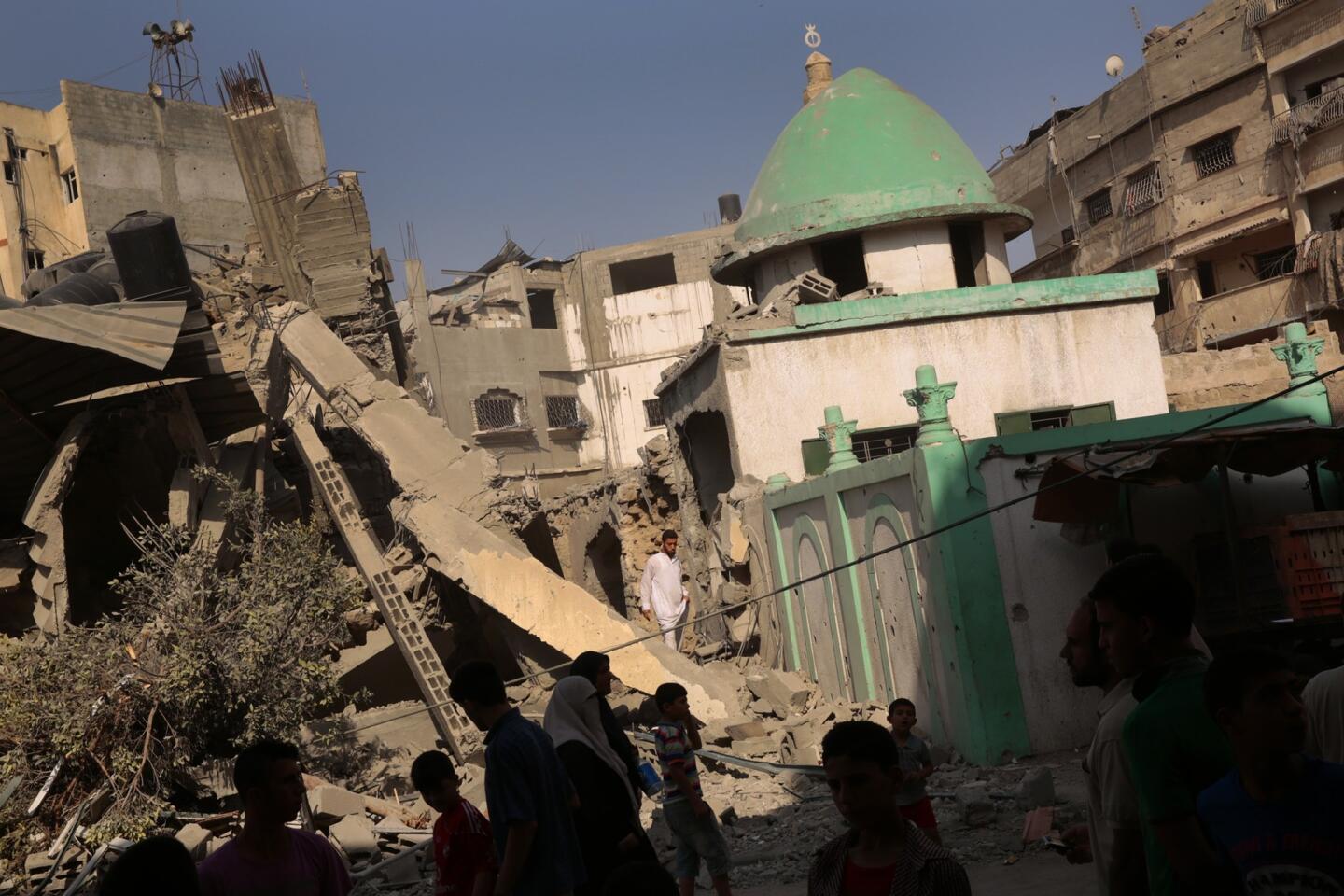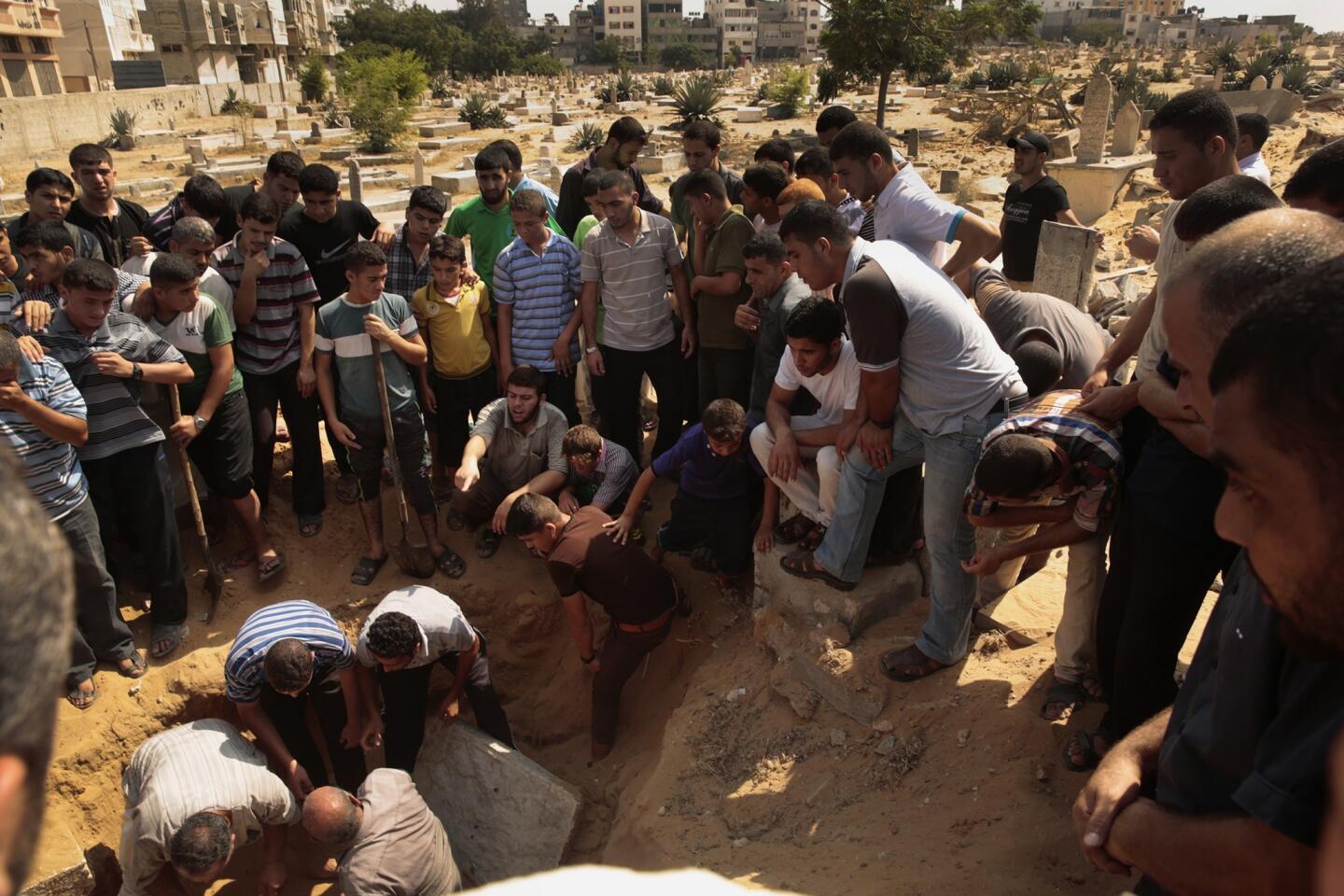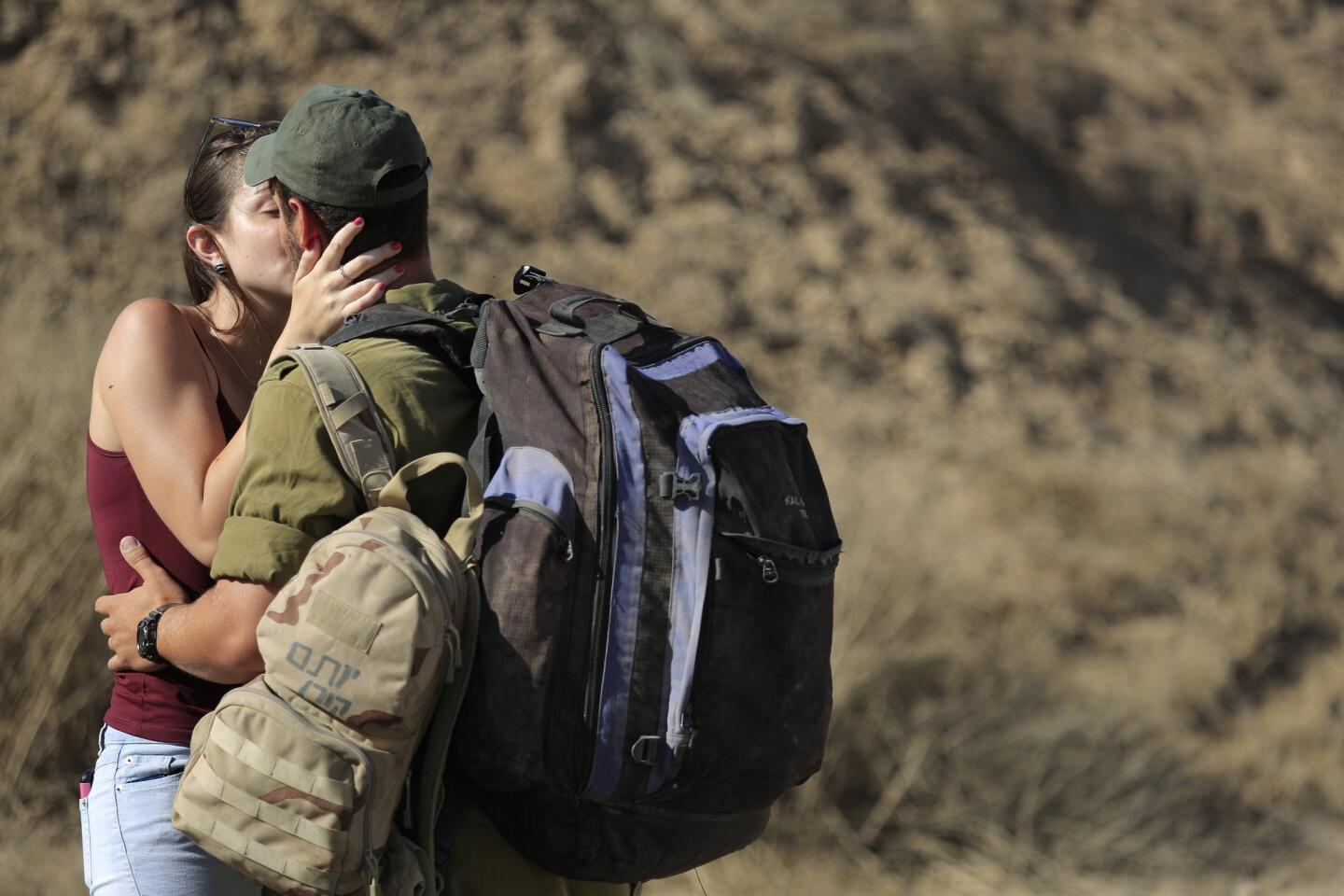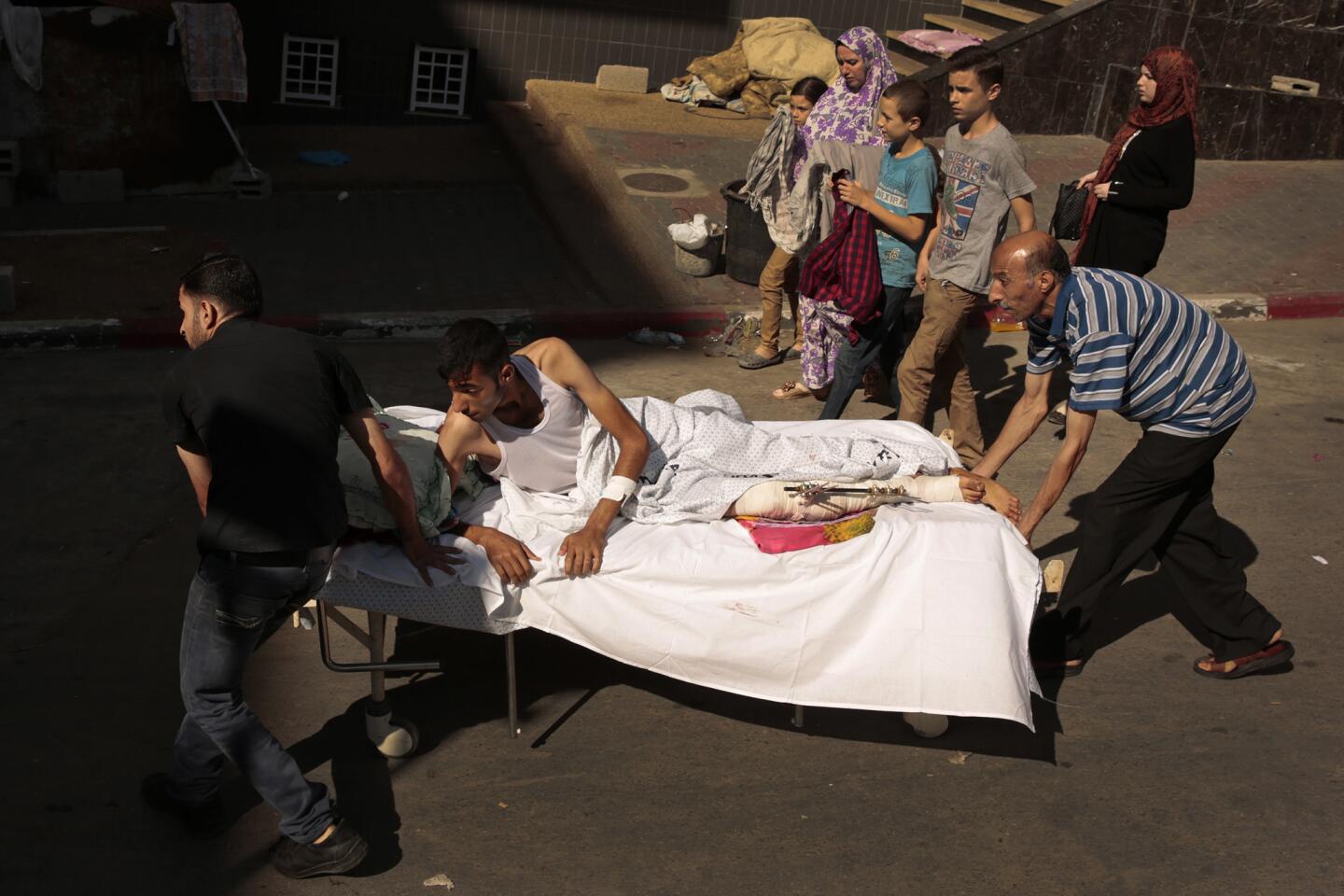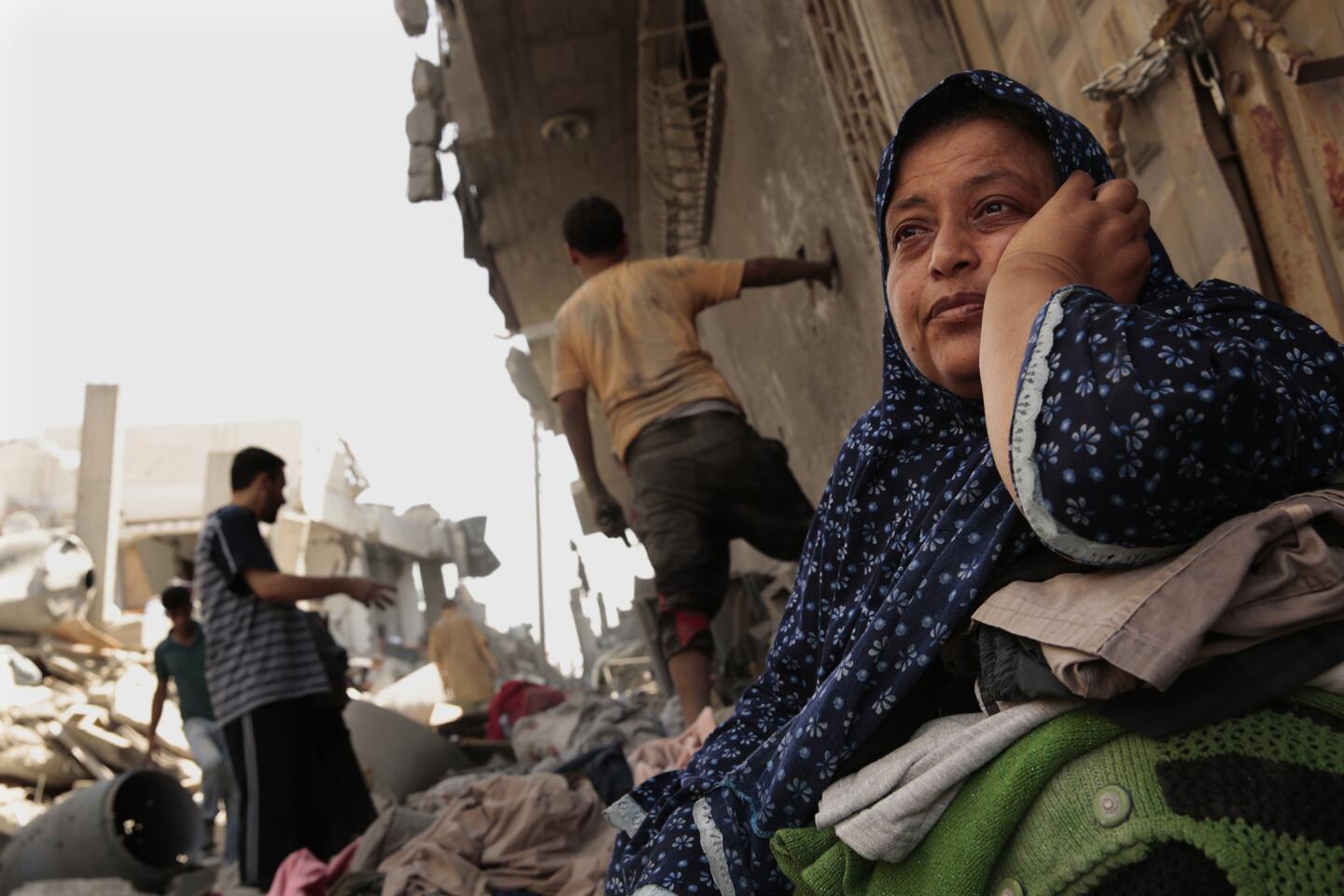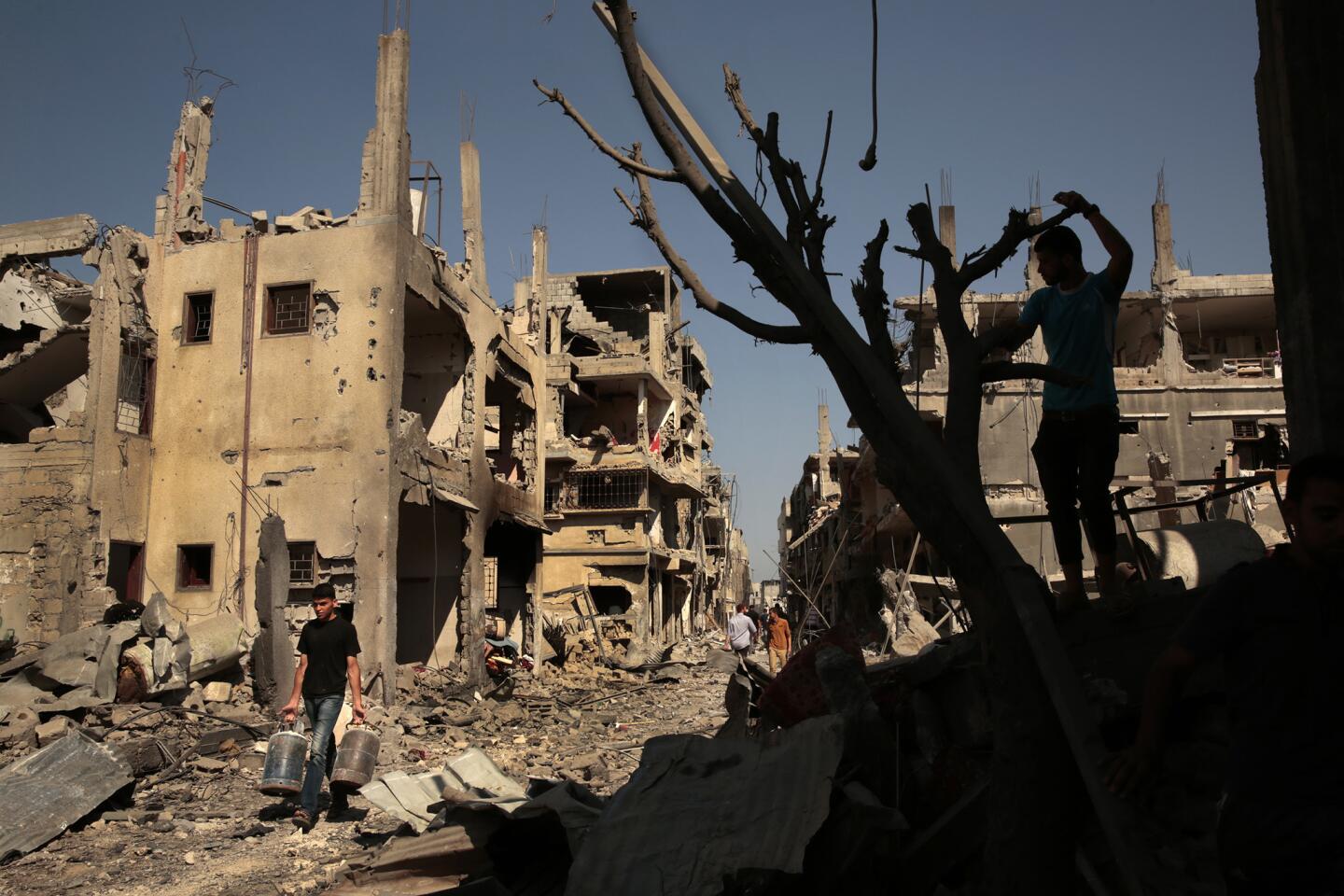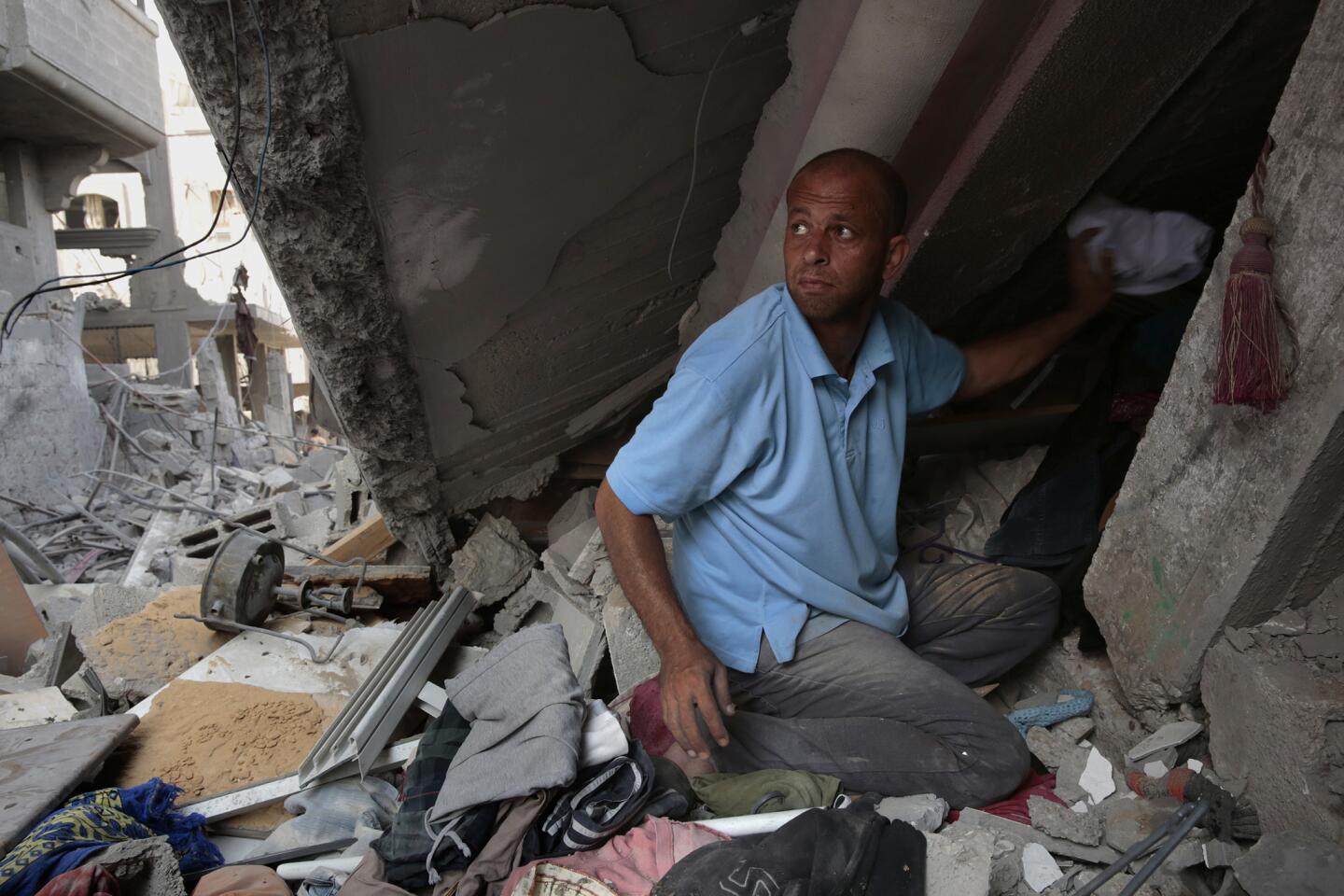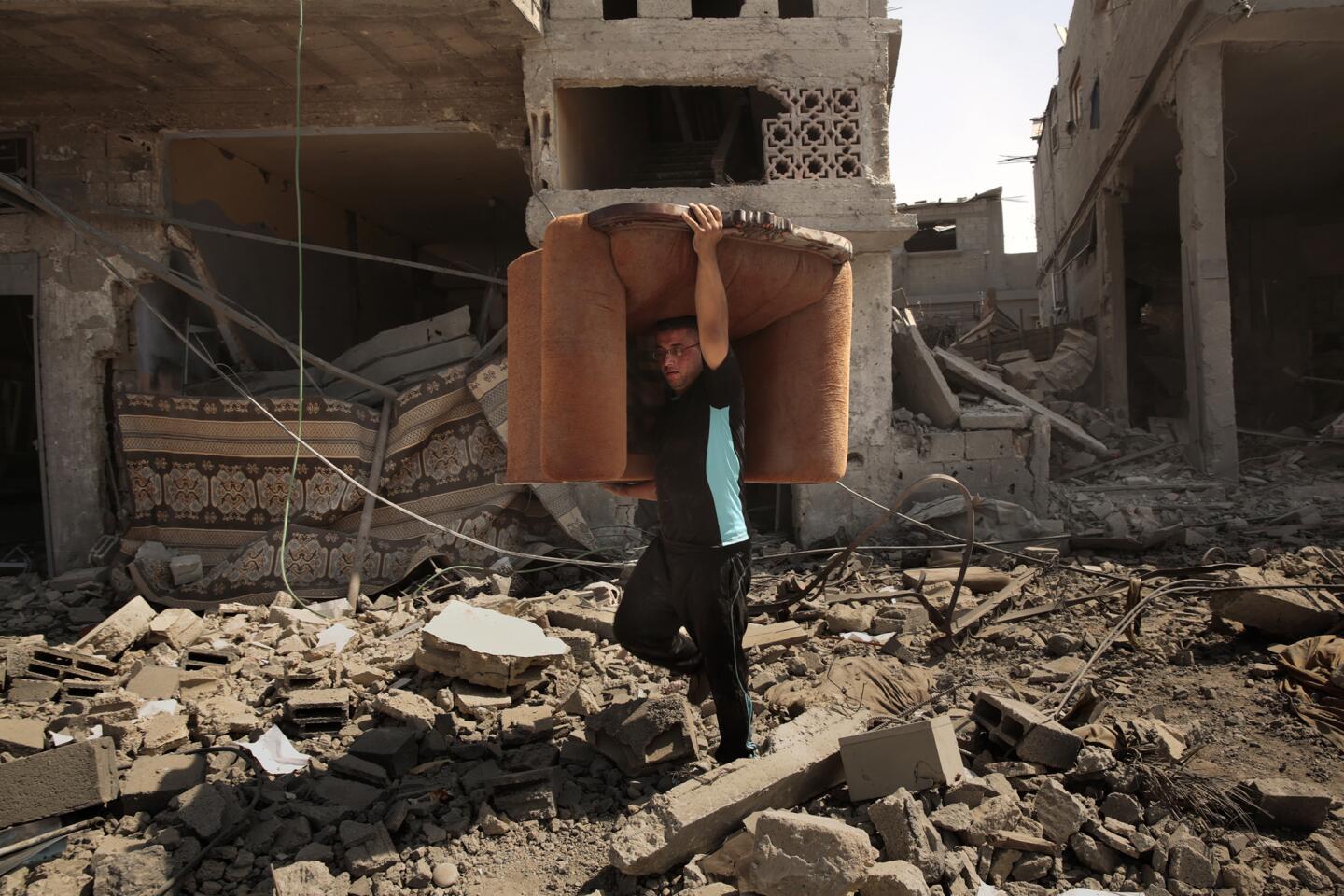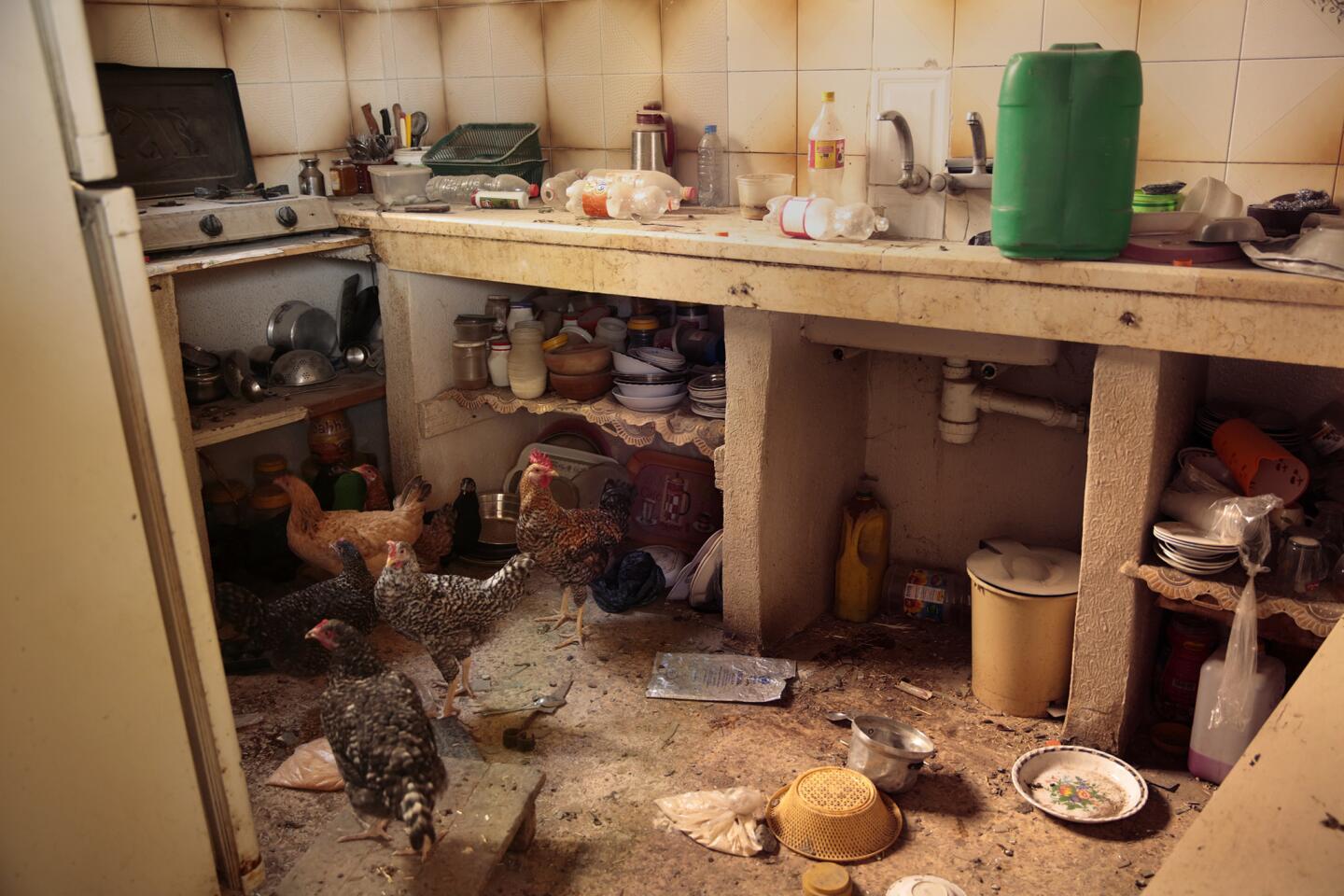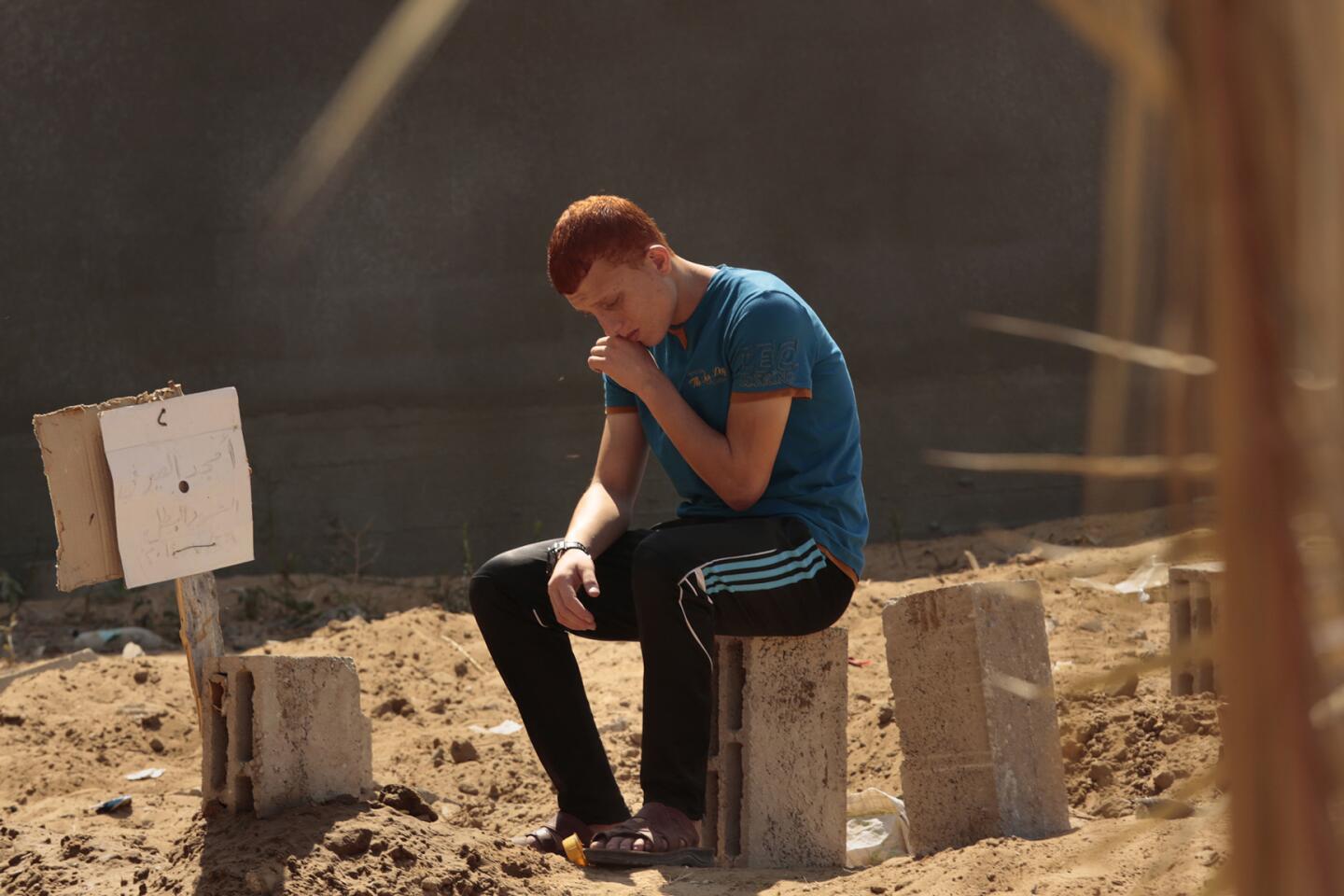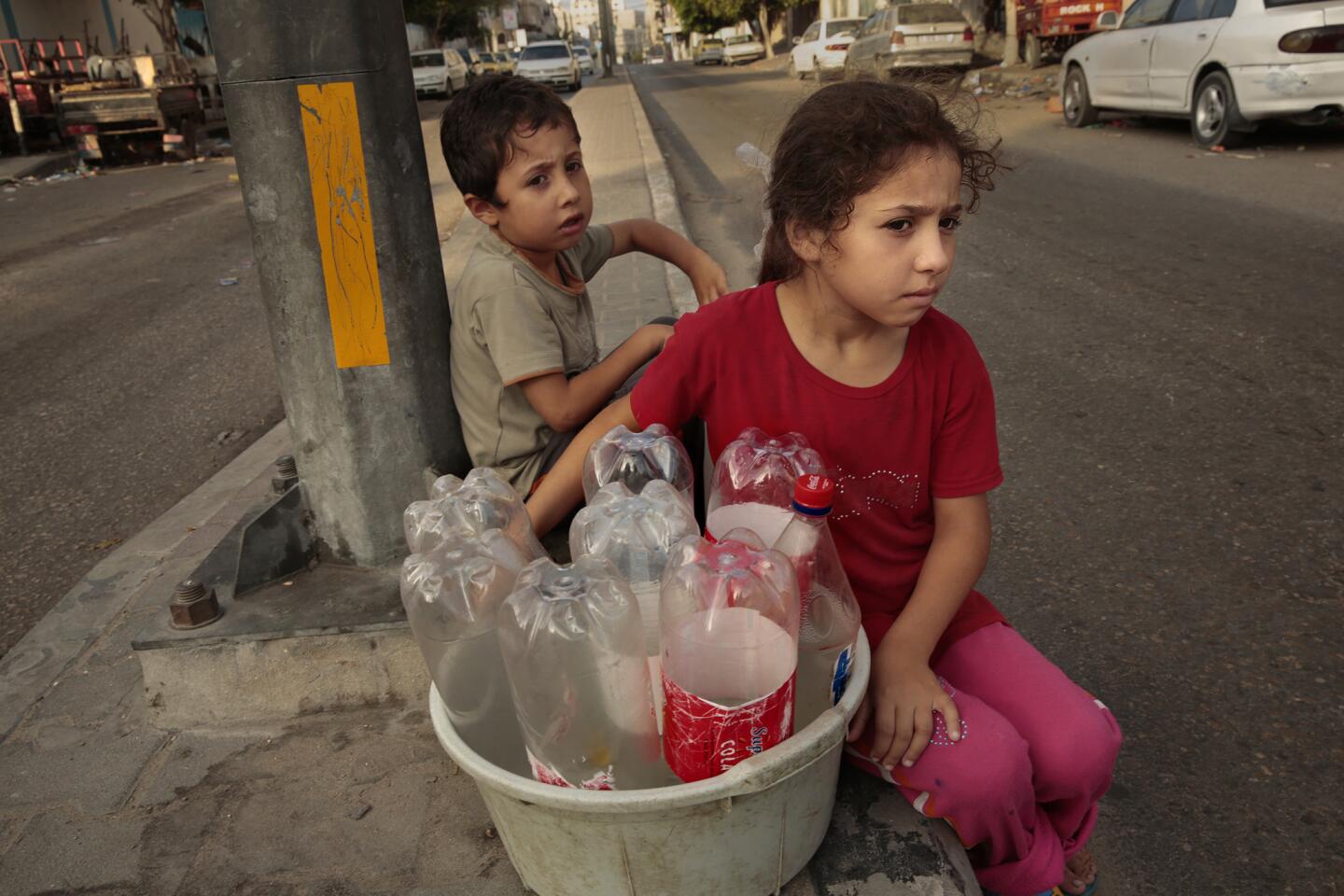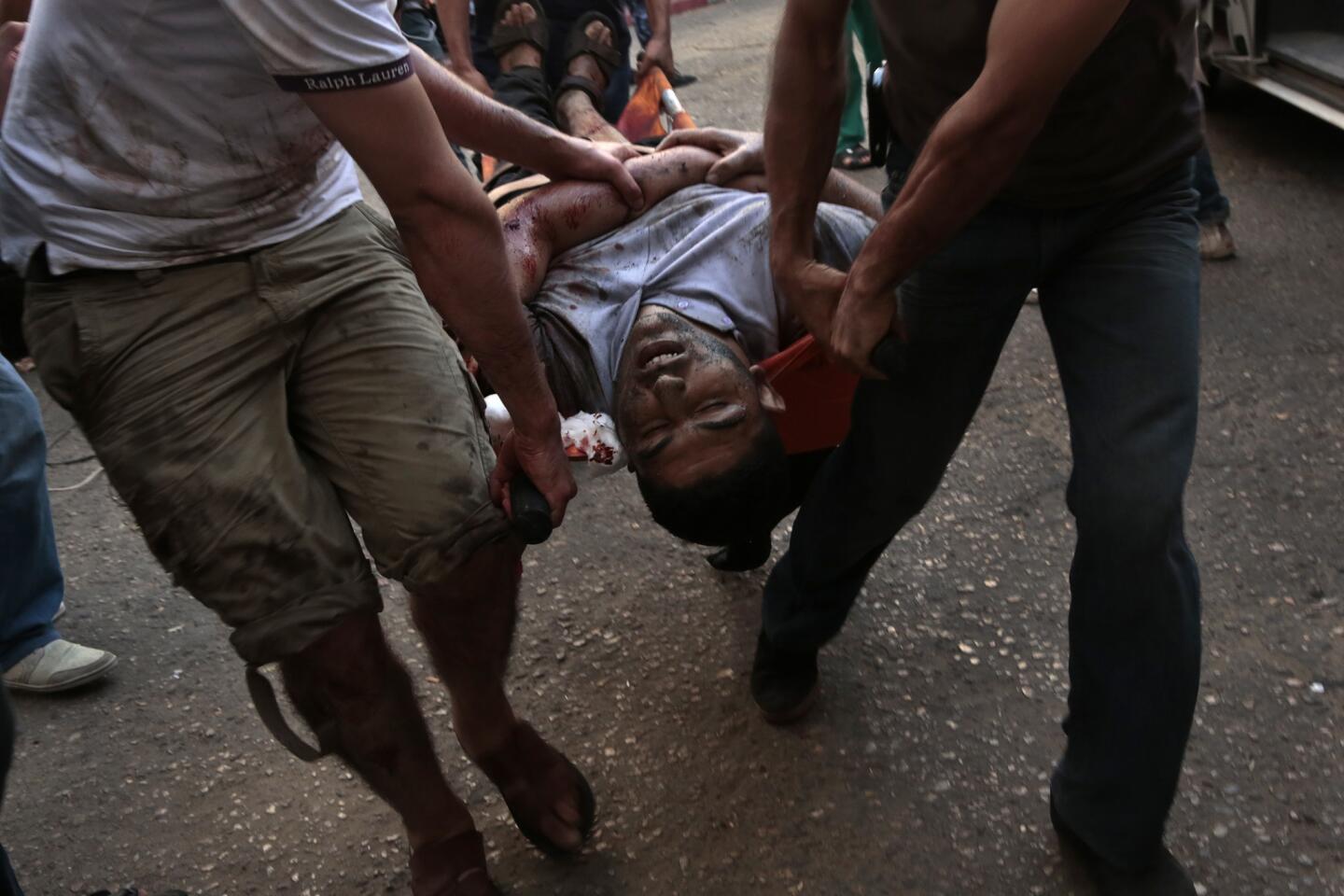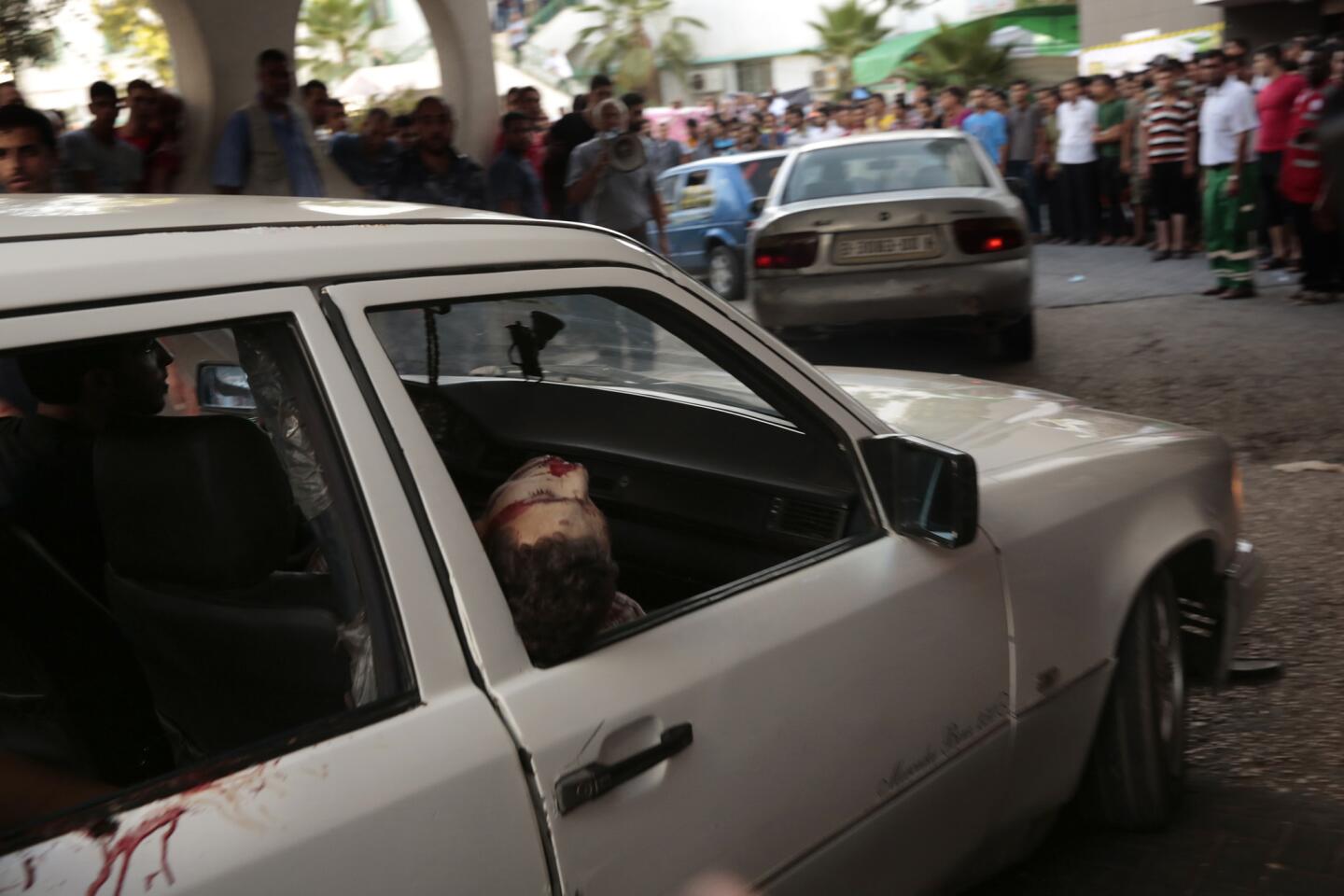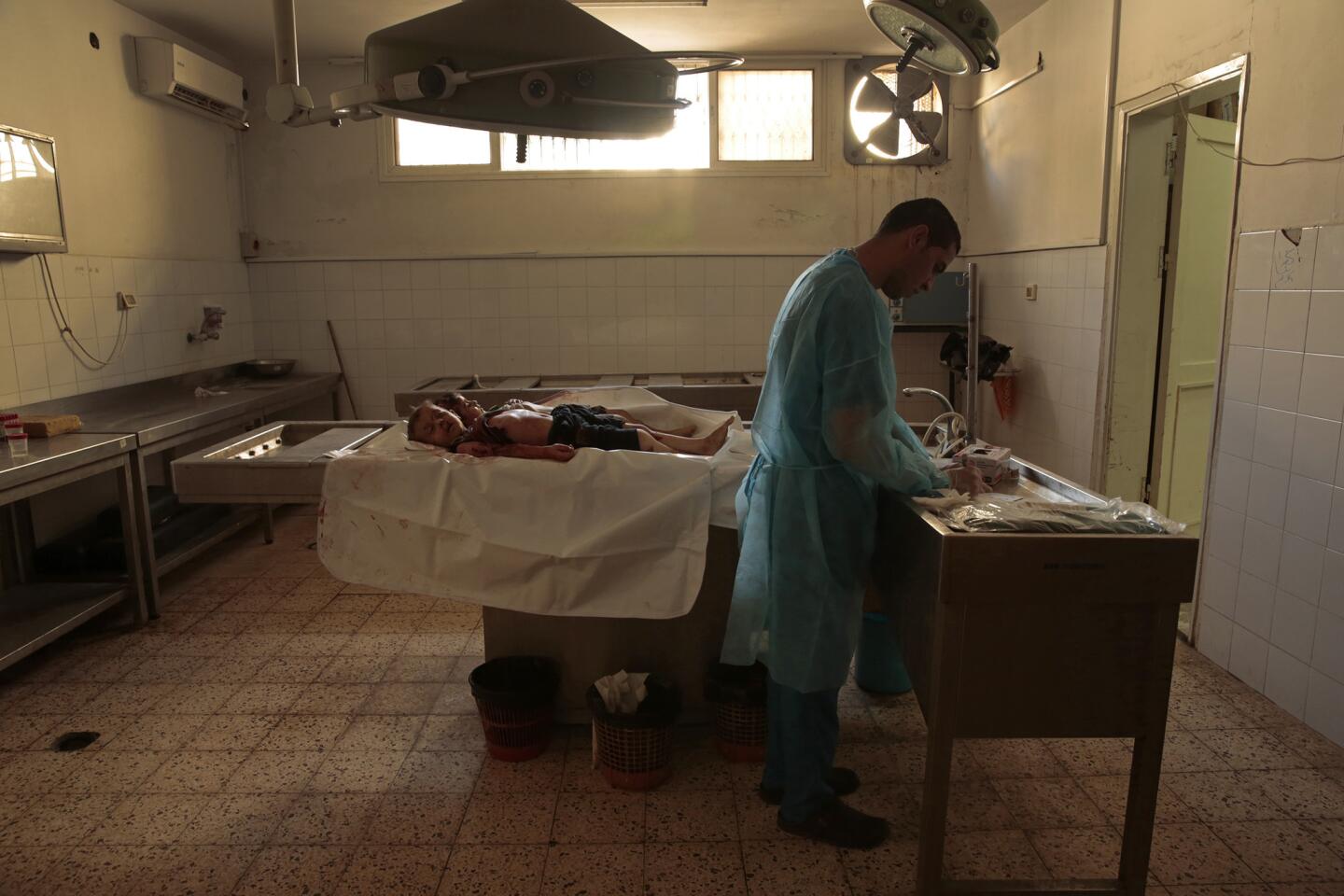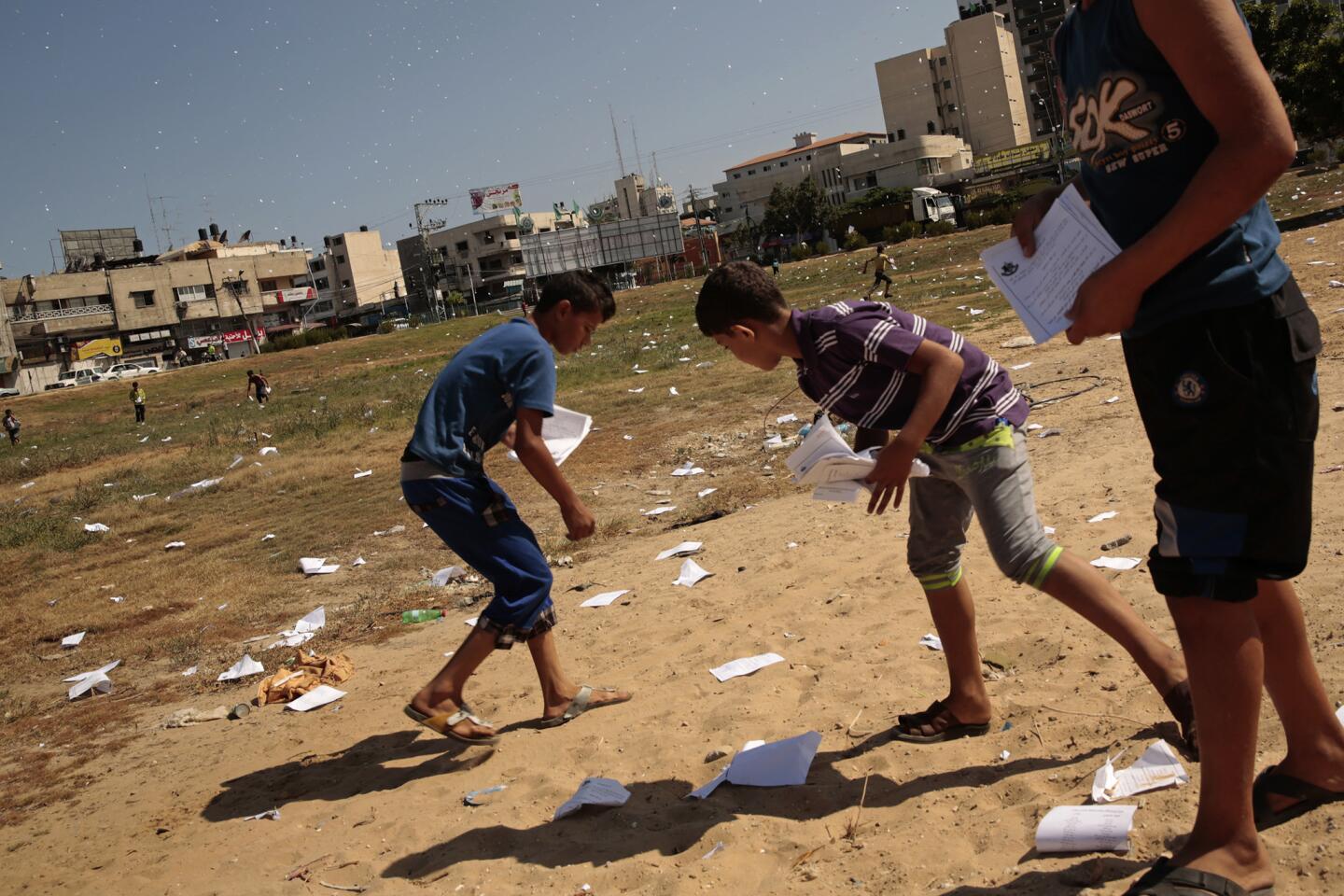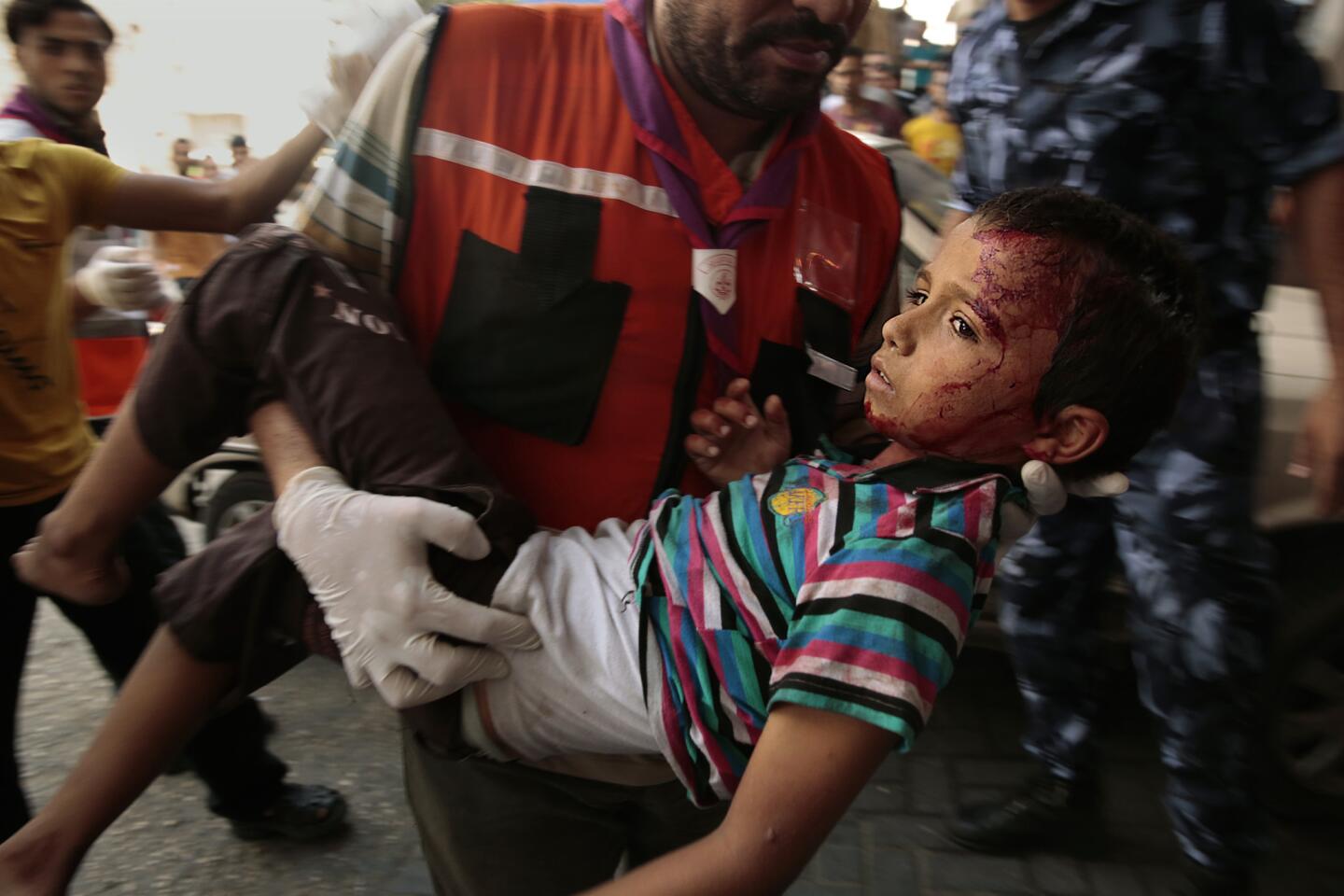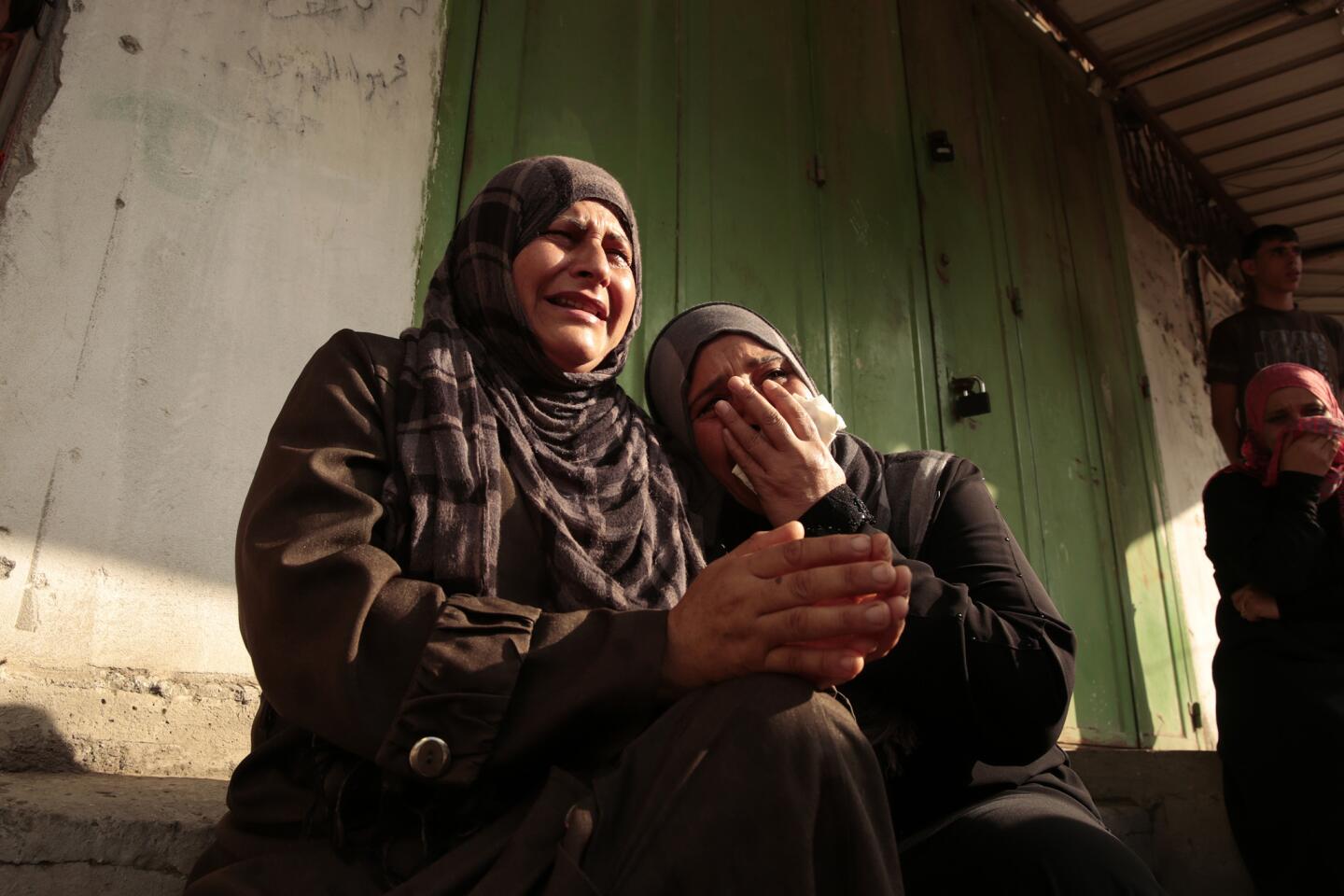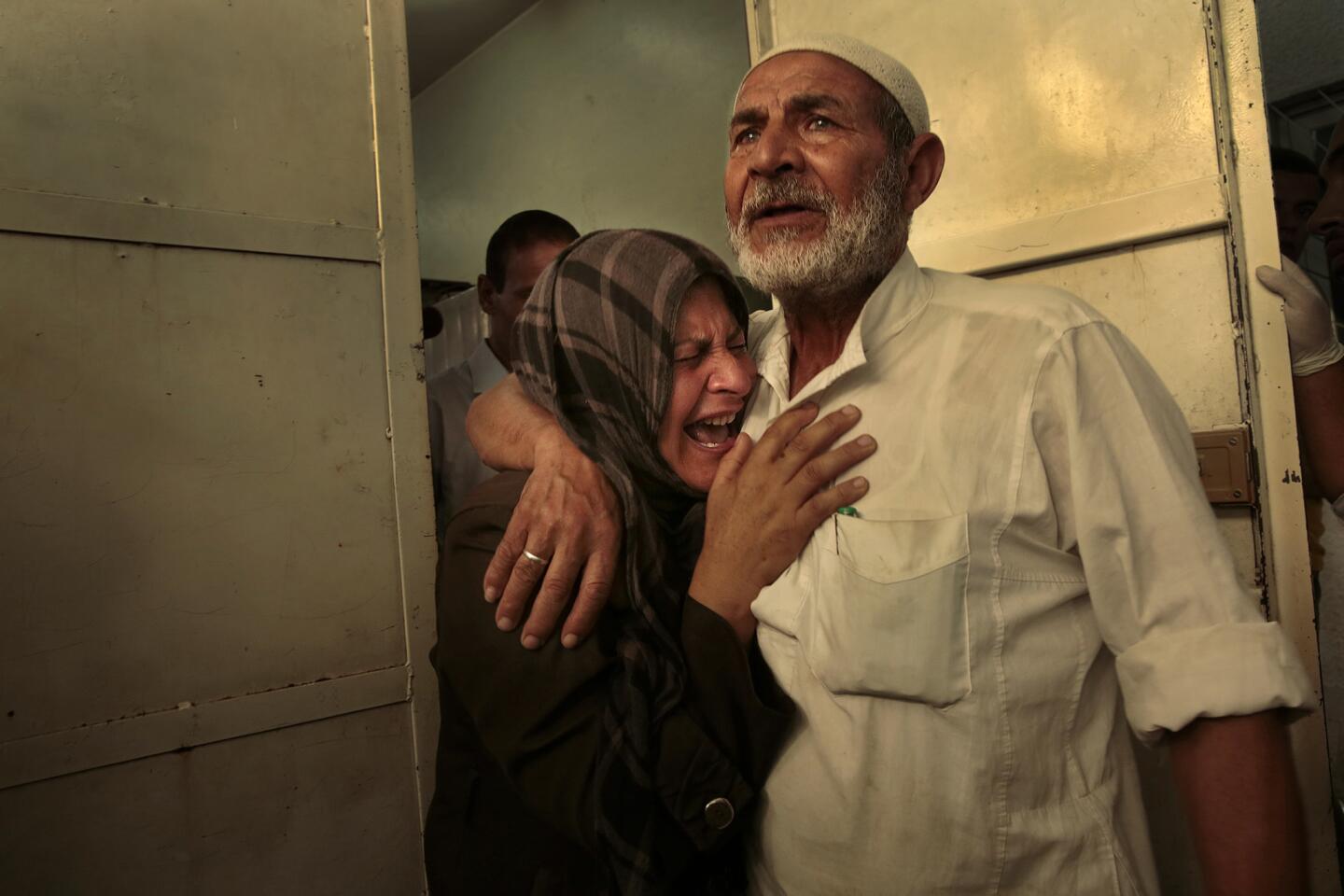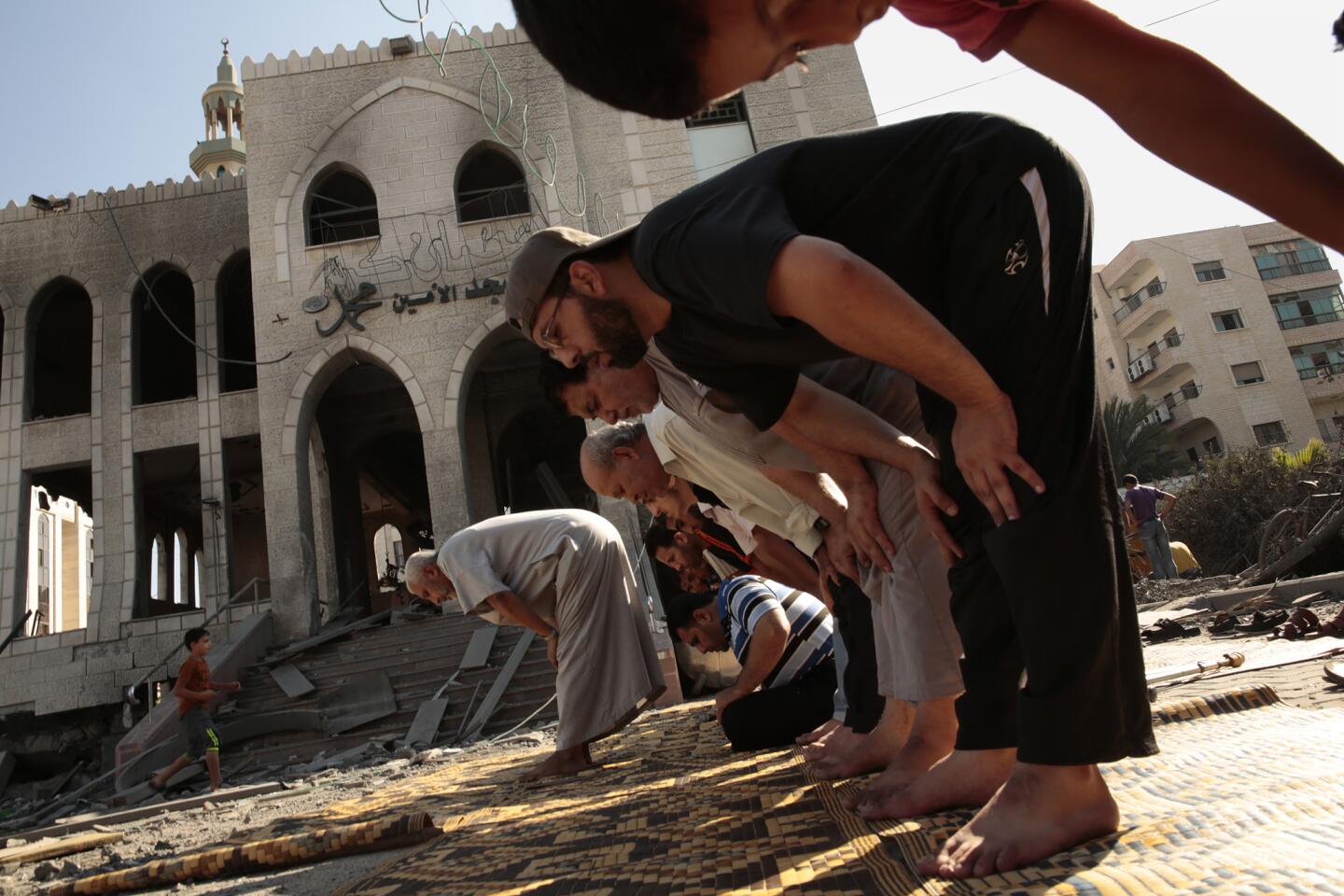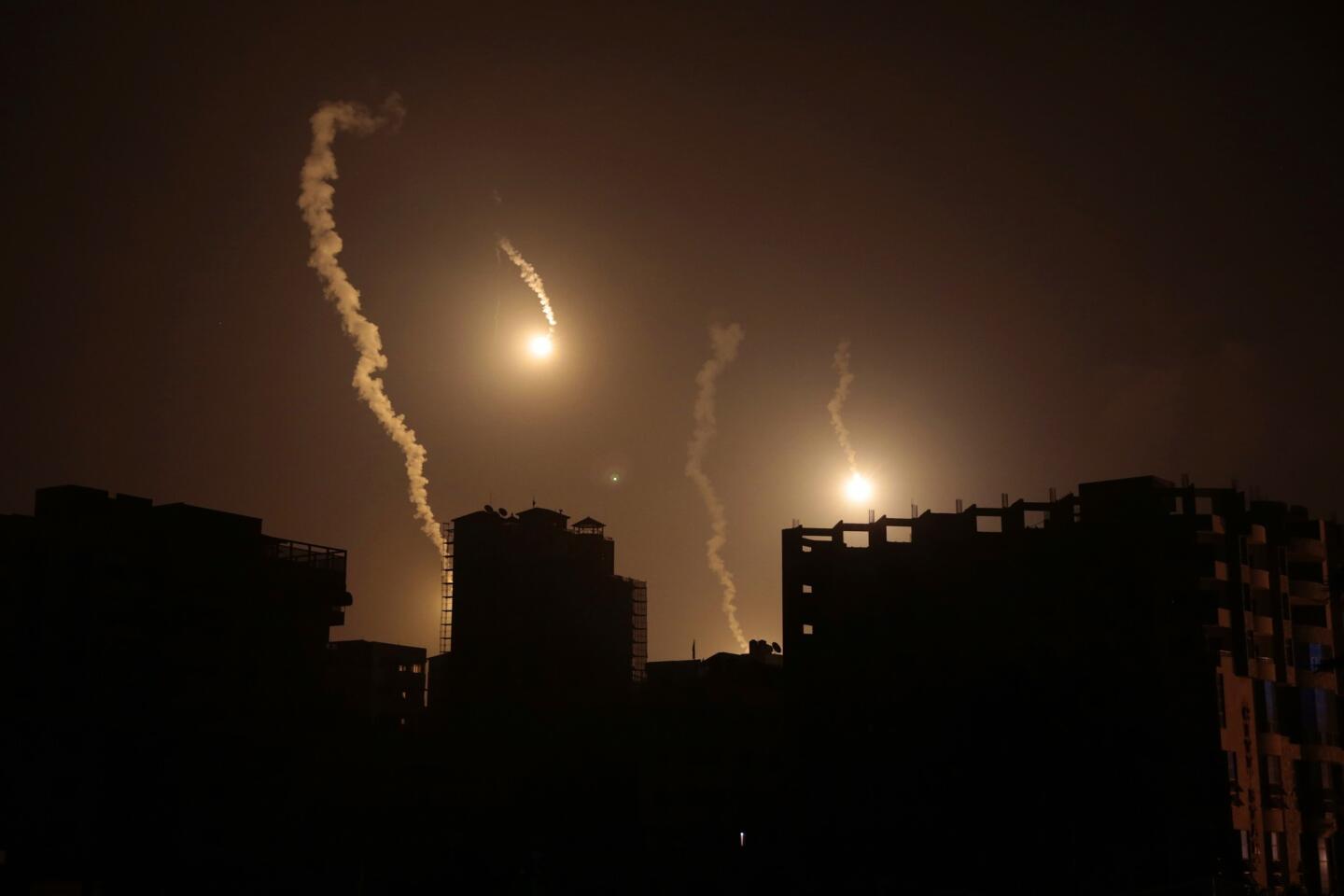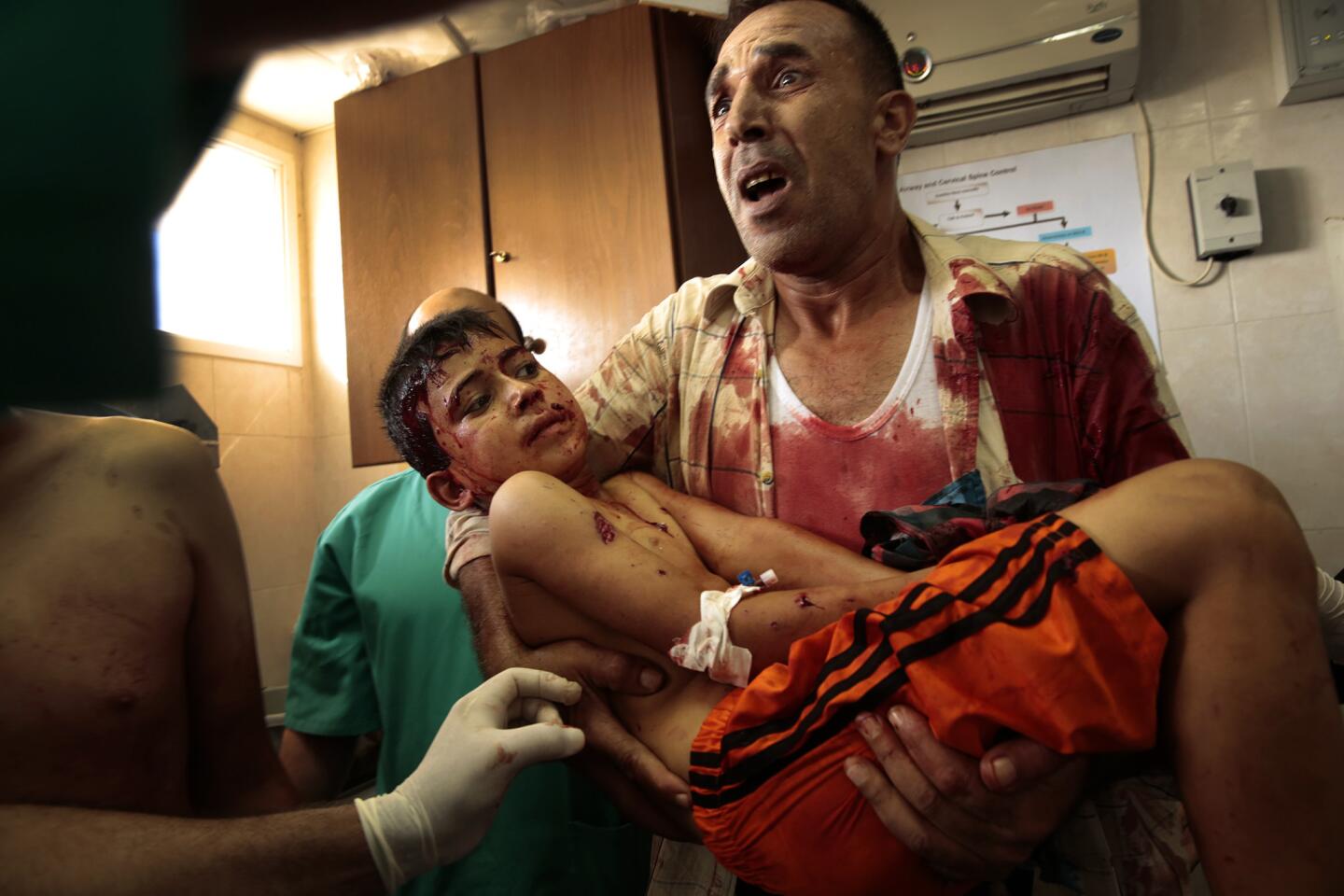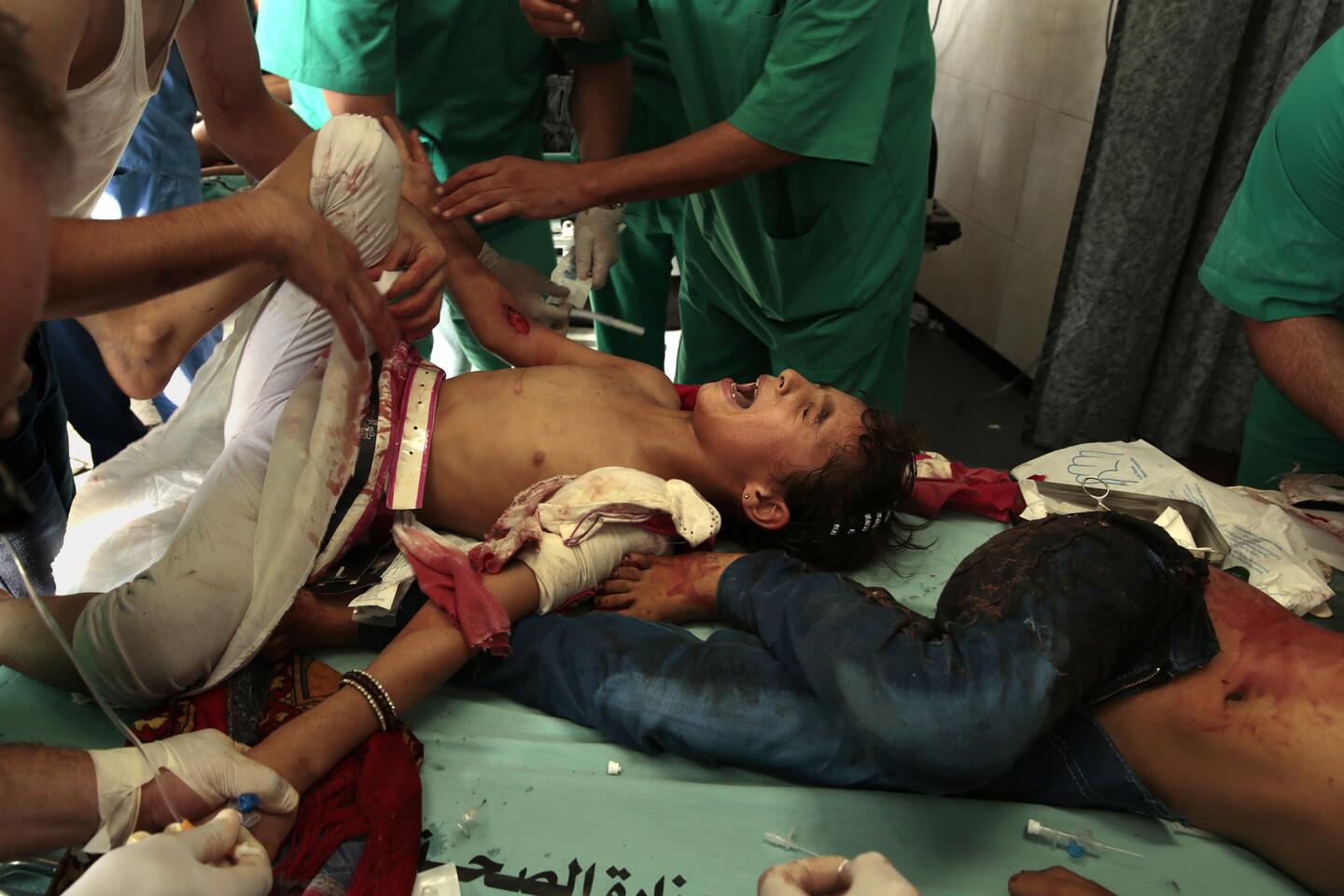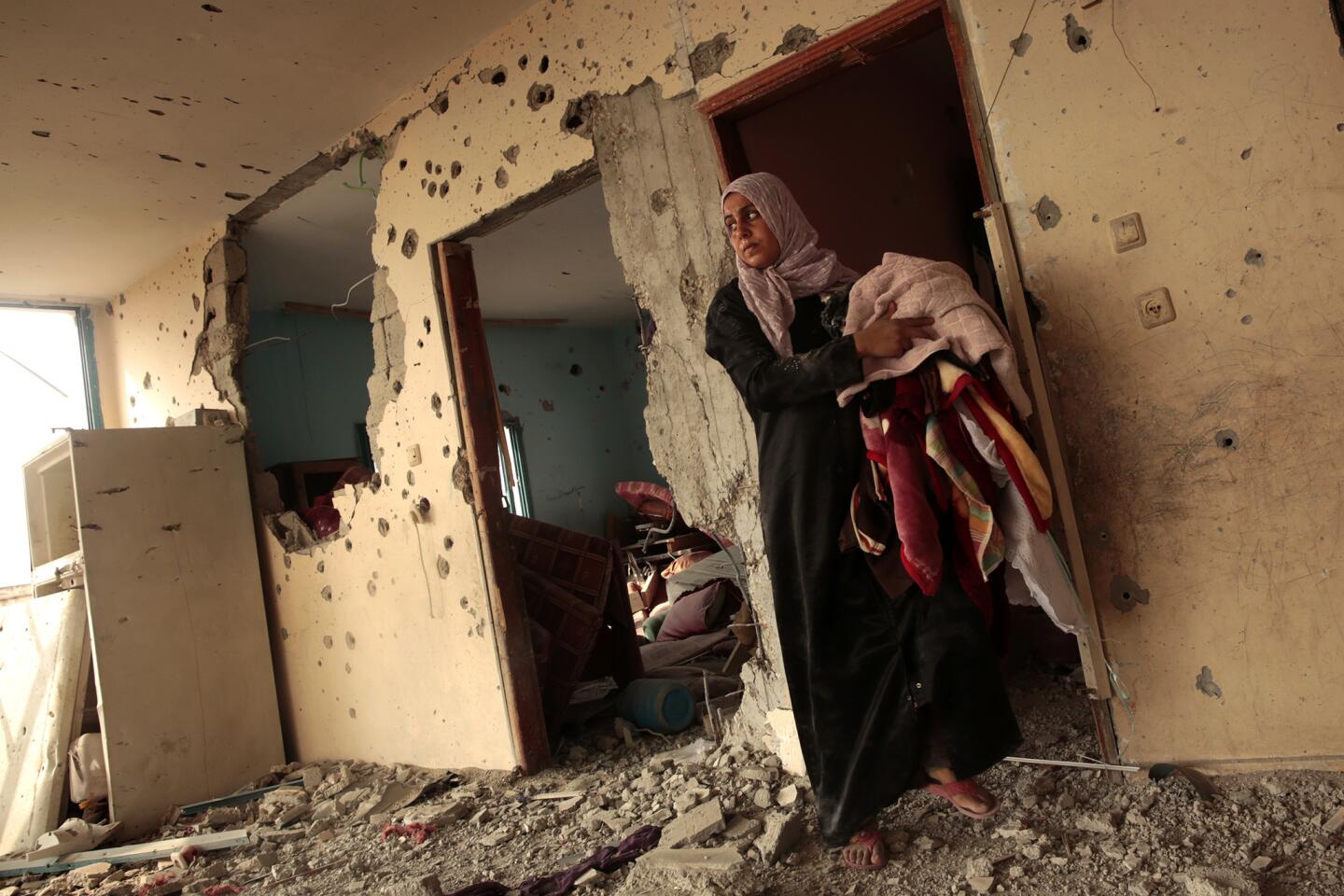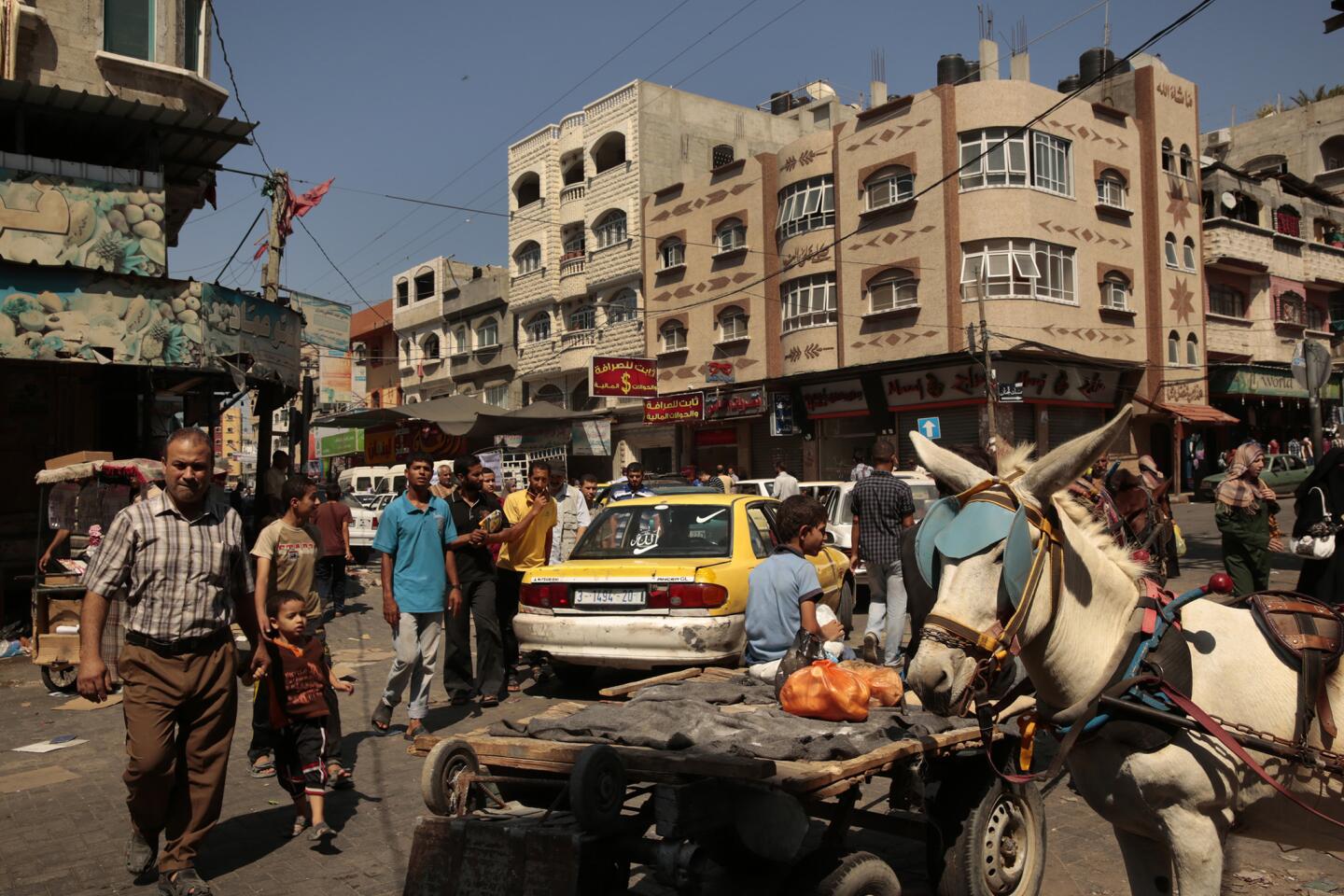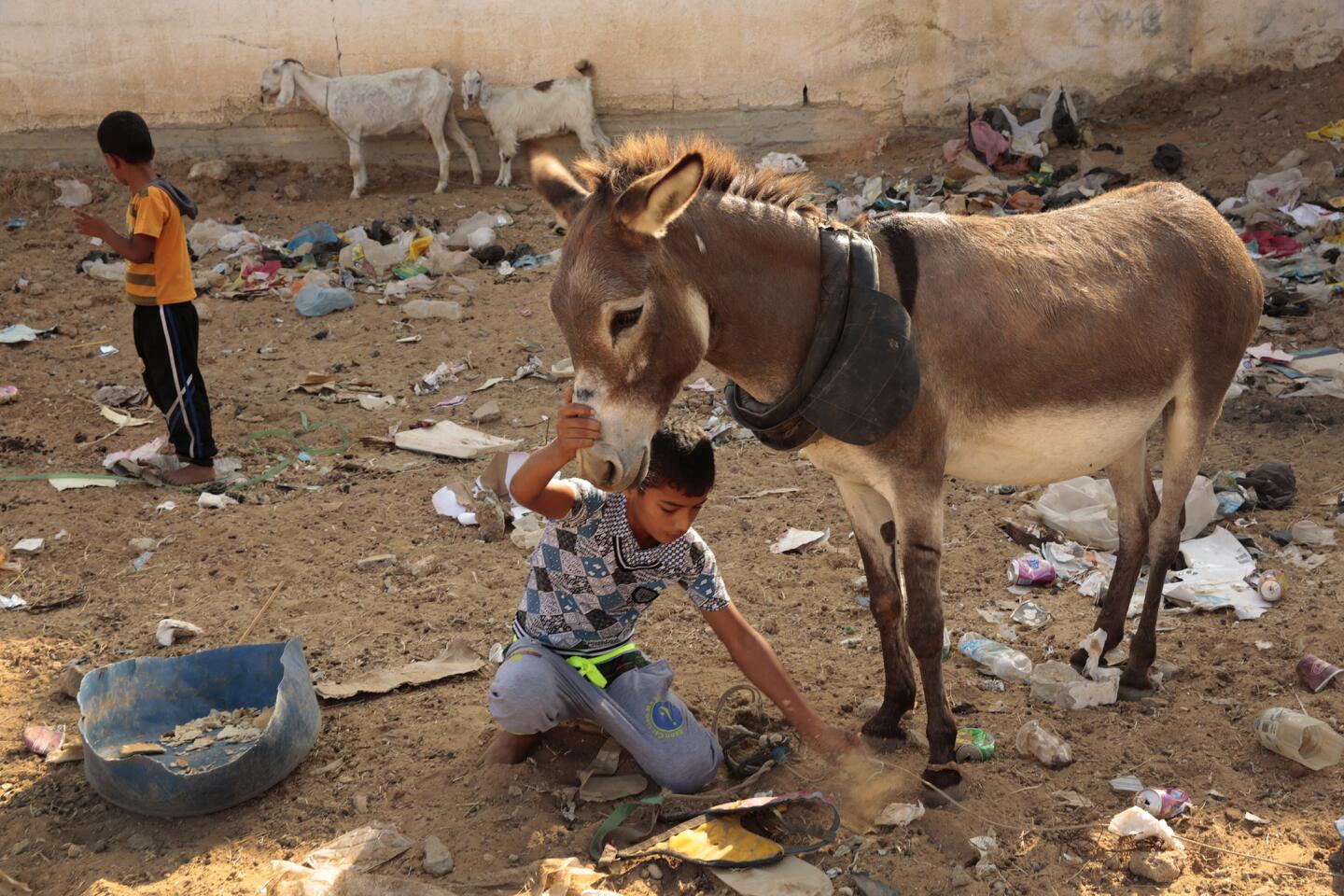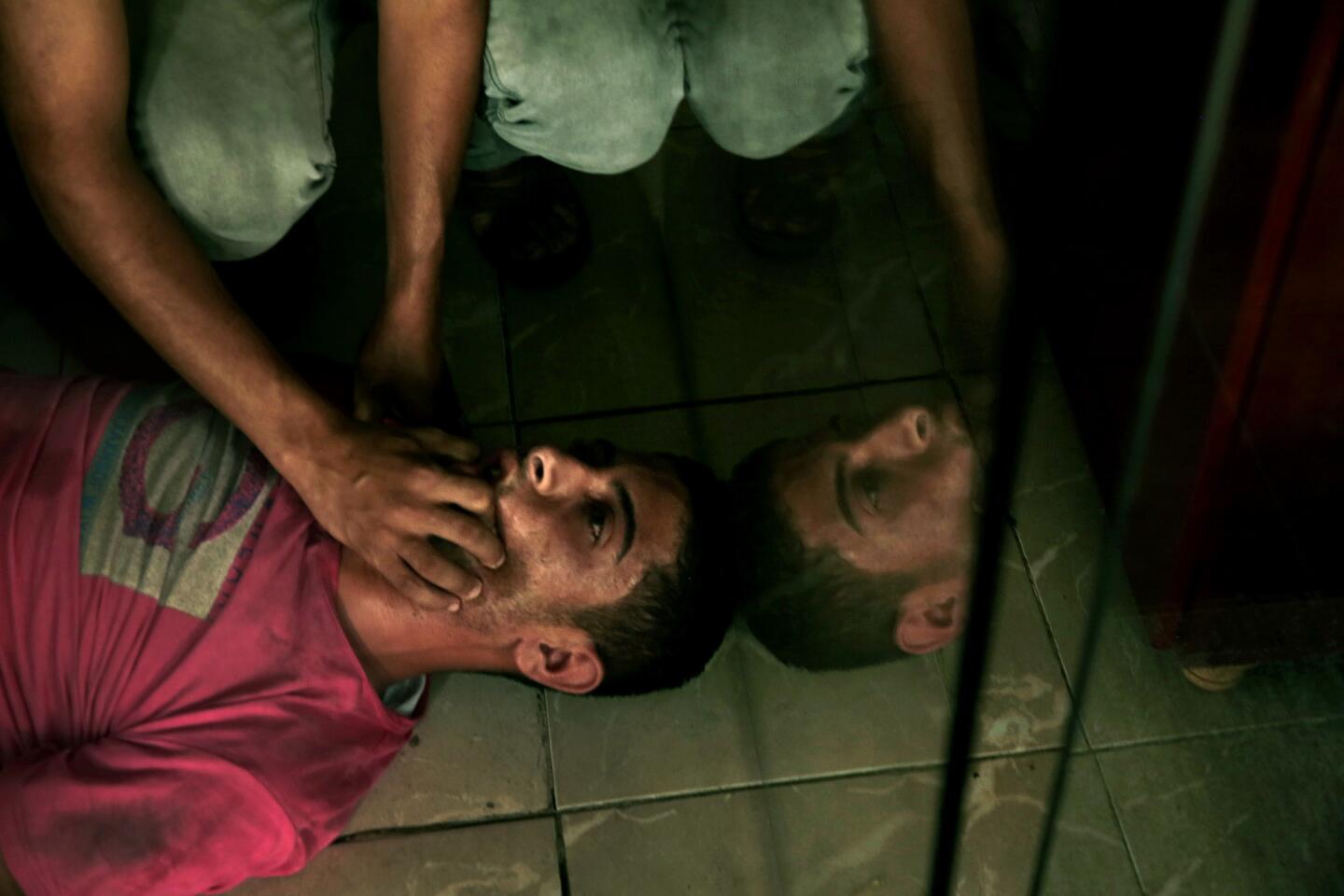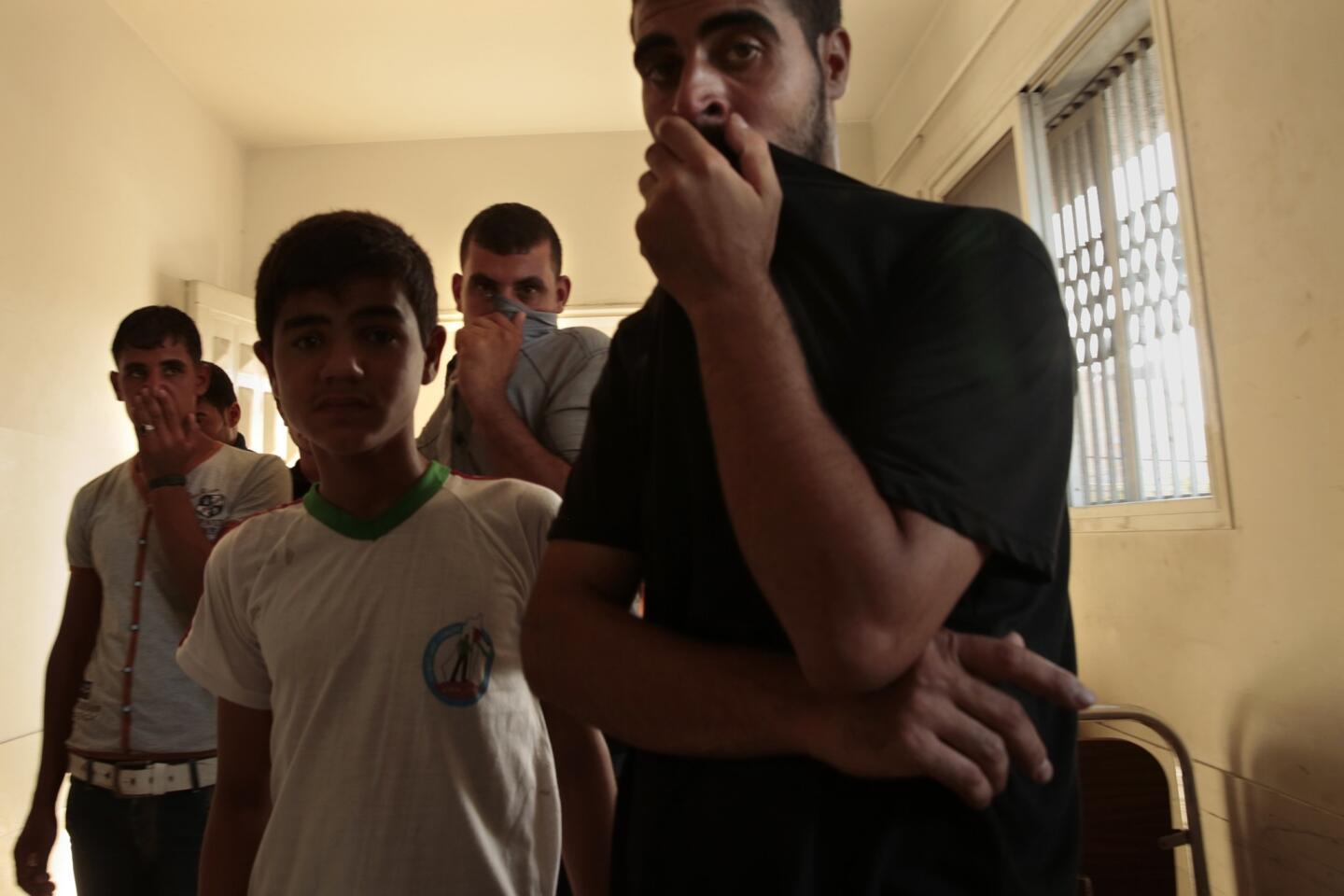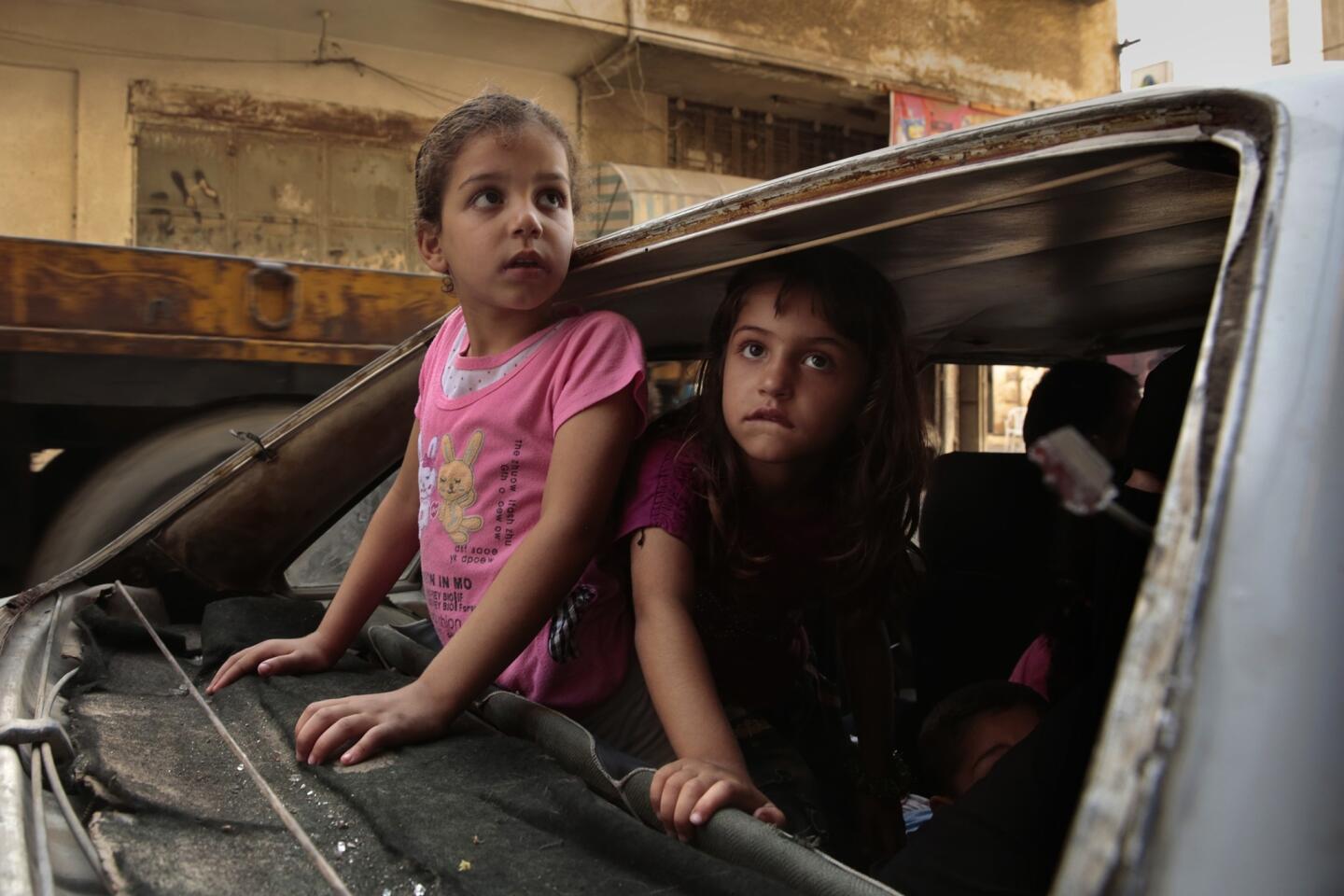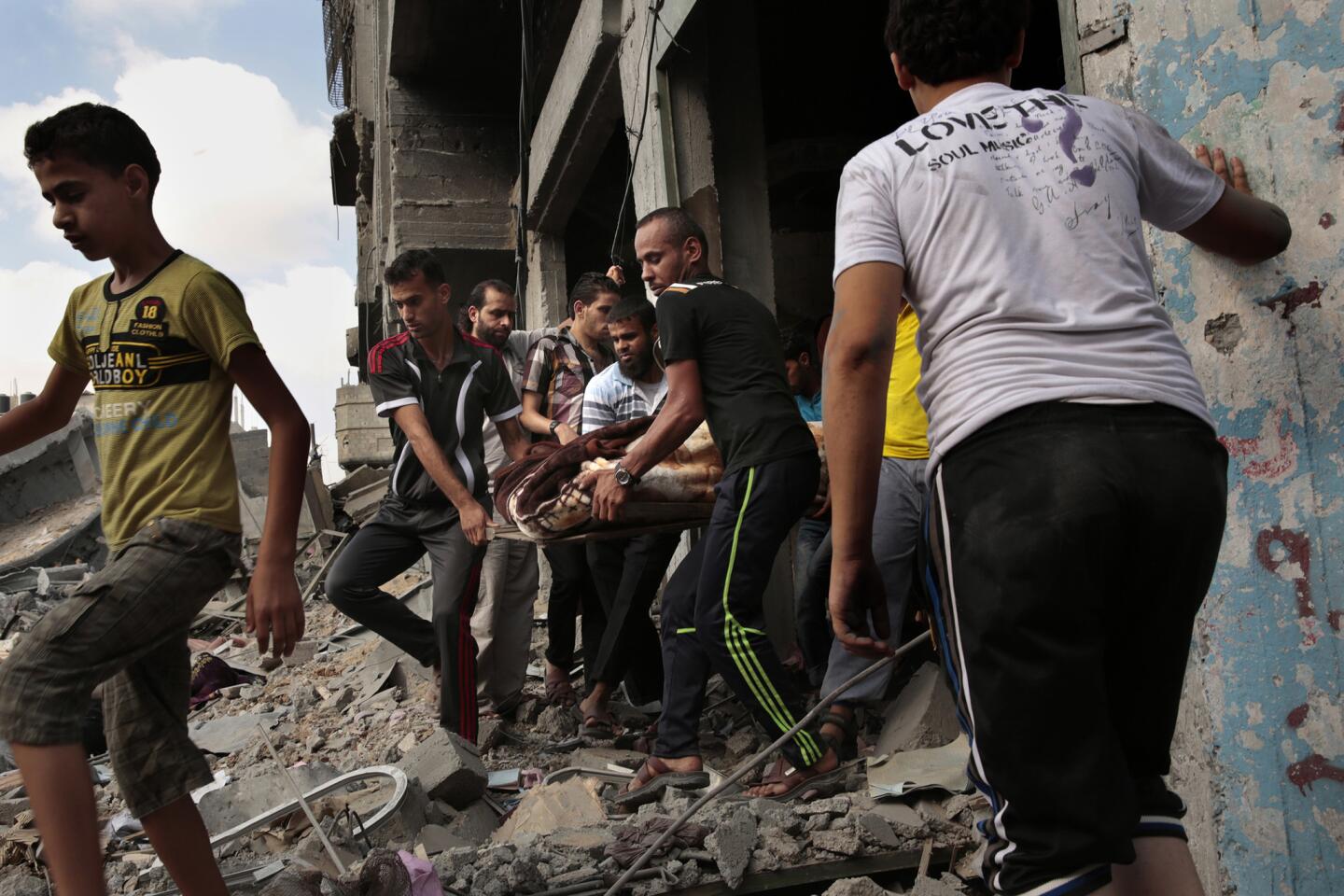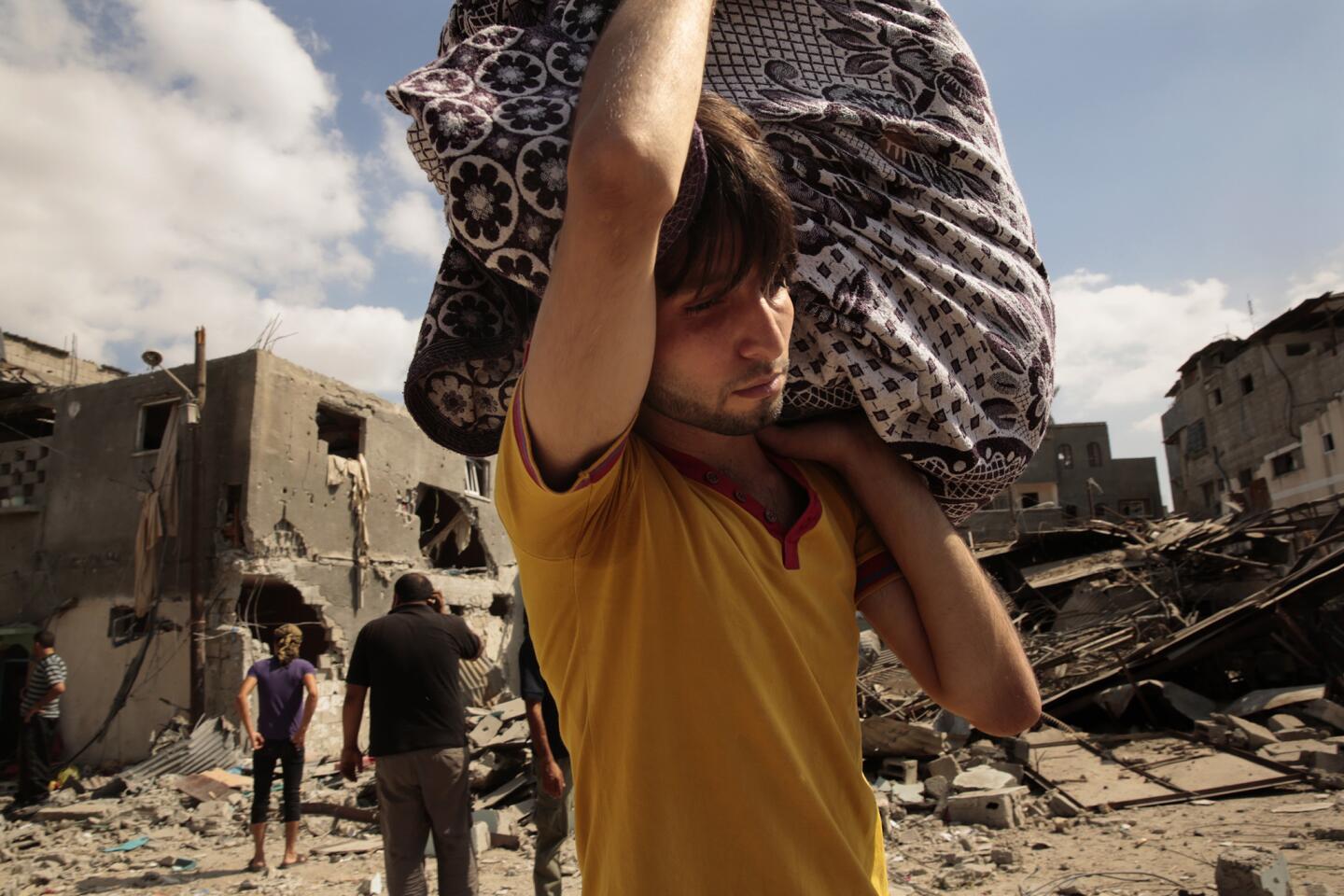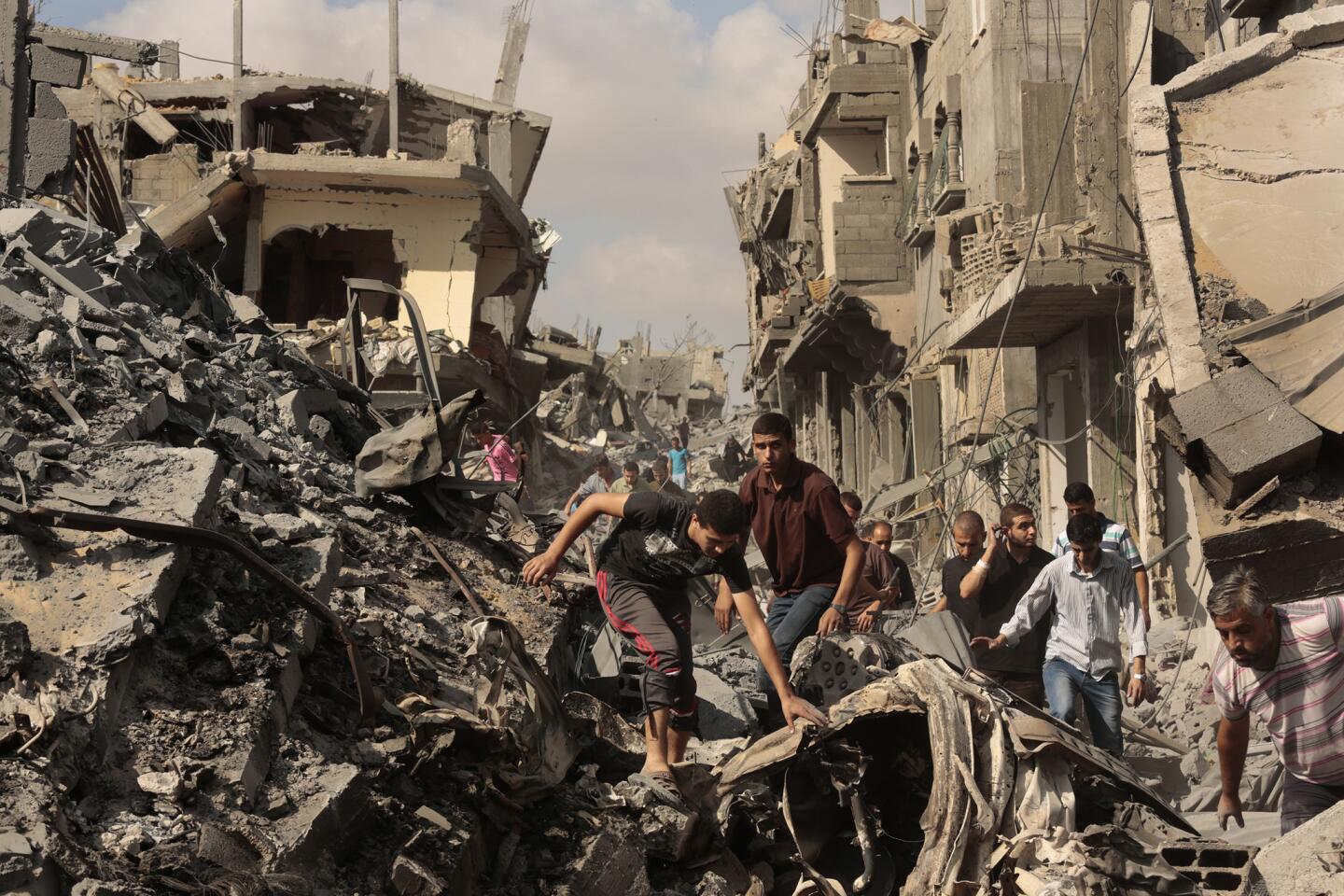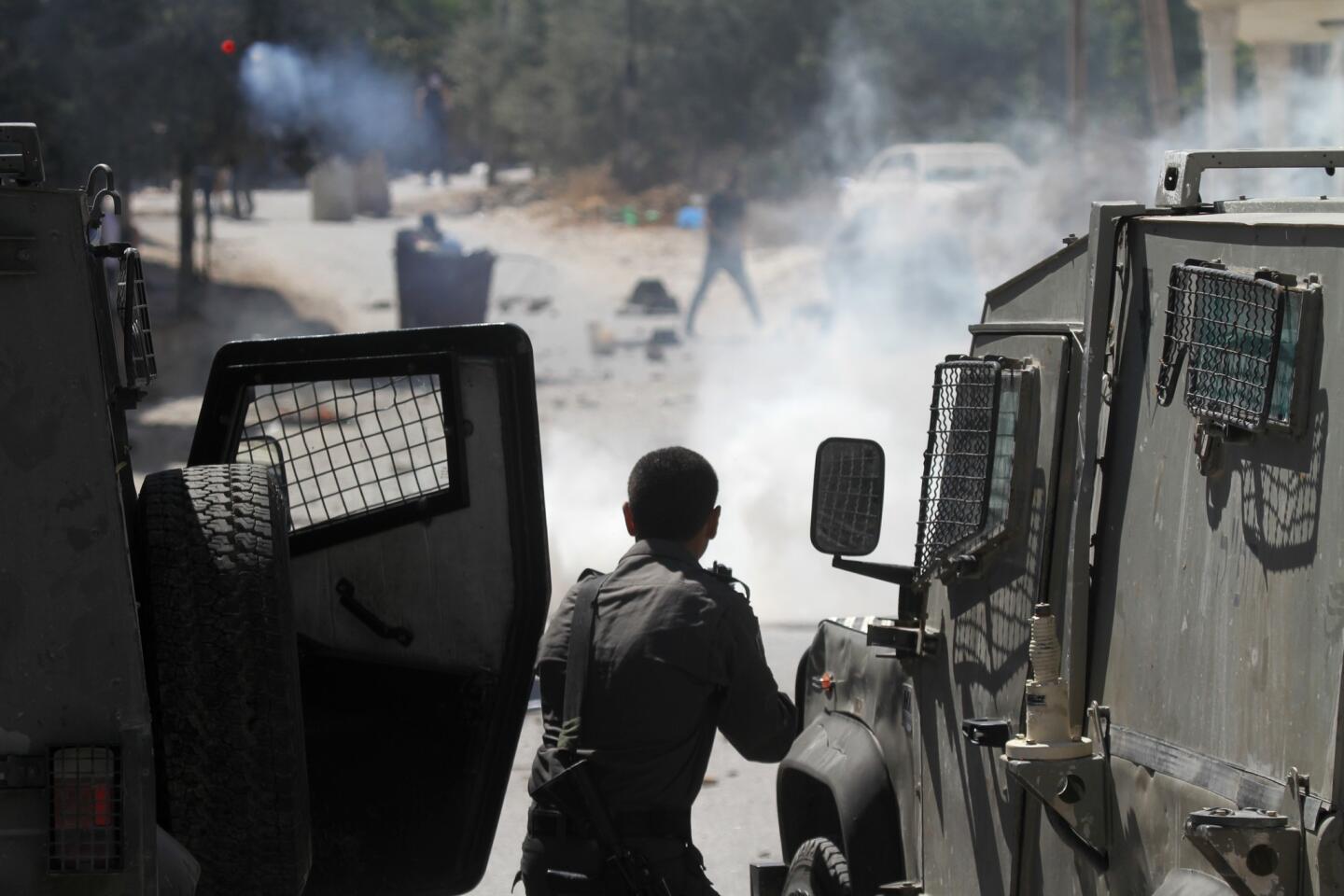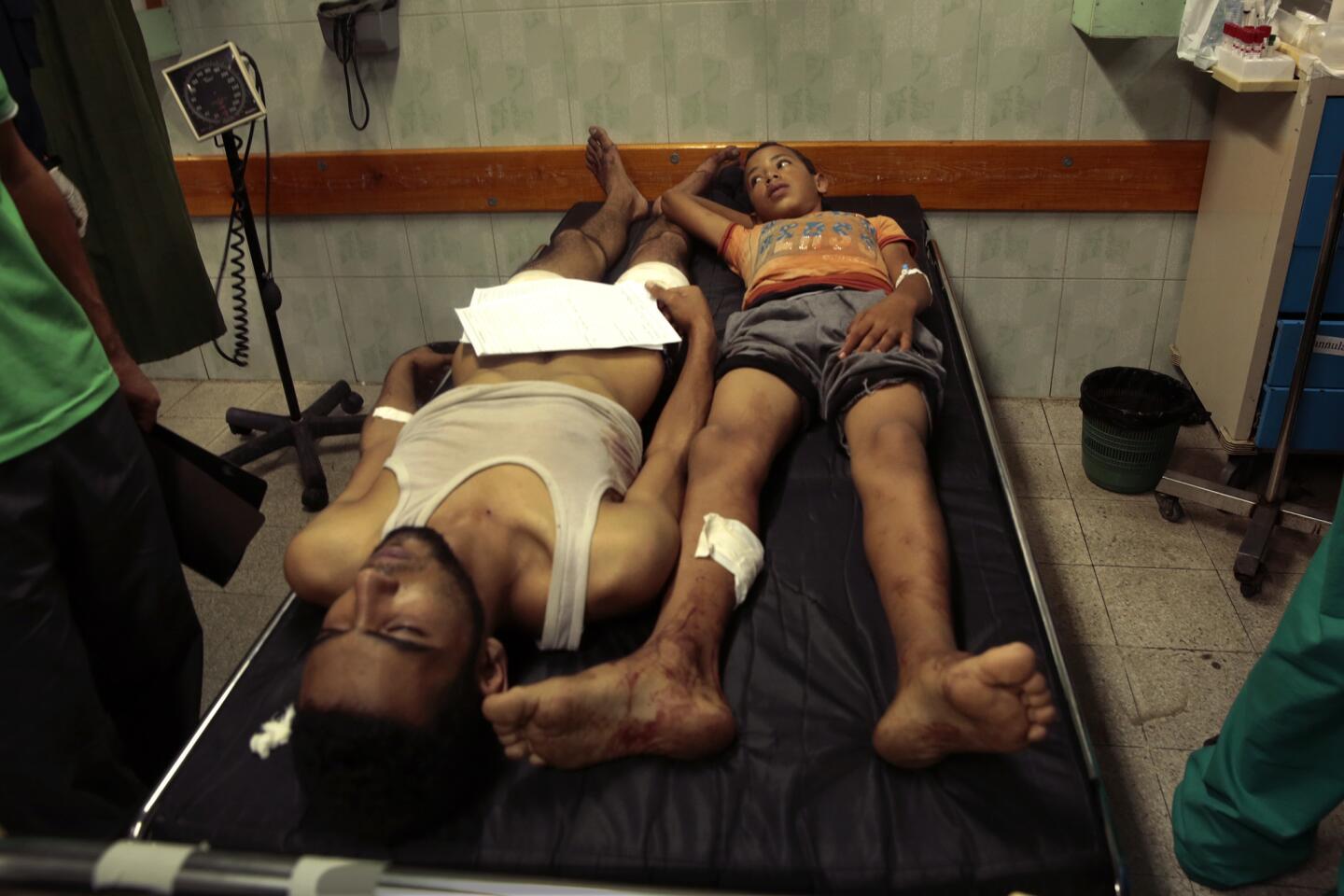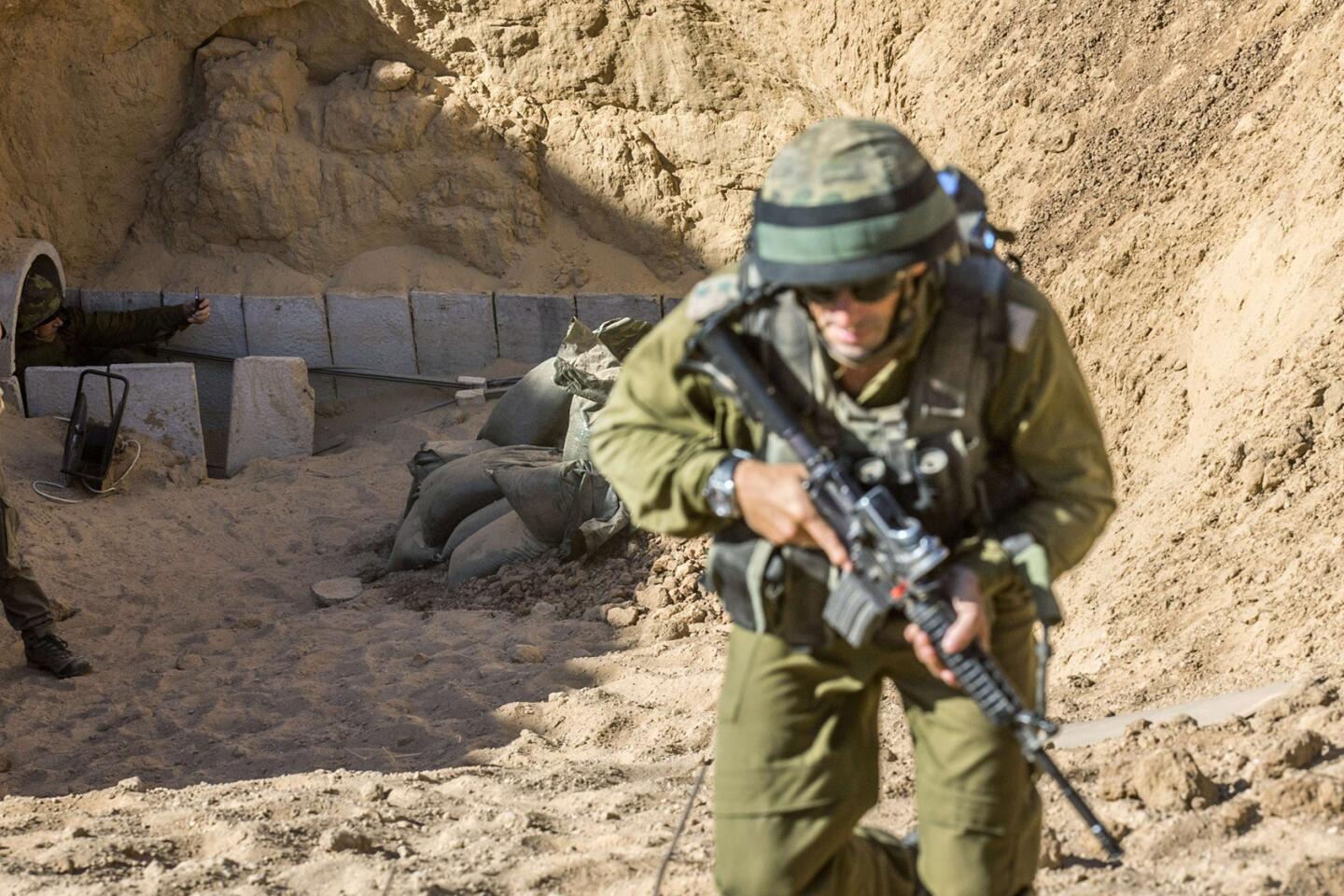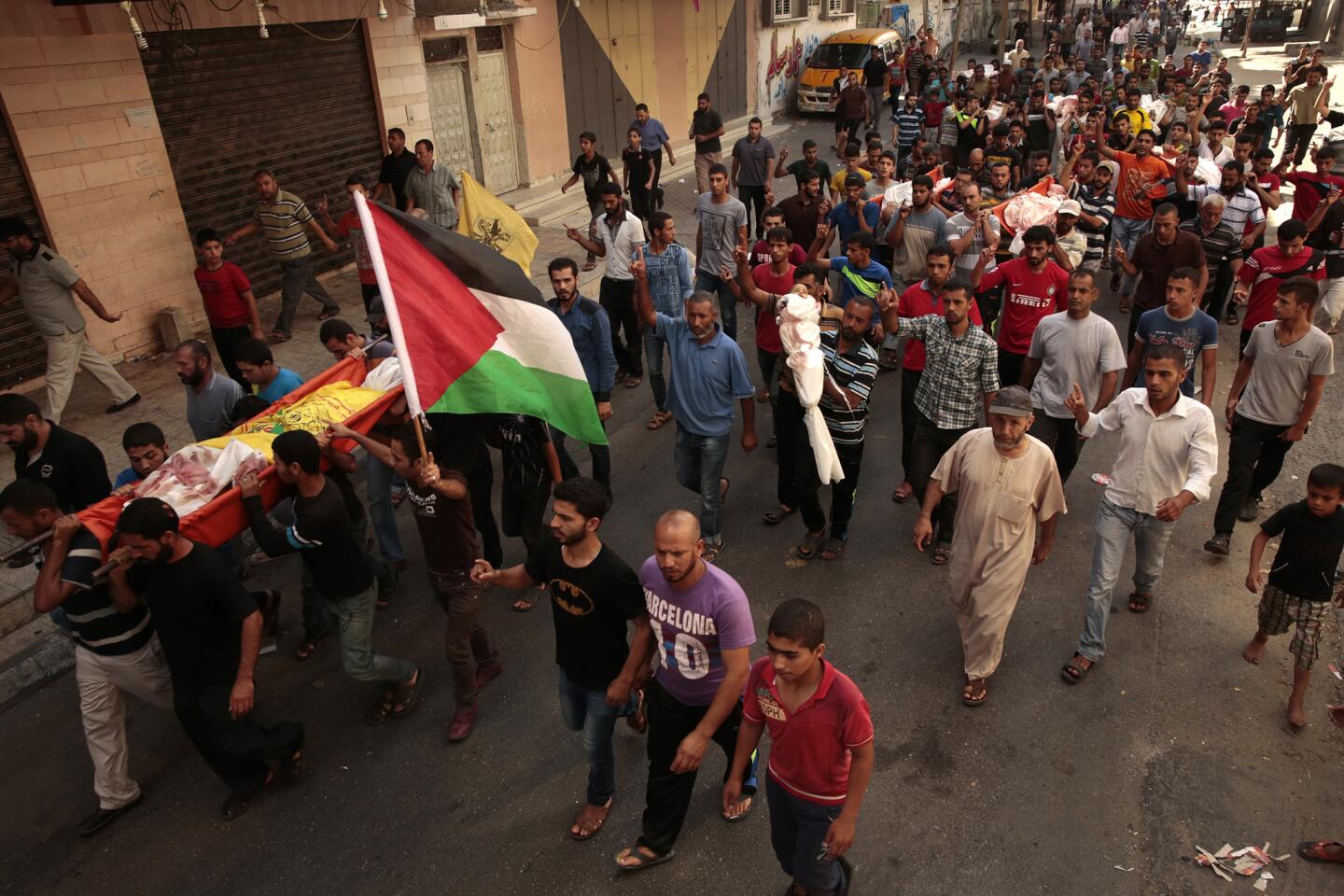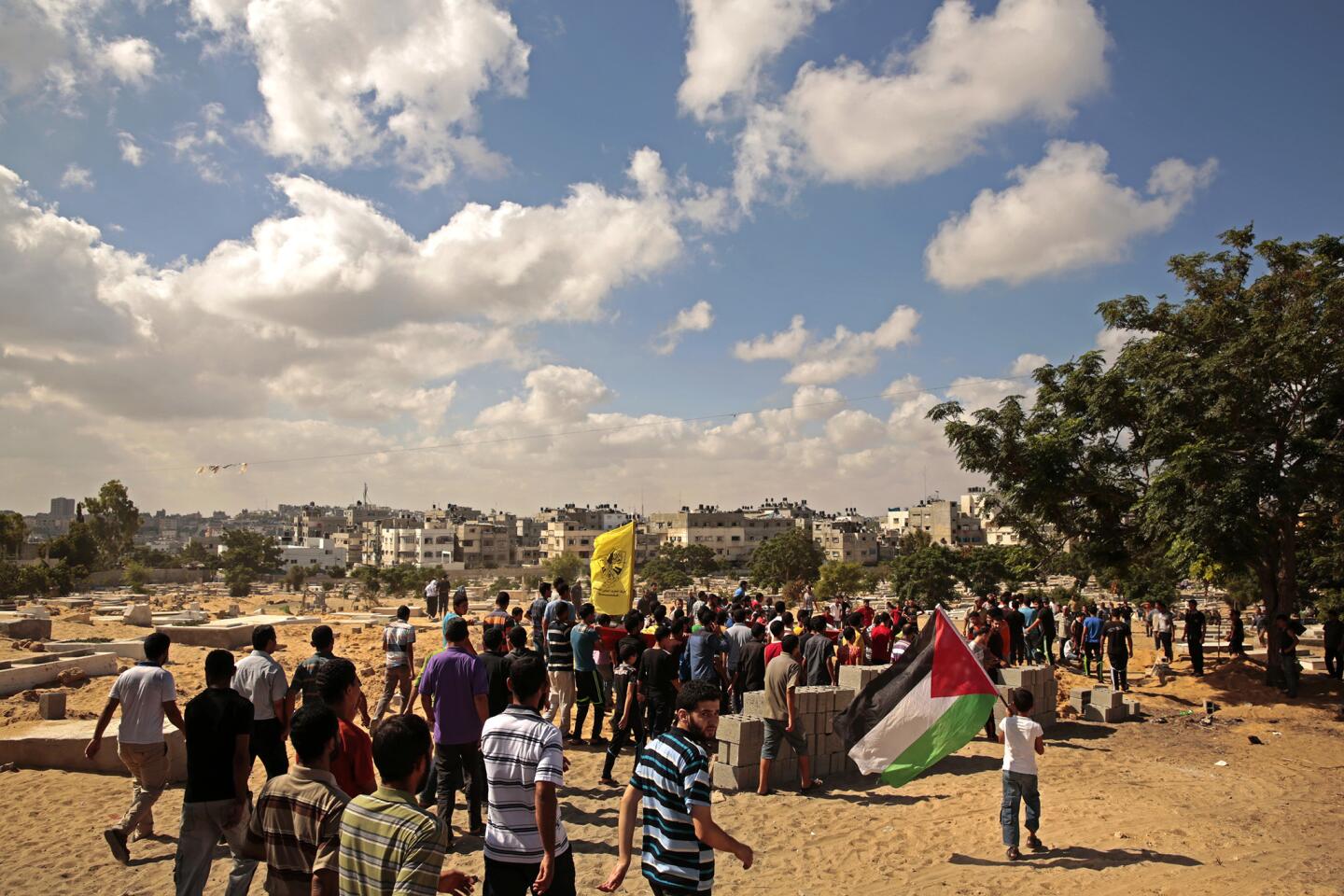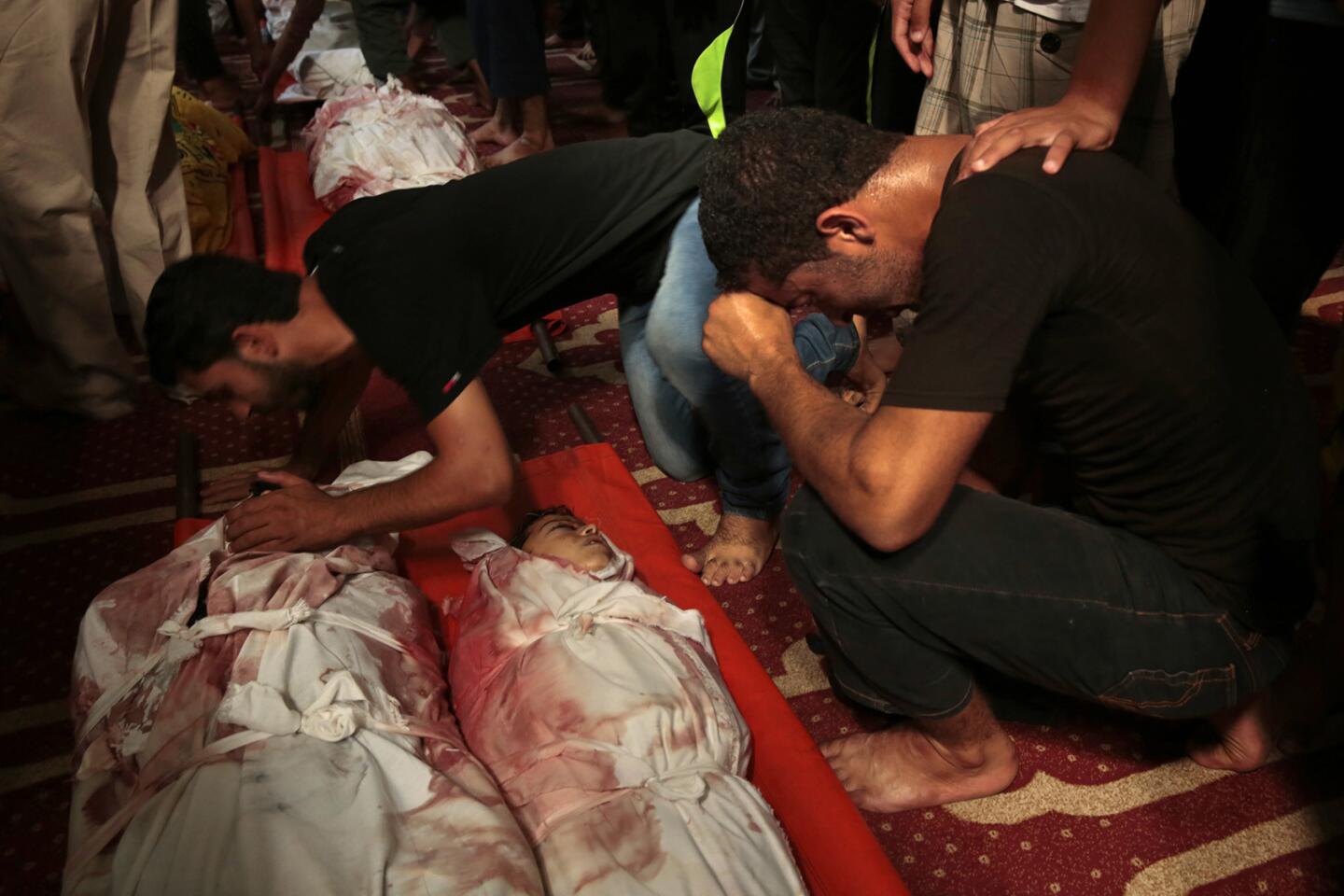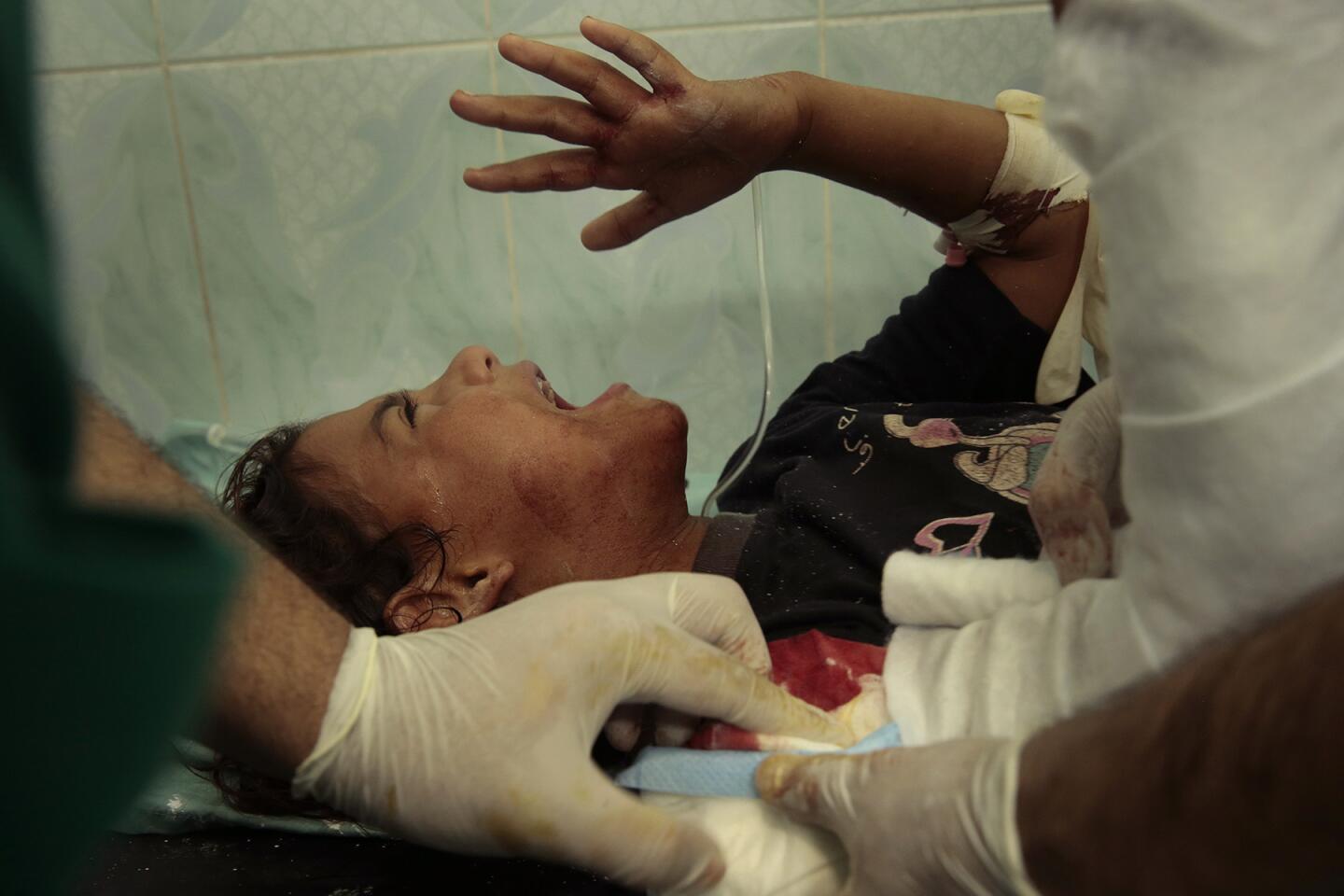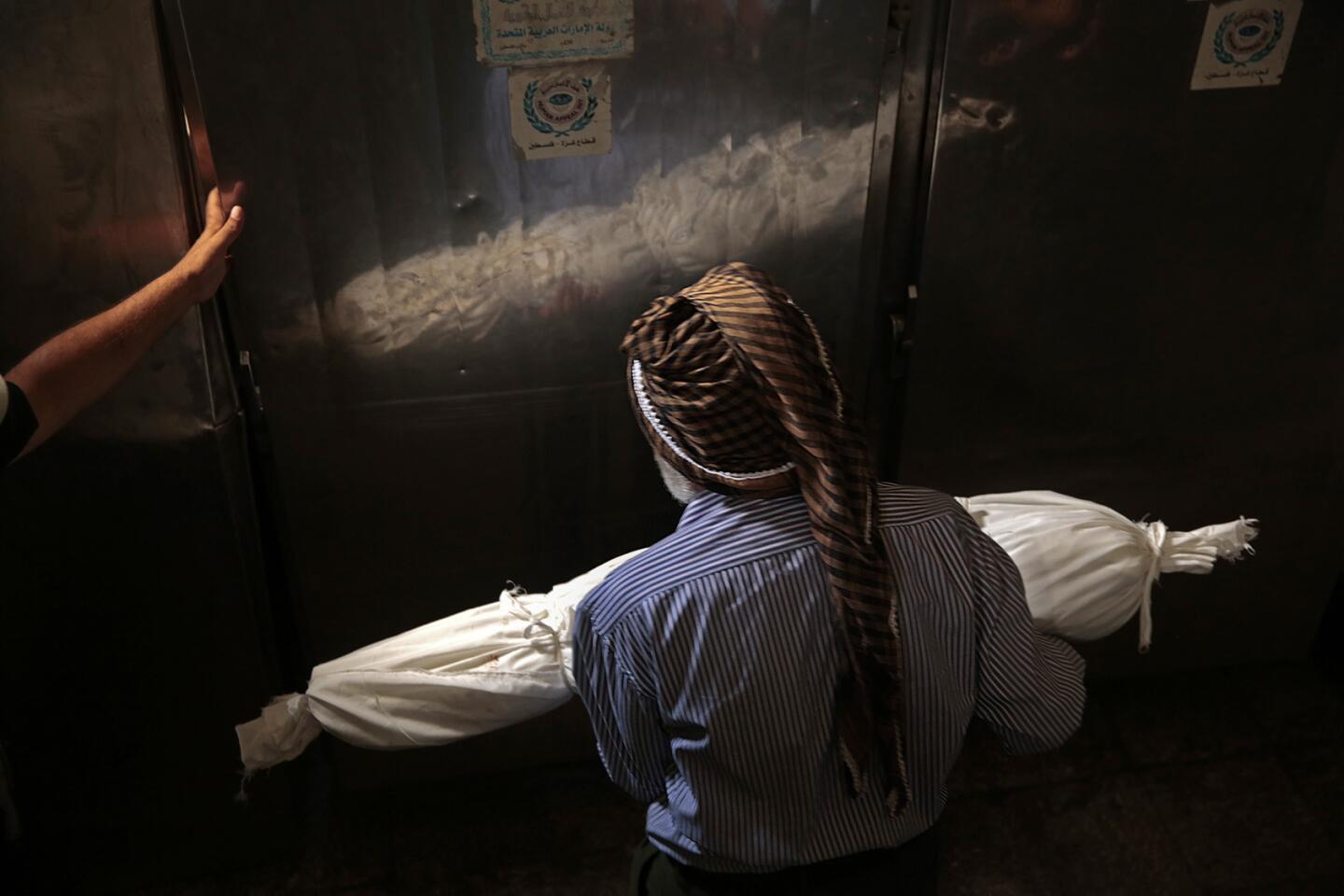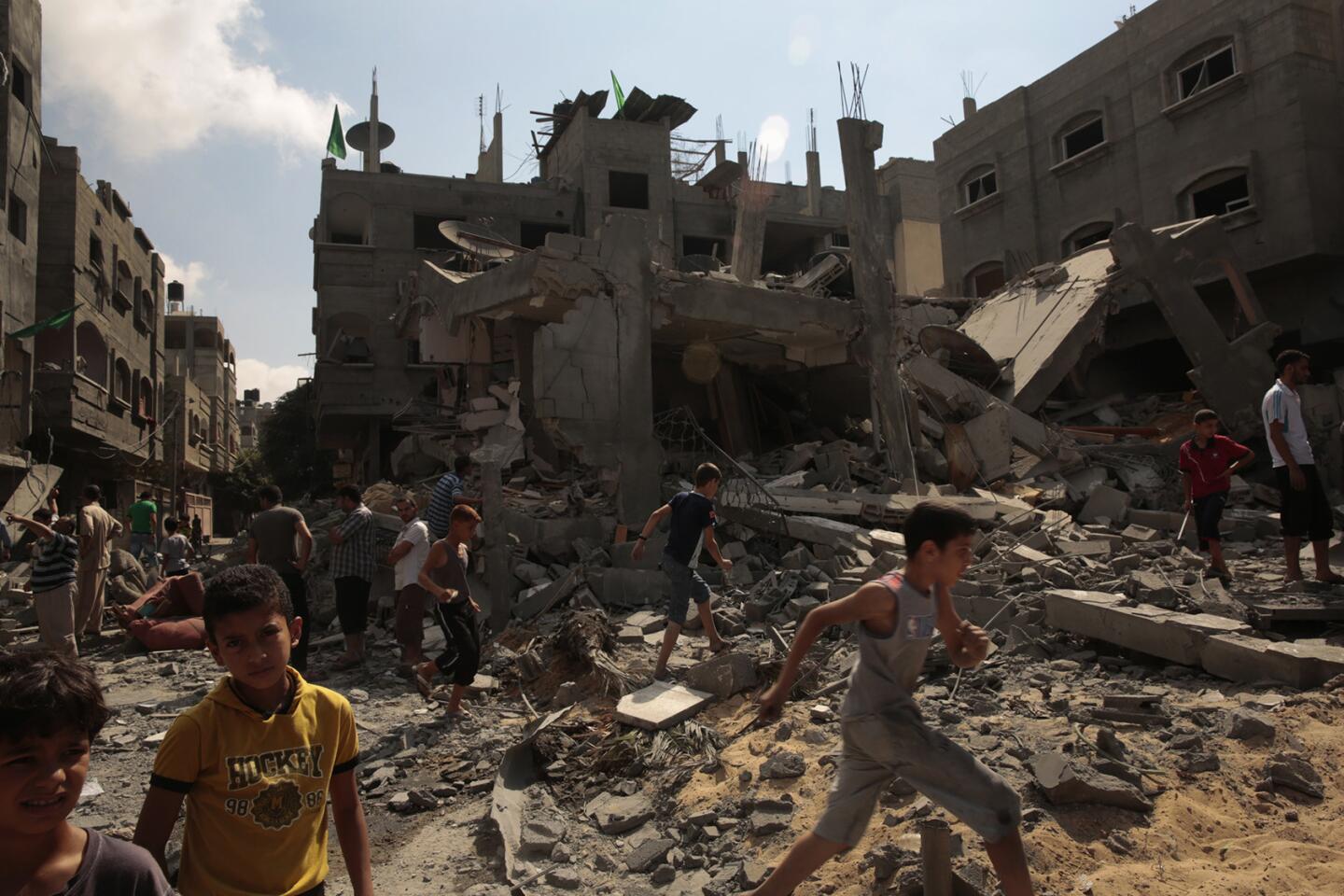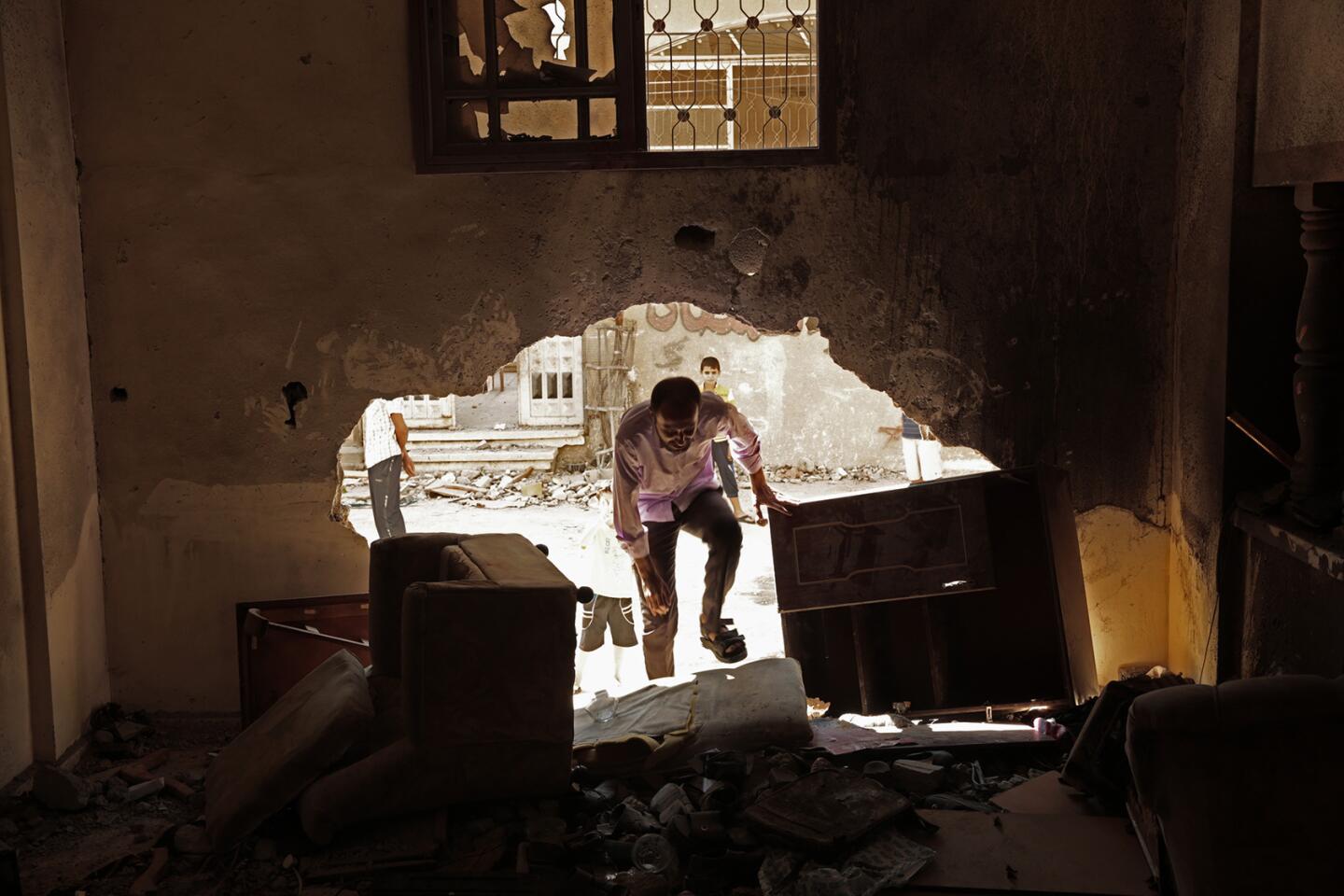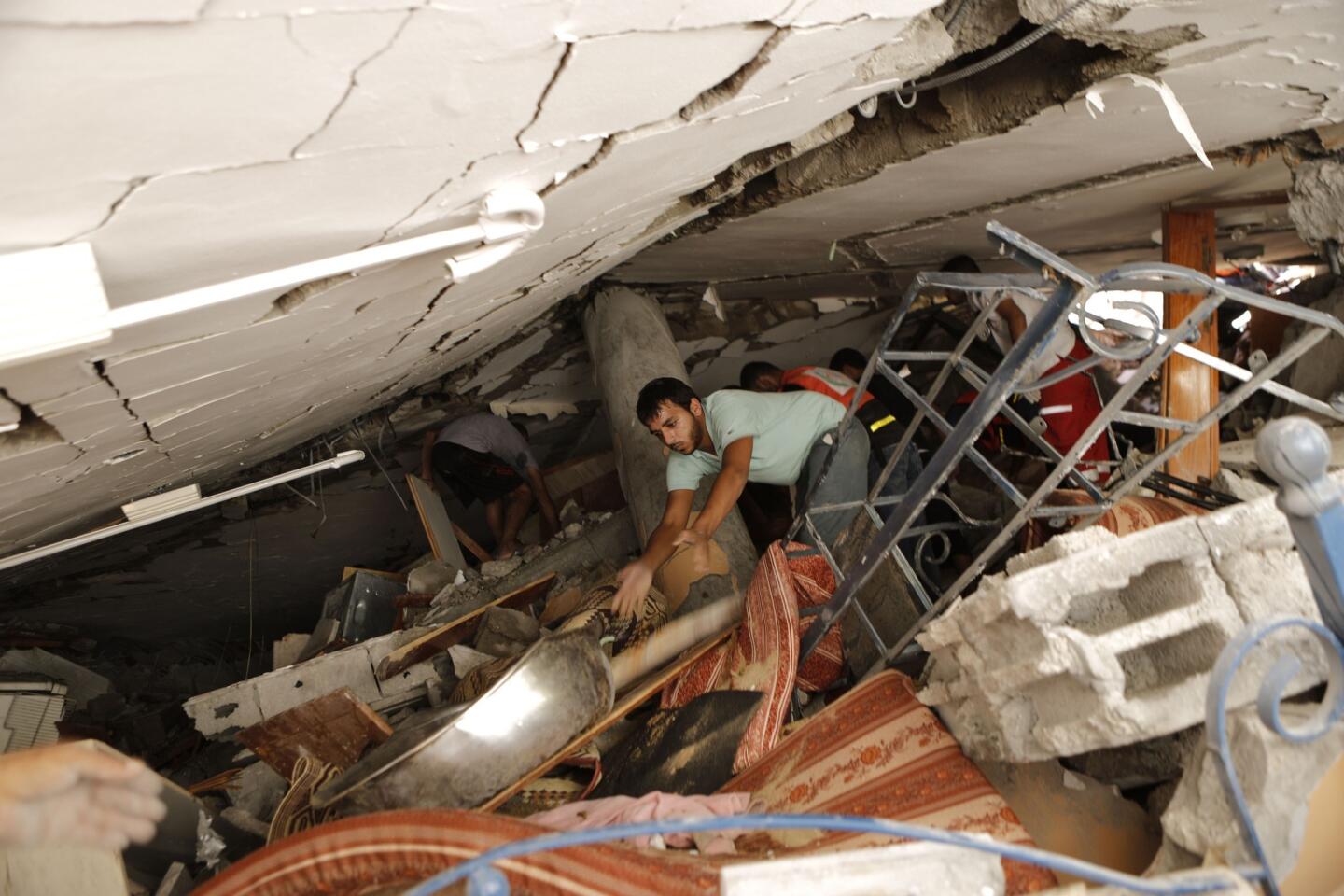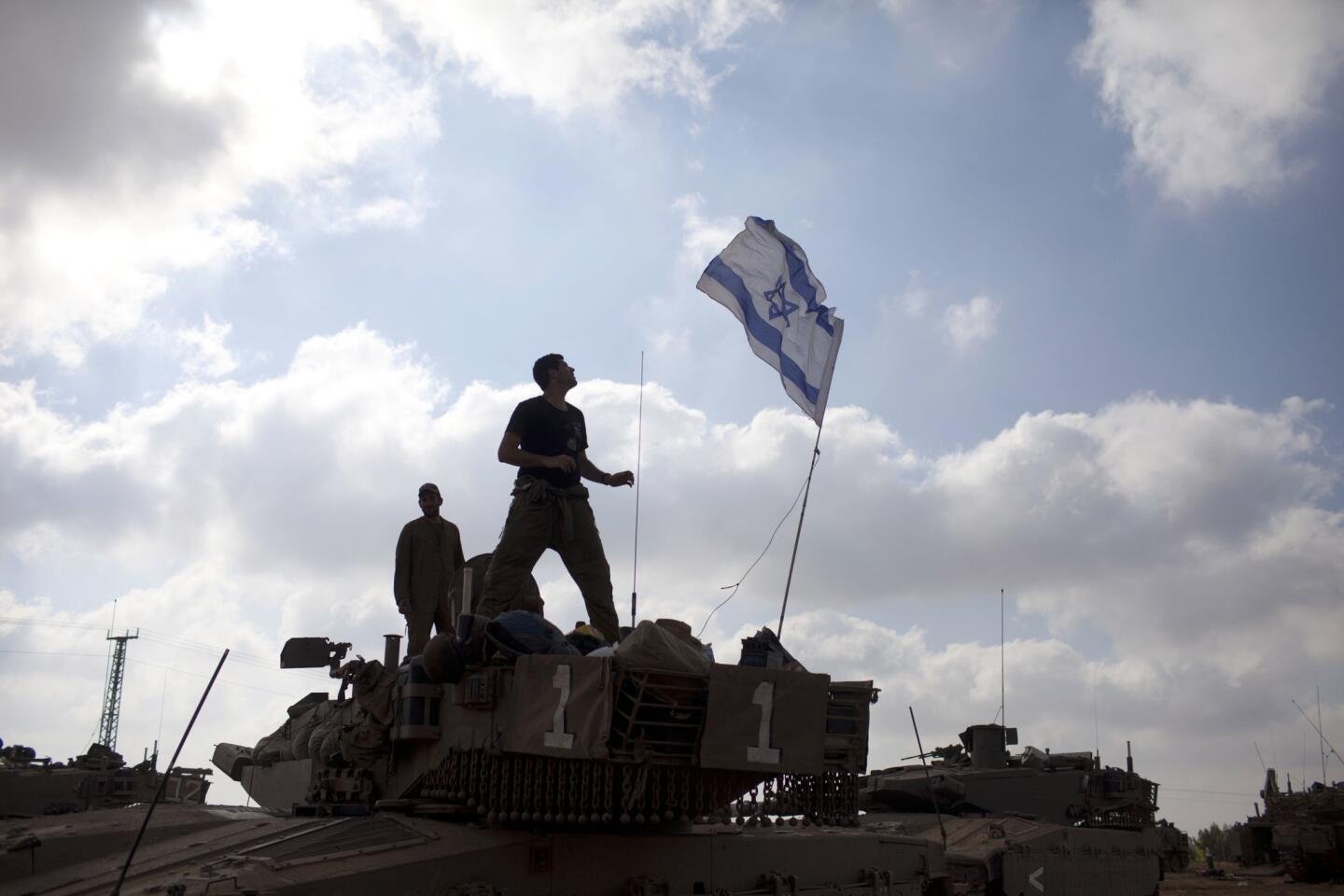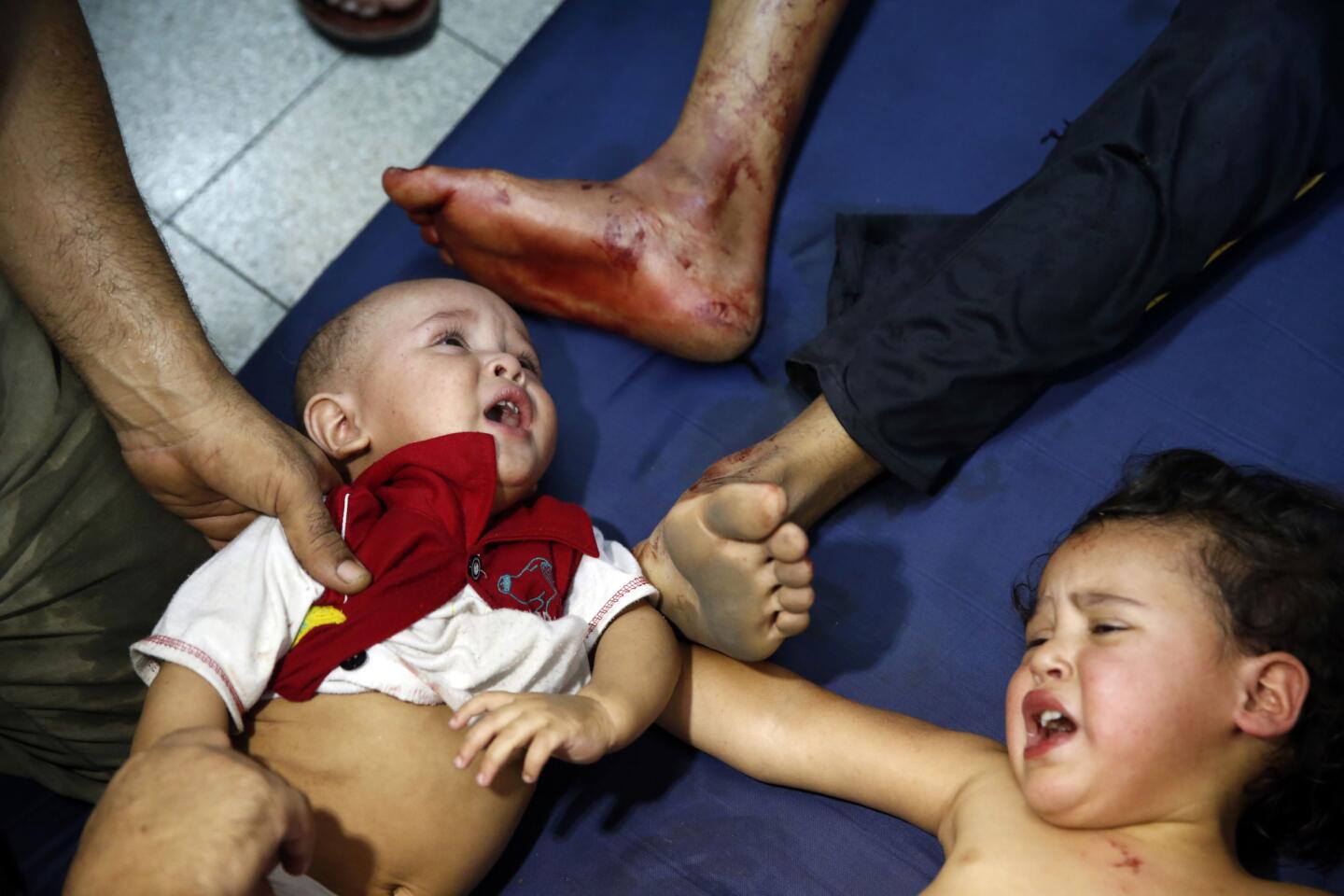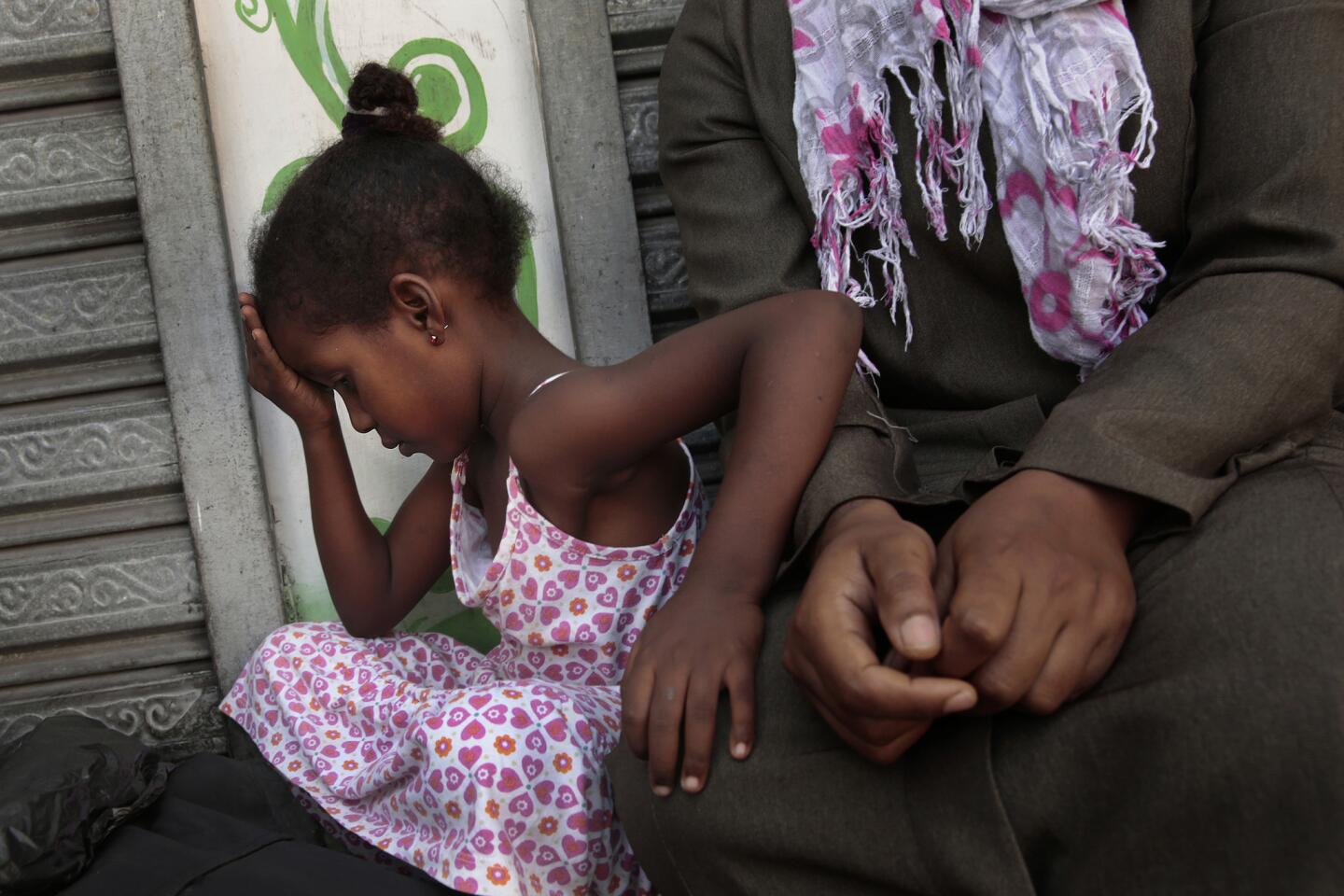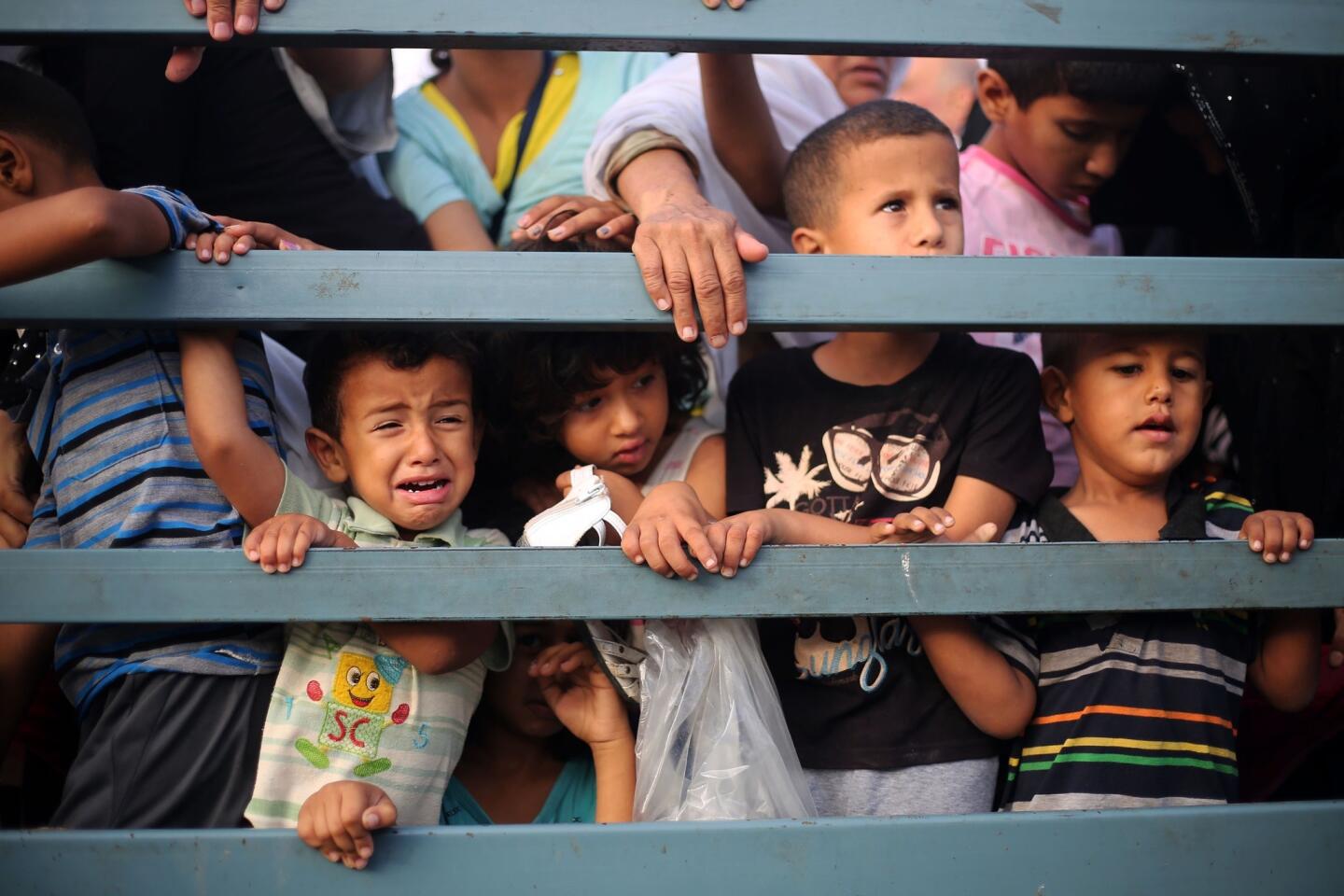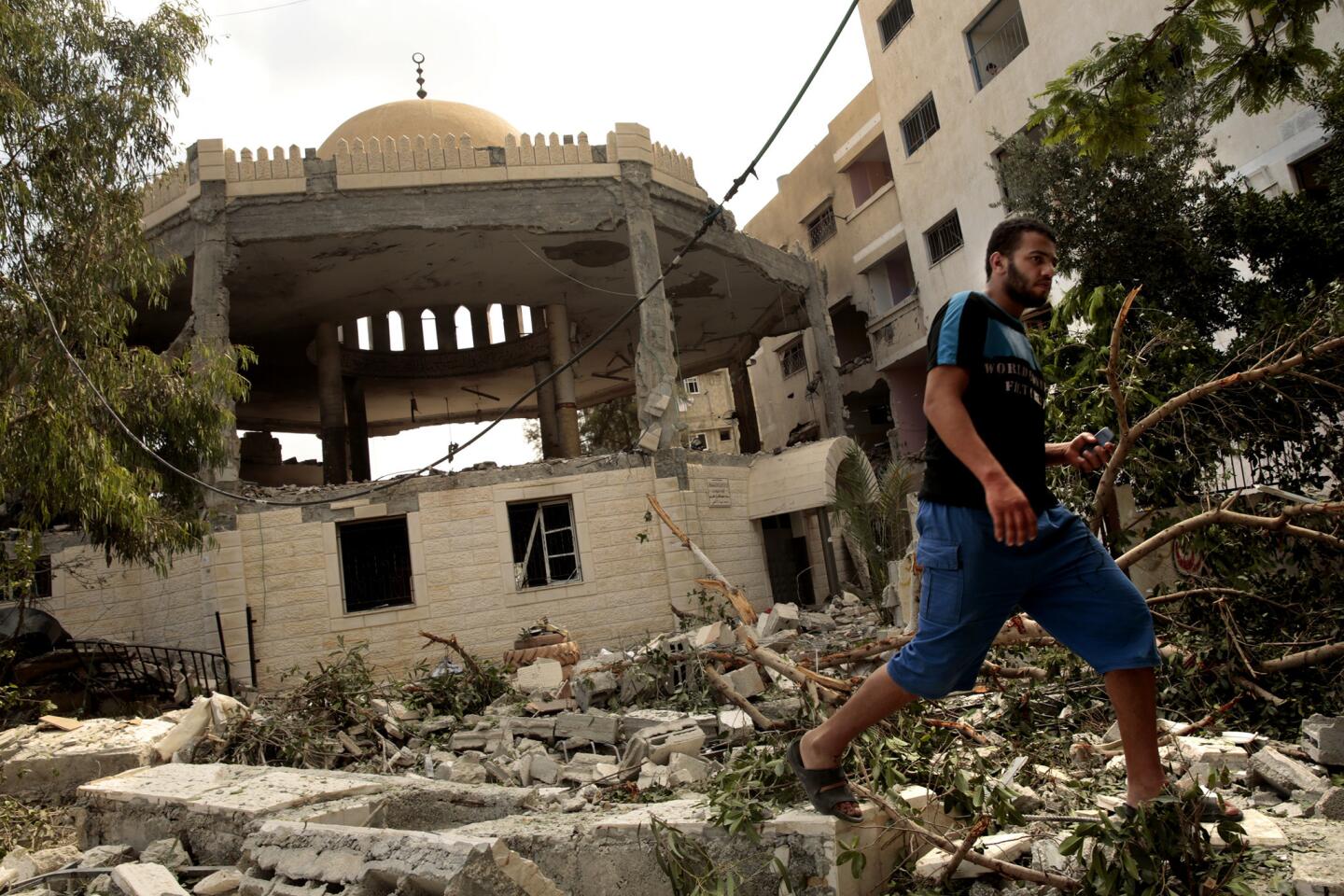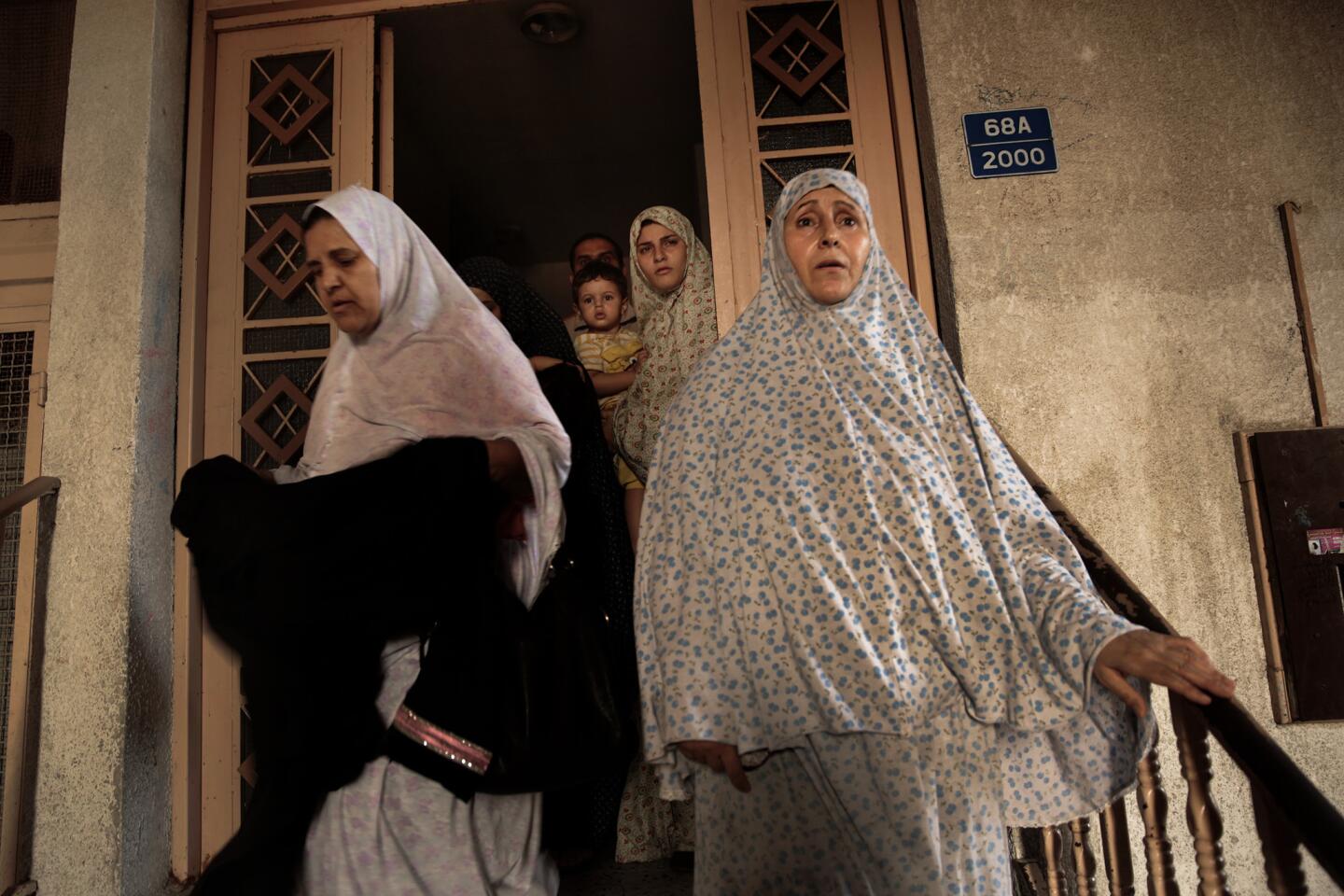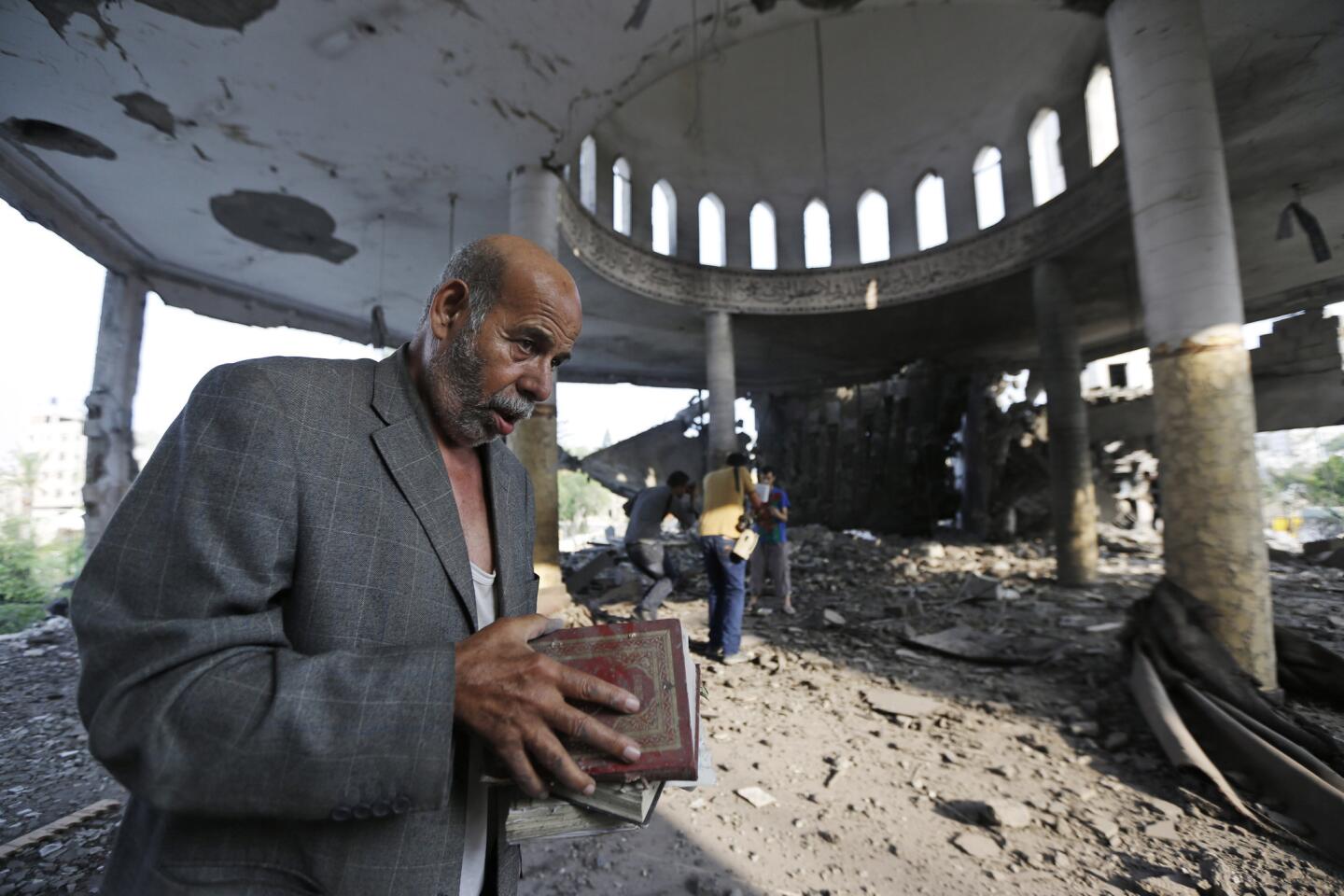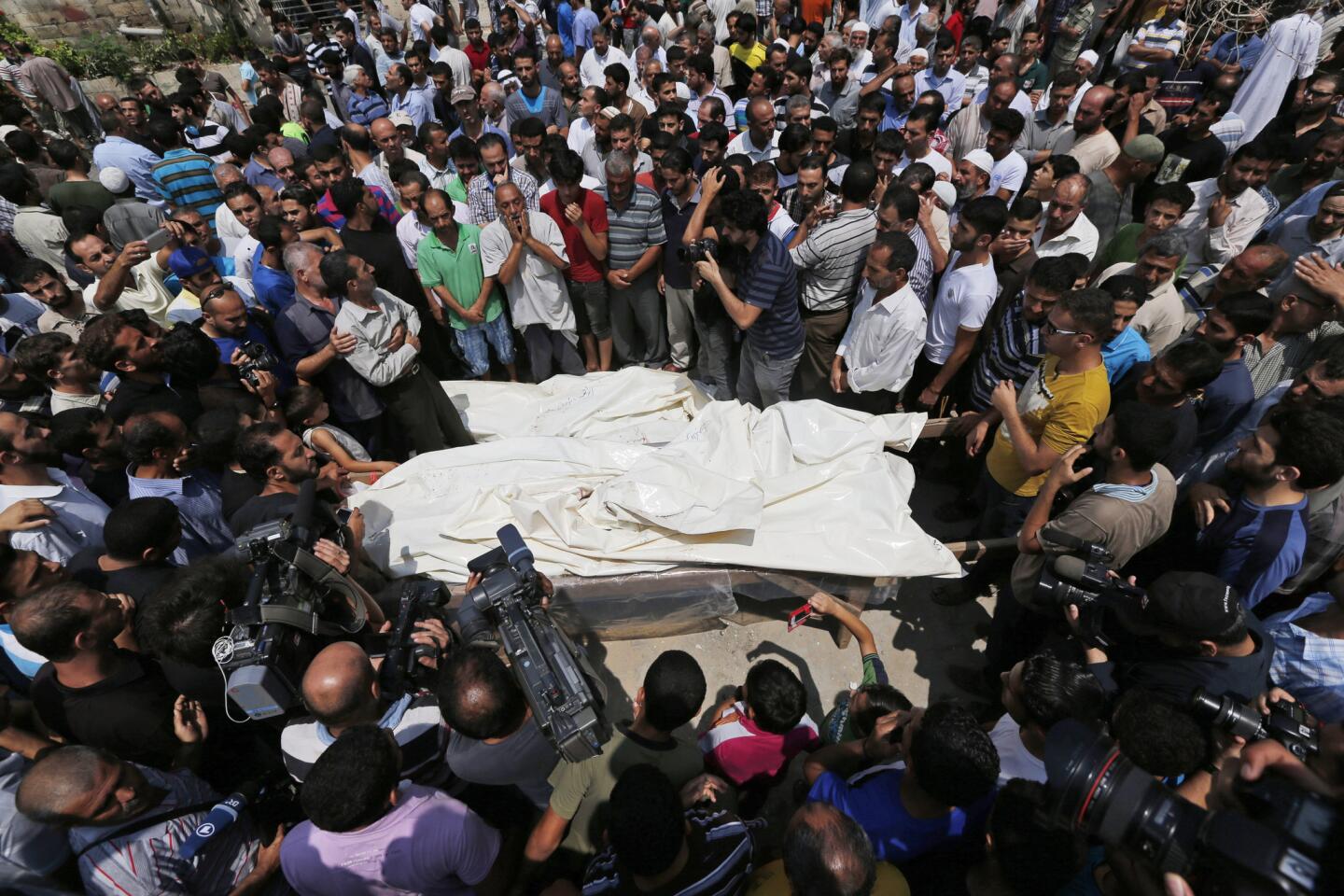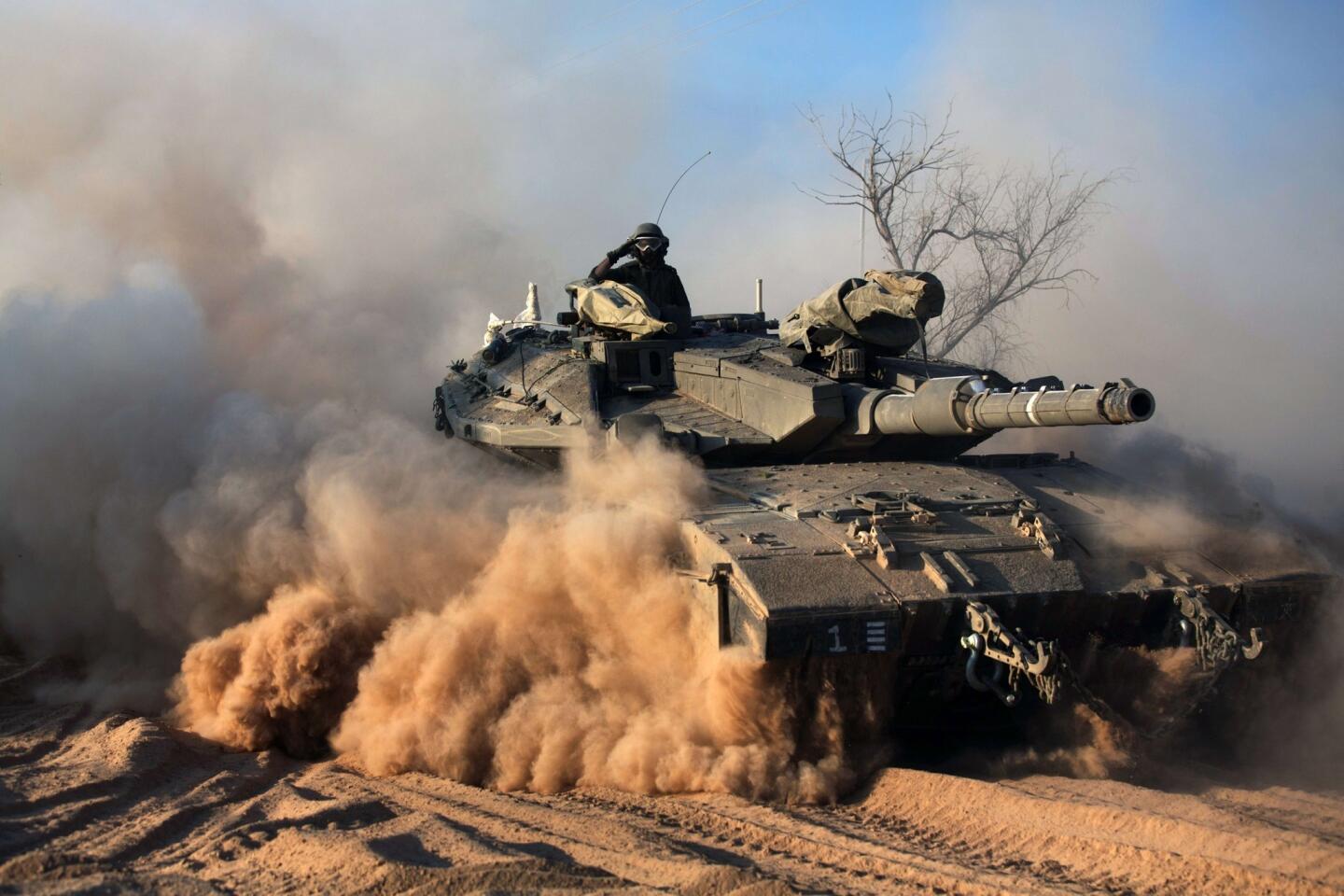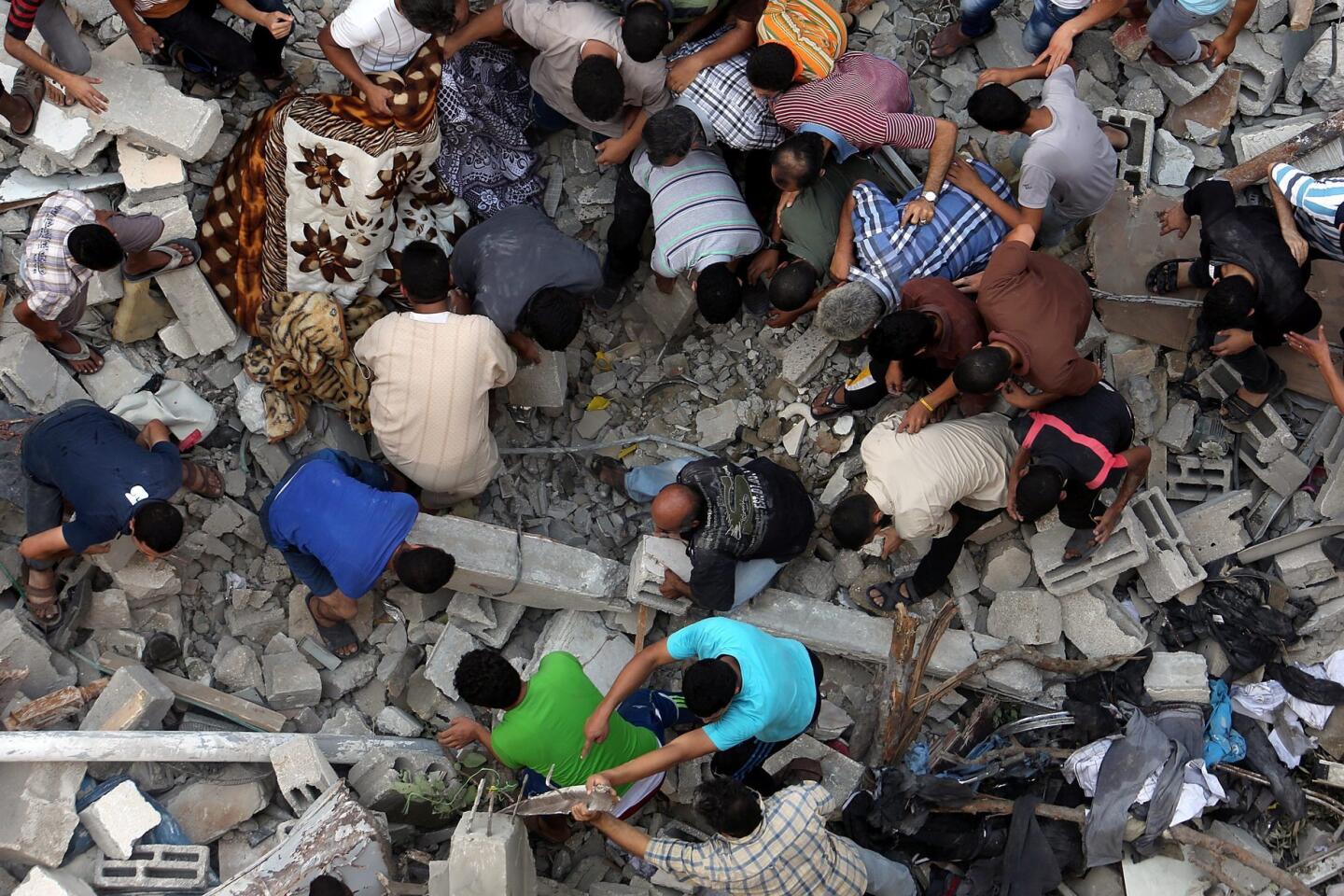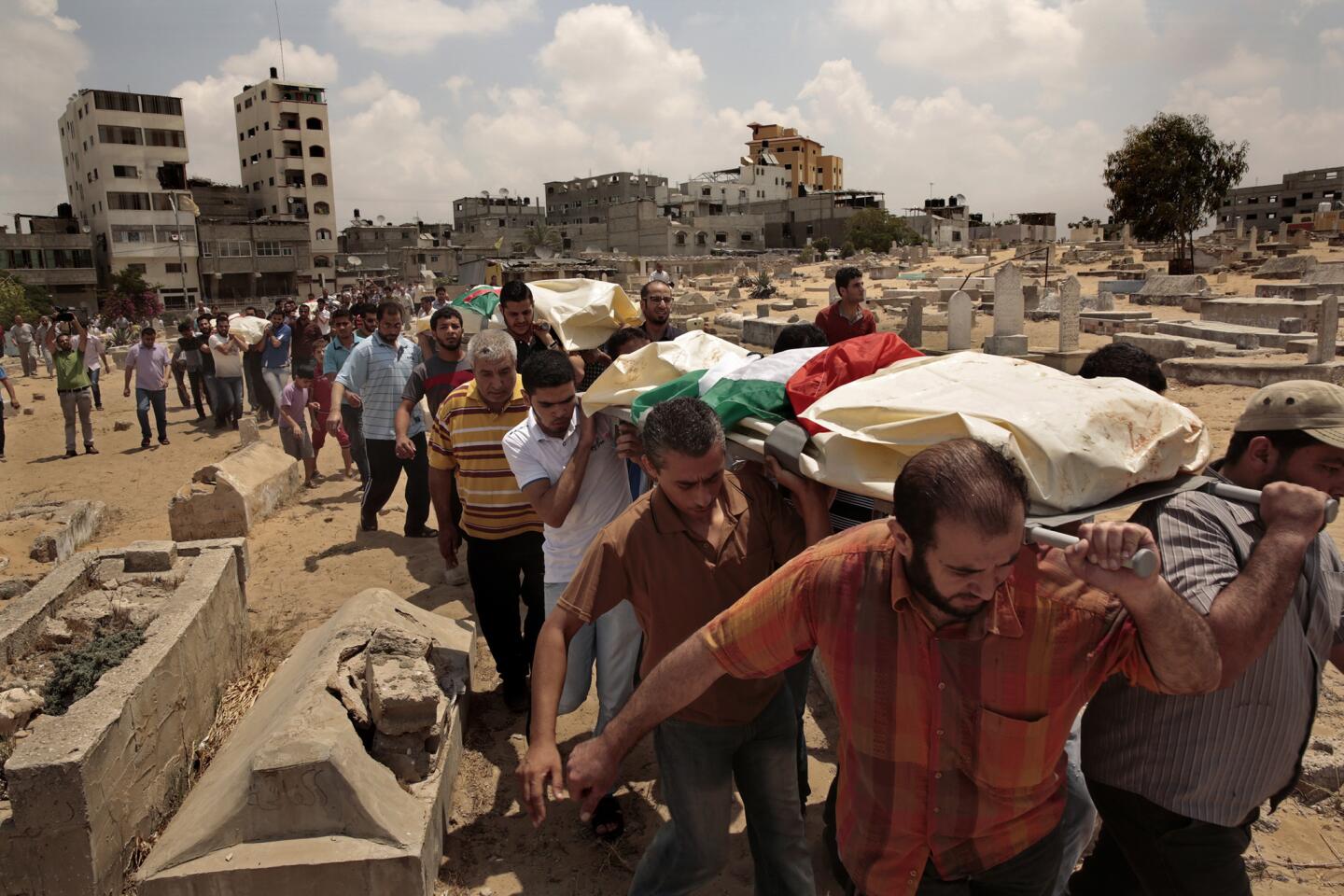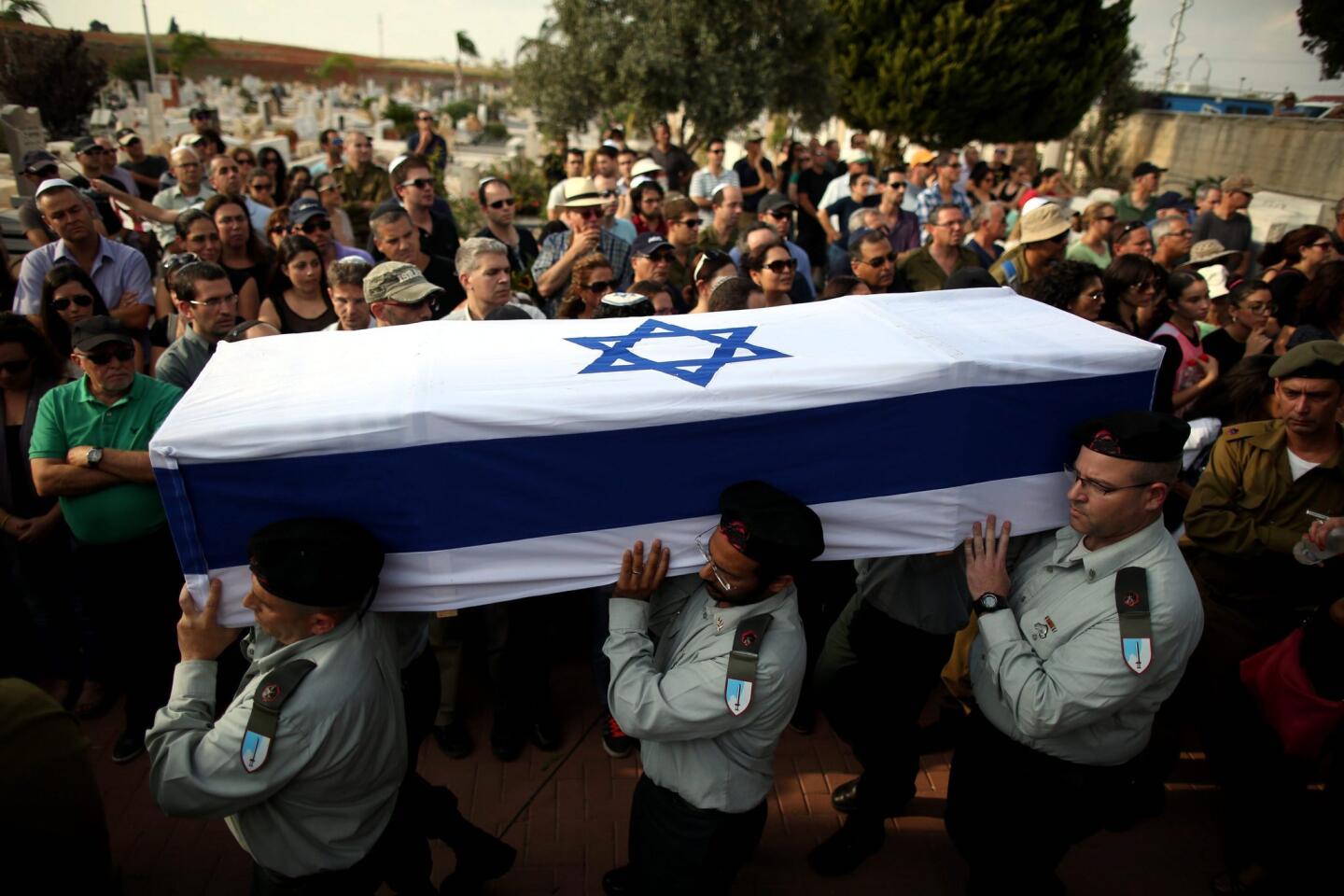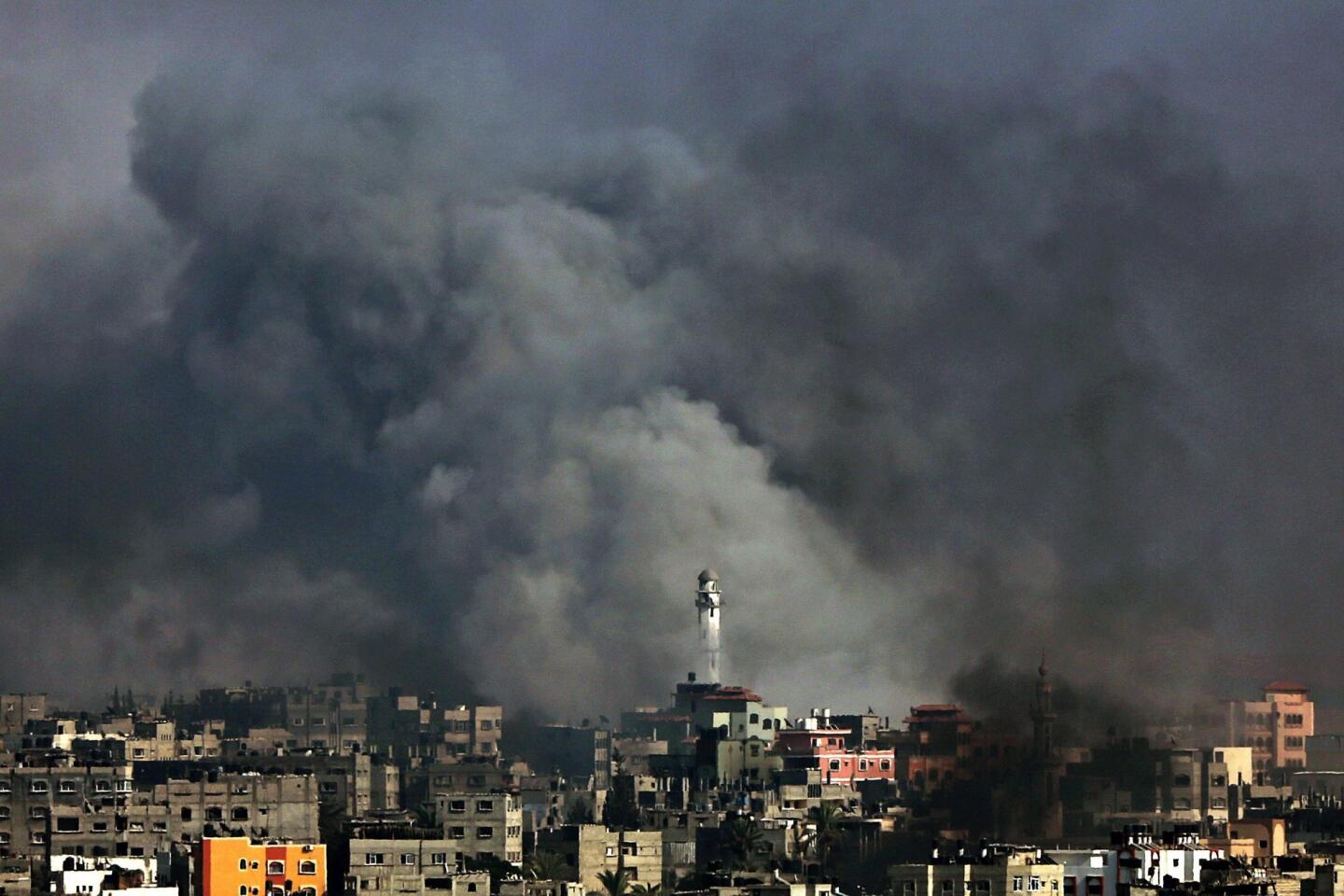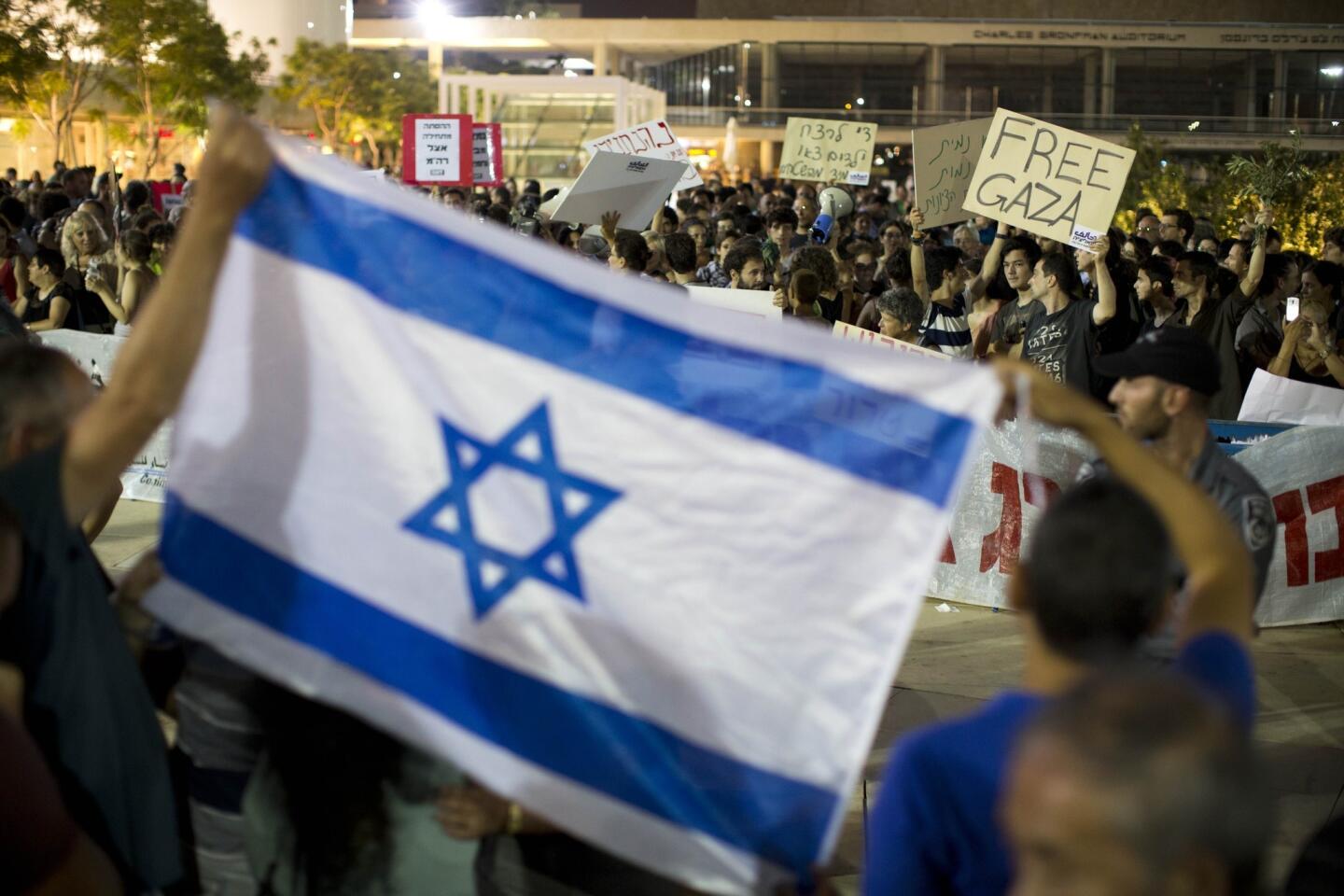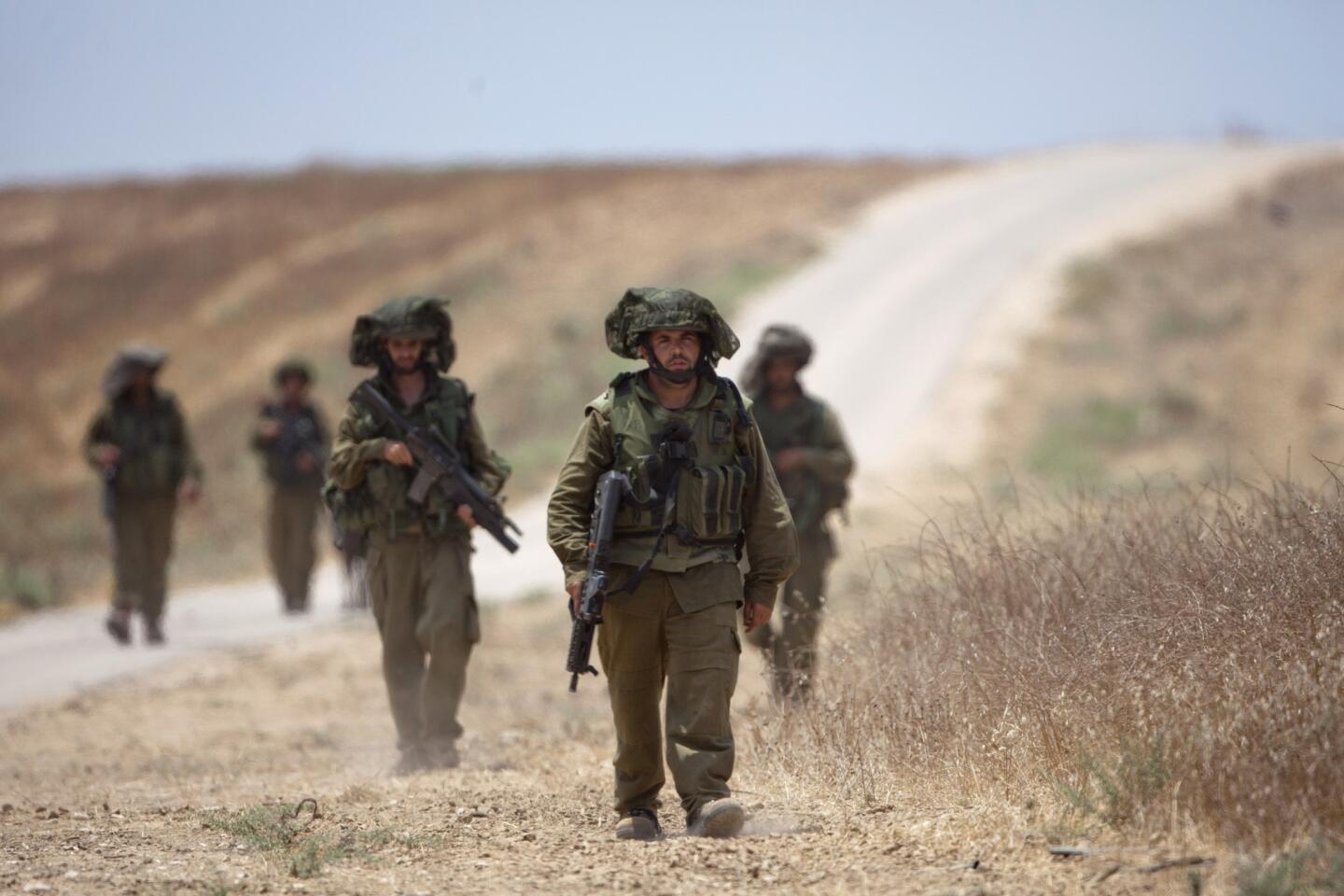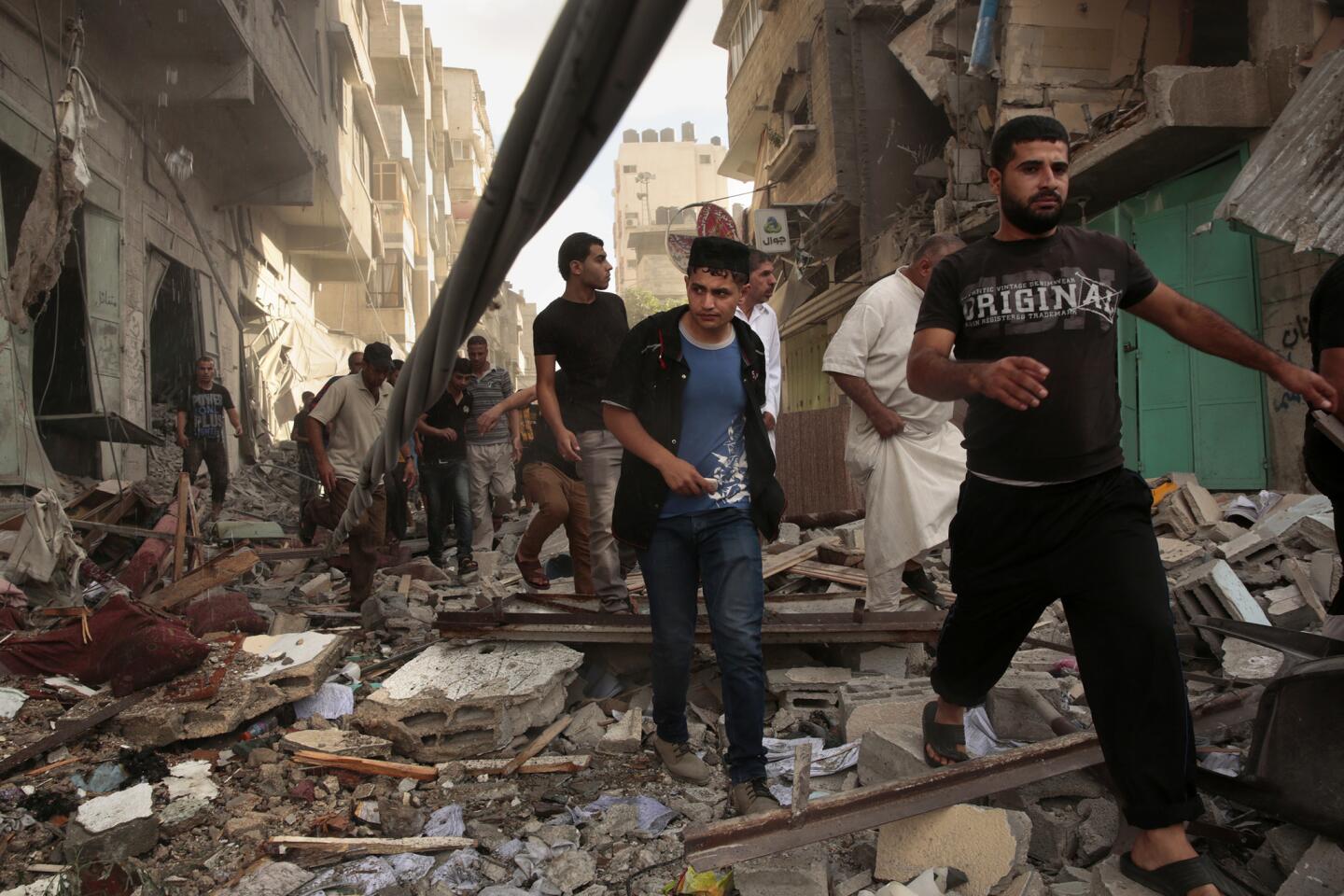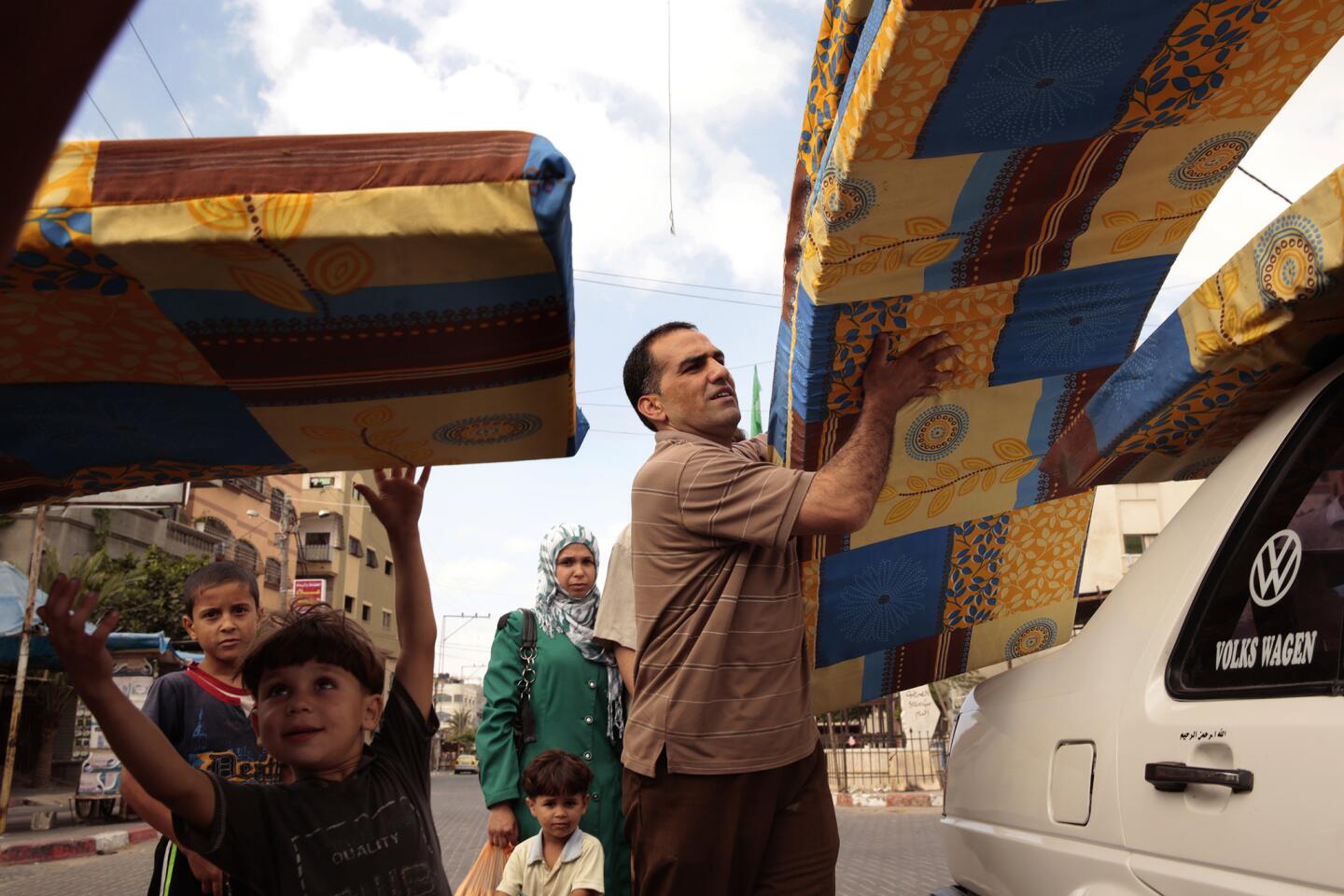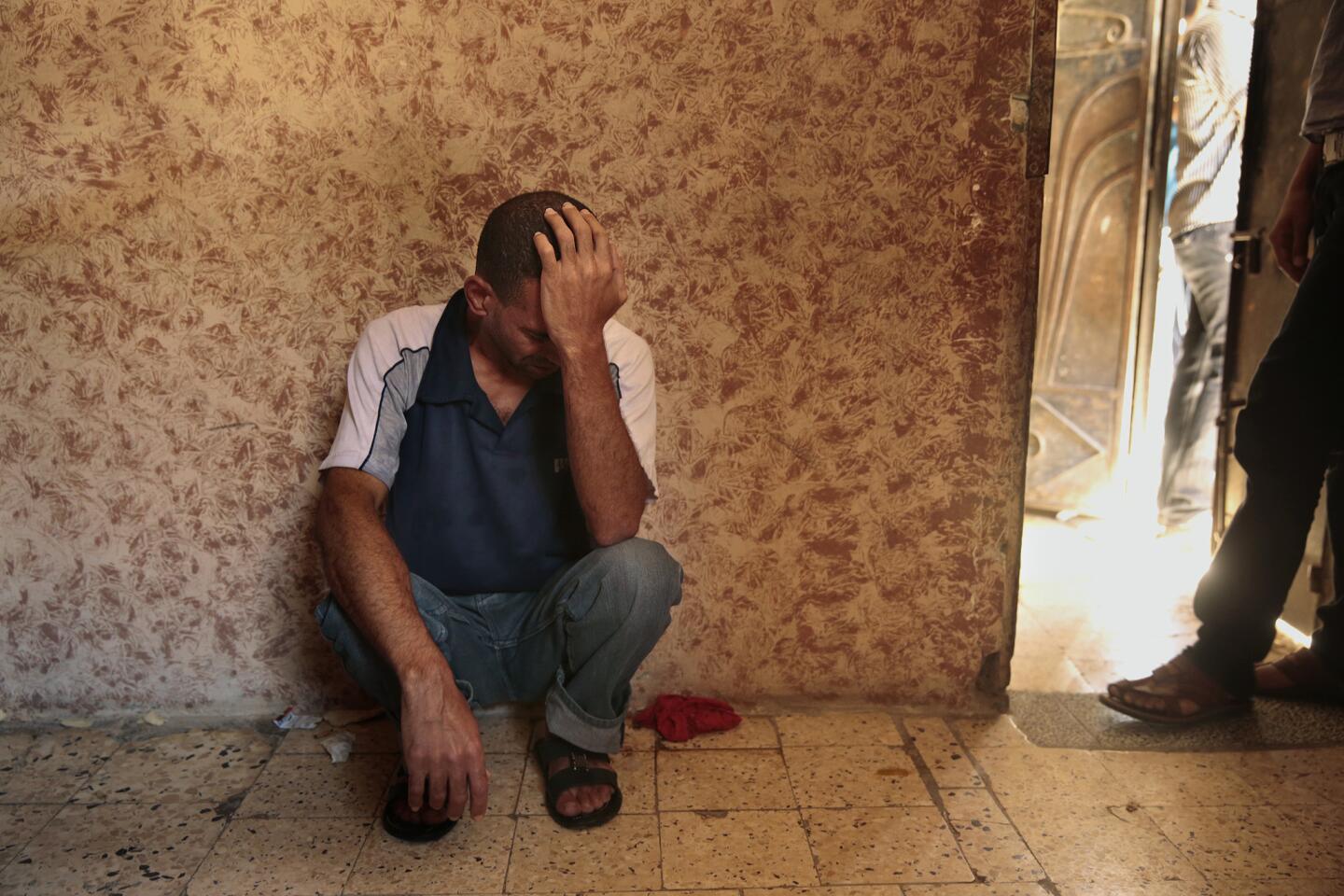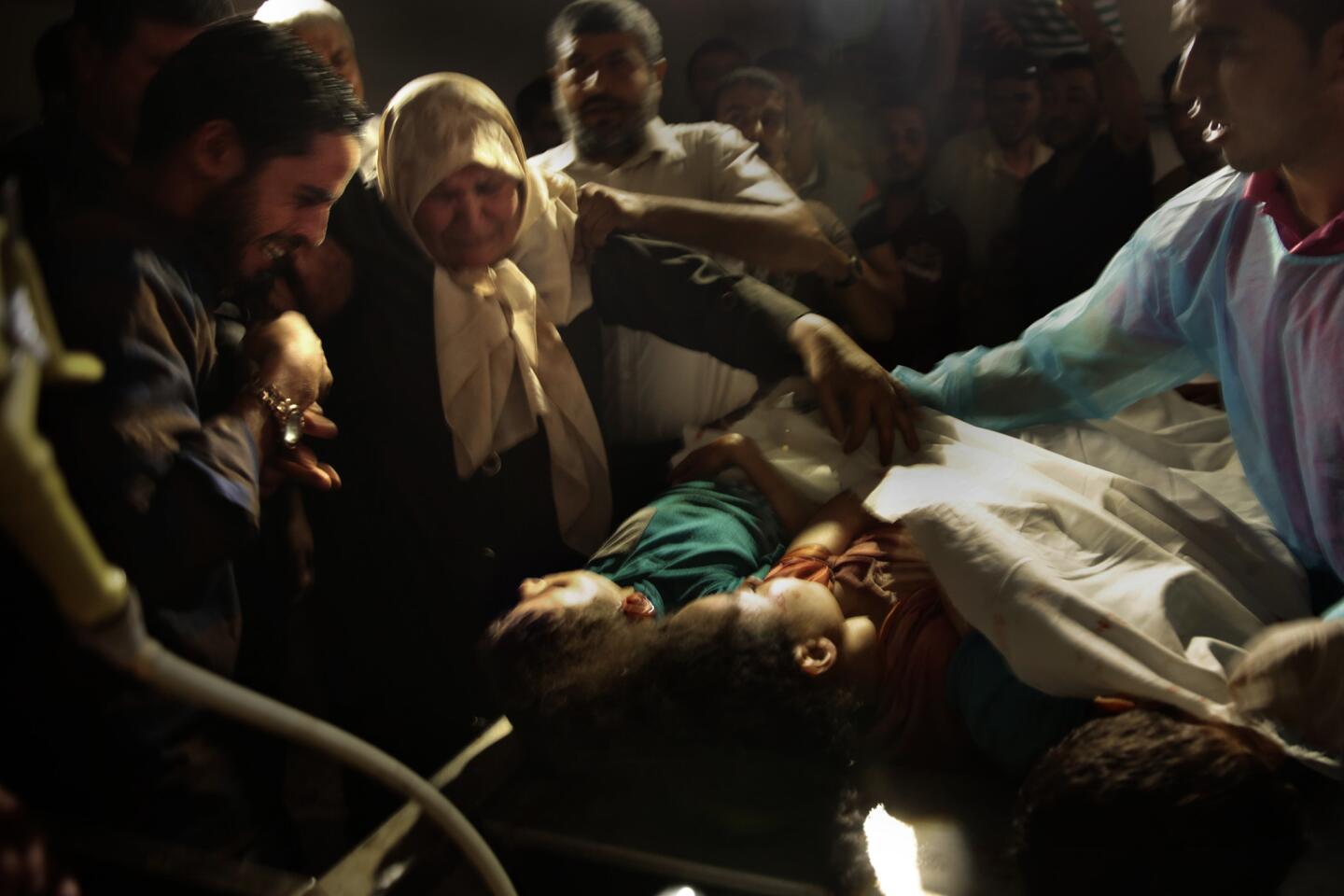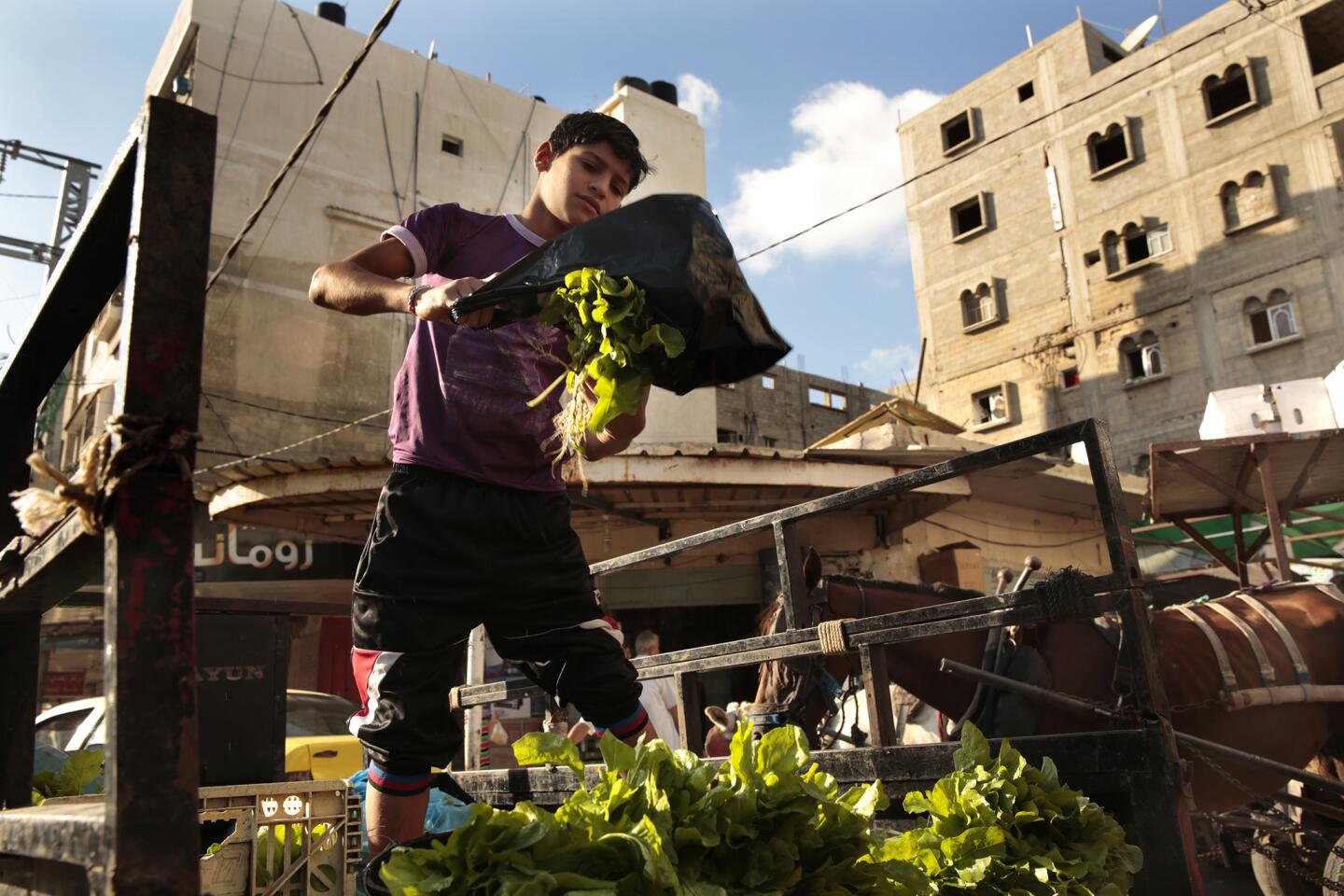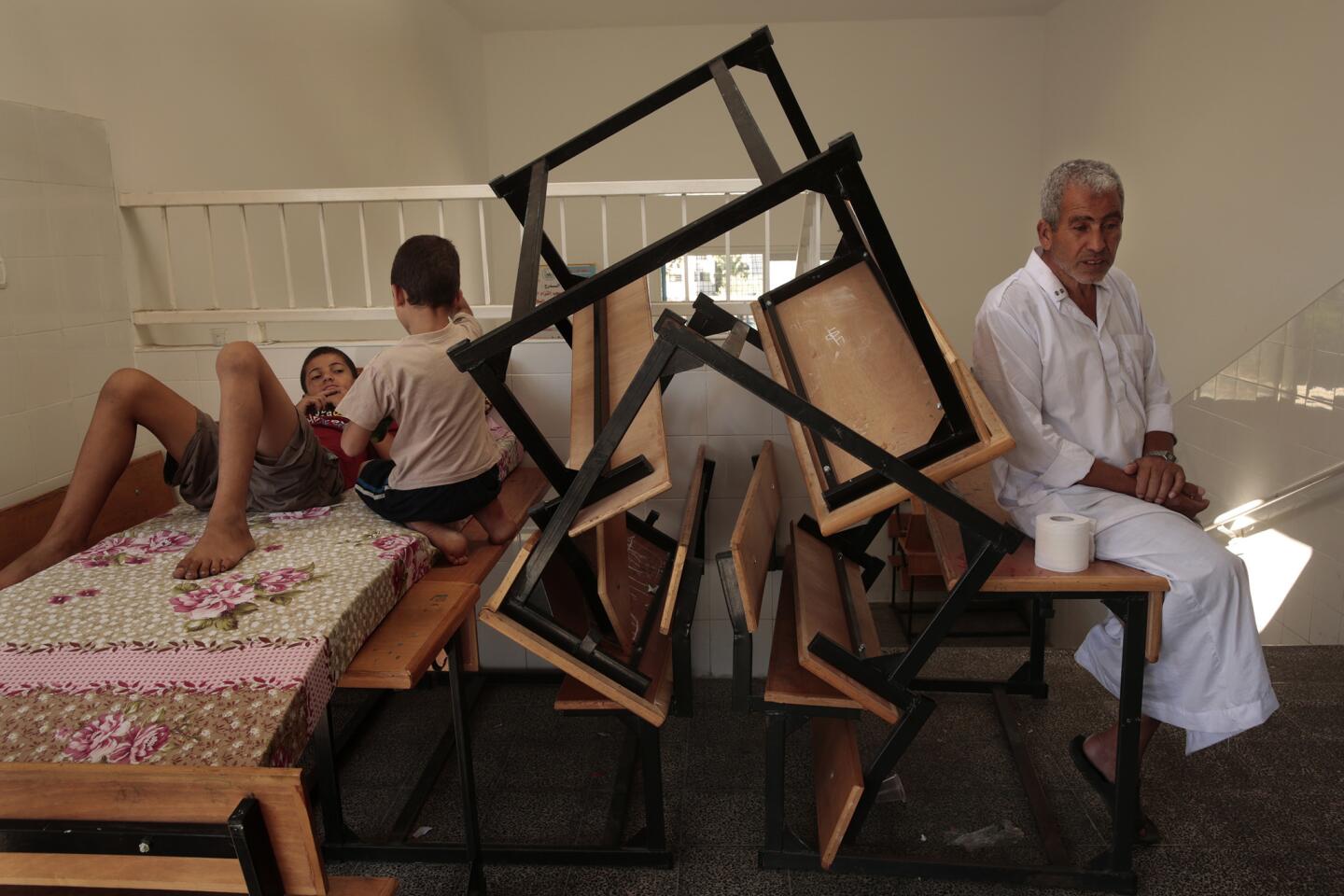Three-day truce between Israel, Hamas takes effect
- Share via
Reporting from Gaza City — A three-day cease-fire between Israel and Hamas meant to end a 4-week-old war in the Gaza Strip took effect Tuesday morning, as Israel declared it had rooted out all infiltration tunnels its troops had found.
Fire continued right up to the 8 a.m. ceasefire deadline (5:00 GMT) with multiple rockets launched at southern and central Israel as well as the Jerusalem area. Palestinians reported Israeli strikes around 15 minutes before the cut-off.
The last of Israel’s ground forces were to be withdrawn from the Palestinian enclave at the start of the ceasefire.
“We will be redeploying in defensive positions outside of the Gaza Strip and we will maintain these defensive positions,” IDF spokesperson Peter Lerner said.
He added, “The IDF will respond if it is attacked, and if there are strikes against us.”
Monday saw a noticeable fall-off in hostilities.
It remained uncertain whether the government of Prime Minister Benjamin Netanyahu would agree in coming days to a negotiated end to the conflict.
Another possibility was that it would taper off the fighting unilaterally, while continuing to utilize targeted airstrikes like the one early Monday that killed a commander of Islamic Jihad, an ally of Hamas, the militant groups that runs Gaza and was Israel’s main antagonist.
Talks were to take place in coming days in Cairo, where a Palestinian delegation has been meeting with Egyptian officials and an Israeli delegation was expected to travel soon, said a senior official involved in the mediation effort.
Azzam Ahmad, head of the Palestinian delegation, said indirect negotiations would begin during the cease-fire, and the Egyptian Foreign Ministry said it was ready to receive the various parties.
A Hamas official, Izzat Rishq, said early Tuesday the group accepted Egypt’s cease-fire plan without preconditions. Hamas has not had a separate presence at this week’s talks in Cairo, but has been represented on a Palestinian delegation made up of various factions.
Over the past two weeks, previous high-profile cease-fire bids have failed. But with international condemnation swelling as the Palestinian death toll in four weeks of fighting neared 1,900 -- plus the deaths of more than 60 of its own troops -- Israel’s motives for continuing an all-out assault in Gaza appeared to be fading.
At the same time, a pair of relatively small-scale attacks in Jerusalem -- one carried out with a piece of construction equipment -- rekindled fears repercussions could spread to the West Bank and Palestinian neighborhoods of east Jerusalem if the fighting went on.
Monday’s pause in hostilities, which began at 10 a.m. local time, did not apply to Rafah, at the strip’s southern tip, which has been the scene of heavy fighting since Friday morning.
Those clashes precipitated the breakdown of the last brief cease-fire, one of several to collapse soon after being declared.
Palestinians have used previous lulls in the fighting to stock up on food and water and scour ruined homes for any possessions that could be salvaged, and they did so again Monday.
In the hours just before the hiatus, Palestinian militants fired more rockets into Israel and Israel bombarded the coastal enclave with airstrikes, artillery fire and shelling from naval vessels offshore. Israel said dozens of rockets were fired from Gaza even during the hiatus, and Palestinians said an Israeli airstrike on a seaside refugee camp that killed three people had taken place after the cease-fire began.
At dusk, Israeli airstrikes resumed, and Palestinian militants fired more rockets into Israel.
Hamas derided the temporary truce as a ruse meant to divert attention from “Israeli massacres.”
Israel had drawn international condemnation with a strike Sunday at the gates of a U.N. school in Rafah sheltering displaced Palestinians, which killed at least 10 people. Israel says it struck a target nearby -- militants on a motorcycle --and was still checking on what ordnance had fallen next to by the school entrance.
But both the United States and the United Nations issued sharp statements demanding that more care be taken to avoid injuring and killing civilians. The Obama administration called the strike “disgraceful.”
Hours after the deadly attack on the Shati refugee camp in Gaza City, which injured about two dozen people in addition to killing an 8-year-old girl and two other people, the Israeli military had still not identified the intended target, but suggested it had been aiming to neutralize an “operational threat.”
The military said the strike took place “around” 10 a.m. local time, when the truce was beginning, leaving open the possibility that it had been a few moments later.
Anger over bloodshed in Gaza has been growing among Palestinians in east Jerusalem and the West Bank, and Monday saw an attack using a tactic that was familiar more than a decade ago.
Authorities said a Palestinian man apparently stole a piece of heavy machinery from a construction site, then used it to ram vehicles, including a nearly empty bus, in the nearly all-Jewish western part of the city.
One man was reported killed and six others hurt in the attack; the assailant was shot by police and died of his wounds. Police spokesman Mickey Rosenfeld tweeted that the incident was being treated as a terrorist attack.
A short time later, another assailant, this one on a motorcycle, shot and wounded an Israeli soldier and then fled toward a Palestinian neighborhood in east Jerusalem, officials said. The shooting victim was reported in serious condition.
Special correspondent Sobelman reported from Jerusalem and staff writer King from Gaza City. Special correspondents Maher Abukhater and Amro Hassan contributed to this report from Ramallah, West Bank and Cairo.
Twitter: @LauraKingLAT
More to Read
Sign up for Essential California
The most important California stories and recommendations in your inbox every morning.
You may occasionally receive promotional content from the Los Angeles Times.
